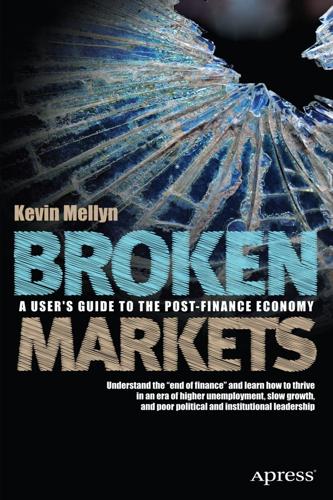
Broken Markets: A User's Guide to the Post-Finance Economy
by
Kevin Mellyn
Published 18 Jun 2012
The short answer is cheap money over a long period of time. The Great Moderation The term Great Moderation was coined to describe the 25 years between 1983 and 2008 when inflation remained in check, the value of financial assets rose, and free market capitalism was in the ascendant position it had not occupied since the 1920s. Of course, unless you were sad to see the demise of Marxist-inspired state socialism, times were good with the exception of a few short recessions and a few special cases like Japan. It would be wrong, however, to attribute the Great Moderation to the inherent virtues of a financedriven global economy where the market rewarded good investments and punished bad ones.
…
Low and stable long-term interest rates allowed housing prices to rise and more people to afford houses. None of this was due to the genius of policymakers, though a reputed “maestro,” Alan Greenspan, occupied the chairmanship of the Board of Governors of the Federal Reserve System for 17 of the 25 years of the Great Moderation. Where the central bank and US Treasury policy was decisive during the Great Moderation was in protecting the financial economy from its own mistakes and excesses. On one level, this made sense, because the sheer scale of the financial economy relative to the real economy made the consequences of a market panic too scary to contemplate in terms of damage to real output and production.
…
The markets and the largest investment-banking operations increasingly came to believe that the authorities would step in to prevent any reckoning for financial bets gone wrong. In this sense, the Great Moderation was at least as much a product of governments as it was of markets, something that pains the heart of free-market fundamentalists. The problem is that in a free market, everyone is free to fail. Indeed, something that Joseph Schumpeter called “creative destruction” is essential to economic progress.The Great Moderation was largely a one-way bet for market participants. Financial crises of one sort or another, which affected companies ranging from Japanese and Swedish banks to Long Term Capital, an American hedge fund, continued to occur.

Capitalism 4.0: The Birth of a New Economy in the Aftermath of Crisis
by
Anatole Kaletsky
Published 22 Jun 2010
The theme in the background of this discussion will be the way in which all the global megatrends reinforced one another, first in creating the period of remarkable economic stability that came to be known as the Great Moderation and then snapping back with a vengeance in the crisis of 2007-09. CHAPTER SIX The Great Moderation Practice moderation in all things, including moderation.1 —Gaius Petronius THE GREAT MODERATION was the title chosen by Ben Bernanke for a speech he delivered in February 2004. The speech was given to celebrate and explain the U.S. economy’s escape from what had been widely expected to be a serious and prolonged recession, following the boom and bust in technology shares.
…
They had learned from the bitter experience of the 1970s that greater weight must be attached than in the past to the risks of accelerating inflation, and they had more effective tools for macroeconomic management at their disposal, because of the unexpected triumph of pure fiat money after the breakdown of Bretton Woods. The result was the spectacular success of macroeconomic stabilization described as the Great Moderation—at least until the crisis of 2007. Had governments truly followed the narrowly antiinflationary policies described by Bernanke (and still embodied in the official targets, though not the practice, of most central banks other than the Fed), the Great Moderation would probably never have happened. A much more likely outcome would have been something akin to the twenty years of stagnation in Japan. The return of active demand management was thus among the most important changes in the world economy from the late 1980s onward.
…
But these days they must say that they are acting to prevent deflation, or even to increase inflation, instead of openly admitting that they are trying to reduce unemployment or support economic growth. Chapter 11 explains the economic ideology behind this strange rhetorical deformation. What matters in the present discussion is how the central bankers have actually behaved since the start of the Great Moderation. If we focus on actions, rather than rhetoric, it is clear that the Great Moderation began when policymakers, first in America and then in other countries, returned to the traditional Keynesian objectives of minimizing unemployment and stabilizing growth. In the United States, the return to demand management began as early as the summer of 1982, when a three-year recession and the bankruptcy of the Mexican government persuaded the Fed that its experiment with monetarism had gone too far.
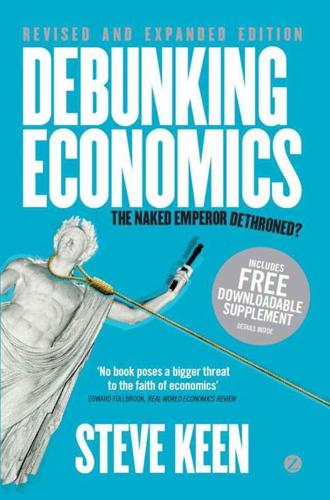
Debunking Economics - Revised, Expanded and Integrated Edition: The Naked Emperor Dethroned?
by
Steve Keen
Published 21 Sep 2011
When New Keynesian economists incorporated this in their model, they introduced the neoclassical concept of an ‘equilibrium’ real rate of interest (which is unobservable), so that if actual inflation and the rate of growth were equal to their target levels, the cash rate should be equal to the inflation rate plus this unobservable ‘equilibrium’ rate. After the crisis hit, Taylor himself blamed it on the Fed deviating from his rule: Why did the Great Moderation end? In my view, the answer is simple. The Great Moderation ended because of a ‘Great Deviation,’ in which economic policy deviated from what was working well during the Great Moderation. Compared with the Great Moderation, policy became more interventionist, less rules-based, and less predictable. When policy deviated from what was working well, economic performance deteriorated. And lo and behold, we had the Great Recession.
…
The model generates as sudden a turnaround in output as any neoclassical model hit by ‘exogenous shocks,’ but unlike in those models there is continuity between the Great Moderation and the Great Recession. 14.14 Modeling the Great Moderation and the Great Recession – inflation, unemployment and debt 14.15 The Great Moderation and the Great Recession – actual inflation, unemployment and debt 14.16 Modeling the Great Moderation and the Great Recession – output The model’s numbers and the magnitude of its crash are hypothetical,16 and the main question is whether its qualitative behavior matches that of the US economy – which it clearly does.
…
A catalogue record for this book is available from the British Library Library of Congress Cataloging in Publication Data available eISBN 9781780322209 CONTENTS Tables, figures and boxes Preface to the second edition Preface to the first edition 1 Predicting the ‘unpredictable’ 2 No more Mr Nice Guy Part 1 Foundations: the logical flaws in the key concepts of conventional economics 3 The calculus of hedonism 4 Size does matter 5 The price of everything and the value of nothing 6 To each according to his contribution Part 2 Complexities: issues omitted from standard courses that should be part of an education in economics 7 The holy war over capital 8 There is madness in their method 9 Let’s do the Time Warp again 10 Why they didn’t see it coming 11 The price is not right 12 Misunderstanding the Great Depression and the Great Recession Part 3 Alternatives: different ways to think about economics 13 Why I did see ‘It’ coming 14 A monetary model of capitalism 15 Why stock markets crash 16 Don’t shoot me, I’m only the piano 17 Nothing to lose but their minds 18 There are alternatives Bibliography Index TABLES, FIGURES AND BOXES Tables 2.1 Anticipations of the housing crisis and recession 3.1 ‘Utils’ and change in utils from consuming bananas 3.2 Utils arising from the consumption of two commodities 3.3 The commodities in Sippel’s ‘Revealed Preference’ experiment 4.1 Demand schedule for a hypothetical monopoly 4.2 Costs for a hypothetical monopoly 4.3 Sales and costs determine the level of output that maximizes profit 4.4 Cost and revenue for a ‘perfectly competitive’ industry identical in scale to hypothetical monopoly 5.1 Input and output data for a hypothetical firm 5.2 Cost drawings for the survey by Eiteman and Guthrie 5.3 Empirical research on the nature of cost curves 7.1 Sraffa’s hypothetical subsistence economy 7.2 Production with a surplus 7.3 Relationship between maximum and actual rate of profit and the wage share of surplus 7.4 The impact of the rate of profit on the measurement of capital 10.1 Anderson’s ranking of sciences 12.1 The alleged Money Multiplier process 13.1 A hypothetical example of the impact of decelerating debt on aggregate demand 13.2 The actual impact of decelerating debt on aggregate demand 14.1 A pure credit economy with paper money 14.2 The dynamics of a pure credit economy with no growth 14.3 Net incomes 14.4 A growing pure credit economy with electronic money 15.1 Von Neumann’s procedure for working out a numerical value for utility 15.2 The Allais ‘Paradox’ 15.3 The Allais ‘Paradox’ Part 2 16.1 The solvability of mathematical models 17.1 Marx’s unadjusted value creation table, with the rate of profit dependent upon the variable-to-constant ratio in each sector 17.2 Marx’s profit distribution table, with the rate of profit now uniform across sectors 17.3 Steedman’s hypothetical economy 17.4 Steedman’s physical table in Marx’s value terms 17.5 Steedman’s prices table in Marx’s terms 17.6 Profit rate and prices calculated directly from output/wage data 17.7 Marx’s example where the use-value of machinery exceeds its depreciation Figures 2.1 US inflation and unemployment from 1955 2.2 Bernanke doubles base money in five months 2.3 Private debt peaked at 1.7 times the 1930 level in 2009 3.1 Rising total utils and falling marginal utils from consuming one commodity 3.2 Total utils from the consumption of two commodities; 3.3 Total ‘utils’ represented as a ‘utility hill’ 3.4 The contours of the ‘utility hill’ 3.5 Indifference curves: the contours of the ‘utility hill’ shown in two dimensions 3.6 A rational consumer’s indifference map 3.7 Indifference curves, the budget constraint, and consumption 3.8 Deriving the demand curve 3.9 Upward-sloping demand curve 3.10 Separating out the substitution effect from the income effect 3.11 Engel curves show how spending patterns change with increases in income 3.12 A valid market demand curve 3.13 Straight-line Engel ‘curves’ 3.14 Economic theory cannot rule out the possibility that a market demand curve may have a shape like this, rather than a smooth, downward-sloping curve 4.1 Leijonhufvud’s ‘Totems’ of the Econ tribe 4.2 Stigler’s proof that the horizontal firm demand curve is a fallacy 4.3 Profit maximization for a monopolist: marginal cost equals marginal revenue, while price exceeds marginal cost 4.4 Profit maximization for a perfectly competitive firm: marginal cost equals marginal revenue, which also equals price 4.5 A supply curve can be derived for a competitive firm, but not for a monopoly 4.6 A competitive industry produces a higher output at a lower cost than a monopoly 4.7 The standard ‘supply and demand’ explanation for price determination is valid only in perfect competition 4.8 Double the size, double the costs, but four times the output 4.9 Predictions of the models and results at the market level 4.10 Output behavior of three randomly selected firms 4.11 Profit outcomes for three randomly selected firms 4.12 Output levels for between 1- and 100-firm industries 5.1 Product per additional worker falls as the number of workers hired rises 5.2 Swap the axes to graph labor input against quantity 5.3 Multiply labor input by the wage to convert Y-axis into monetary terms, and add the sales revenue 5.4 Maximum profit occurs where the gap between total cost and total revenue is at a maximum 5.5 Deriving marginal cost from total cost 5.6 The whole caboodle: average and marginal costs, and marginal revenue 5.7 The upward-sloping supply curve is derived by aggregating the marginal cost curves of numerous competitive firms 5.8 Economic theory doesn’t work if Sraffa is right 5.9 Multiple demand curves with a broad definition of an industry 5.10 A farmer who behaved as economists advise would forgo the output shown in the gap between the two curves 5.11 Capacity utilization over time in the USA 5.12 Capacity utilization and employment move together 5.13 Costs determine price and demand determines quantity 5.14 A graphical representation of Sraffa’s (1926) preferred model of the normal firm 5.15 The economic theory of income distribution argues that the wage equals the marginal product of labor 5.16 Economics has no explanation of wage determination or anything else with constant returns 5.17 Varian’s drawing of cost curves in his ‘advanced’ microeconomics textbook 6.1 The demand for labor curve is the marginal revenue product of labor 6.2 The individual’s income–leisure trade-off determines how many hours of labor he supplies 6.3 An upward-sloping individual labor supply curve 6.4 Supply and demand determine the equilibrium wage in the labor market 6.5 Minimum wage laws cause unemployment 6.6 Demand management policies can’t shift the supply of or demand for labor 6.7 Indifference curves that result in less work as the wage rises 6.8 Labor supply falls as the wage rises 6.9 An individual labor supply curve derived from extreme and midrange wage levels 6.10 An unstable labor market stabilized by minimum wage legislation 6.11 Interdependence of labor supply and demand via the income distributional effects of wage changes 7.1 The standard economic ‘circular flow’ diagram 7.2 The rate of profit equals the marginal product of capital 7.3 Supply and demand determine the rate of profit 7.4 The wage/profit frontier measured using the standard commodity 9.1 Standard neoclassical comparative statics 9.2 The time path of one variable in the Lorenz model 9.3 Structure behind the chaos 9.4 Sensitive dependence on initial conditions 9.5 Unstable equilibria 9.6 Cycles in employment and income shares 9.7 A closed loop in employment and wages share of output 9.8 Phillips’s functional flow block diagram model of the economy 9.9 The component of Phillips’s Figure 12 including the role of expectations in price setting 9.10 Phillips’s hand drawing of the output–price-change relationship 9.11 A modern flow-chart simulation program generating cycles, not equilibrium 9.12 Phillips’s empirically derived unemployment–money-wage-change relation 10.1 Hicks’s model of Keynes 10.2 Derivation of the downward-sloping IS curve 10.3 Derivation of the upward-sloping LM curve 10.4 ‘Reconciling’ Keynes with ‘the Classics’ 10.5 Unemployment–inflation data in the USA, 1960–70 10.6 Unemployment–inflation data in the USA, 1950–72 10.7 Unemployment–inflation data in the USA, 1960–80 10.8 The hog cycle 11.1 Supply and demand in the market for money 11.2 The capital market line 11.3 Investor preferences and the investment opportunity cloud 11.4 Multiple investors (with identical expectations) 11.5 Flattening the IOC 11.6 How the EMH imagines that investors behave 11.7 How speculators actually behave 12.1 Inflation and base money in the 1920s 12.2 Inflation and base money in the post-war period 12.3 Bernanke’s massive injection of base money in QE1 12.4 Change in M0 and unemployment, 1920–40 12.5 Change in M1 and unemployment, 1920–40 12.6 Change in M0 and M1, 1920–40 12.7 M0–M1 correlation during the Roaring Twenties 12.8 M0–M1 correlation during the Great Depression 12.9 Bernanke’s ‘quantitative easing’ in historical perspective 12.10 The volume of base money in Bernanke’s ‘quantitative easing’ in historical perspective 12.11 Change in M1 and inflation before and during the Great Recession 12.12 The money supply goes haywire 12.13 Lindsey, Orphanides, Rasche 2005, p. 213 12.14 The empirical ‘Money Multiplier’, 1920–40 12.15 The empirical ‘Money Multiplier’, 1960–2012 12.16 The disconnect between private and fiat money during the Great Recession 13.1 Goodwin’s growth cycle model 13.2 My 1995 Minsky model 13.3 The vortex of debt in my 1995 Minsky model 13.4 Cyclical stability with a counter-cyclical government sector 13.5 Australia’s private debt-to-GDP ratio, 1975–2005 13.6 US private debt to GDP, 1955–2005 13.7 Aggregate demand in the USA, 1965–2015 13.8 US private debt 13.9 The change in debt collapses as the Great Recession begins 13.10 The Dow Jones nosedives 13.11 The correlation of debt-financed demand and unemployment 13.12 The housing bubble bursts 13.13 The Credit Impulse and change in employment 13.14 Correlation of Credit Impulse and change in employment and GDP 13.15 Relatively constant growth in debt 13.16 The biggest collapse in the Credit Impulse ever recorded 13.17 Growing level of debt-financed demand as debt grew faster than GDP 13.18 The two great debt bubbles 13.19 Change in nominal GDP growth then and now 13.20 Real GDP growth then and now 13.21 Inflation then and now 13.22 Unemployment then and now 13.23 Nominal private debt then and now 13.24 Real debt then and now 13.25 Debt to GDP then and now 13.26 Real debt growth then and now 13.27 The collapse of debt-financed demand then and now 13.28 Debt by sector – business debt then, household debt now 13.29 The Credit Impulse then and now 13.30 Debt-financed demand and unemployment, 1920–40 13.31 Debt-financed demand and unemployment, 1990–2011 13.32 Credit Impulse and change in unemployment, 1920–40 13.33 Credit Impulse and change in unemployment, 1990–2010 13.34 The Credit Impulse leads change in unemployment 14.1 The neoclassical model of exchange as barter 14.2 The nature of exchange in the real world 14.3 A nineteenth-century private banknote 14.4 Bank accounts 14.5 A credit crunch causes a fall in deposits and a rise in reserves in the bank’s vault 14.6 A bank bailout’s impact on loans 14.7 A bank bailout’s impact on incomes 14.8 A bank bailout’s impact on bank income 14.9 Bank income grows if debt grows more rapidly 14.10 Unemployment is better with a debtor bailout 14.11 Loans grow more with a debtor bailout 14.12 Profits do better with a debtor bailout 14.13 Bank income does better with a bank bailout 14.14 Modeling the Great Moderation and the Great Recession – inflation, unemployment and debt 14.15 The Great Moderation and the Great Recession – actual inflation, unemployment and debt 14.16 Modeling the Great Moderation and the Great Recession – output 14.17 Income distribution – workers pay for the debt 14.18 Actual income distribution matches the model 14.19 Debt and GDP in the model 14.20 Debt and GDP during the Great Depression 15.1 Lemming population as a constant subject to exogenous shocks 15.2 Lemming population as a variable with unstable dynamics 17.1 A graphical representation of Marx’s dialectics Boxes 10.1 The Taylor Rule 13.1 Definitions of unemployment PREFACE TO THE SECOND EDITION Debunking Economics was far from the first book to argue that neoclassical economics was fundamentally unsound.

Unfinished Business
by
Tamim Bayoumi
As a result, they had to scramble to provide adequate support to the financial sector when the crisis hit. Similar blinkers were leading to an underestimation of macroeconomic risks, but through a different process. * * * The Great Moderation and Overestimation of Monetary Policy’s Effectiveness If the efficient markets hypothesis was a theory, the “great moderation” was an observation. More precisely, the phrase the great moderation came from the observation that the volatility of US output had fallen markedly after the mid-1980s.7 This shift is sufficiently large and rapid that it stands out clearly in a graph as growth becomes noticeably less jagged after 1985 (Figure 40).
…
The instability of 1960–85 suddenly switches to relative stability. Formal tests across a range of measures confirmed the impression that that there was a sudden improvement in economic stability. By contrast, there was no noticeable increase in growth, explaining why this observation is dubbed the “great moderation” rather than (say) “the great acceleration”. It was the inferences from the great moderation that led to policy makers to overestimate their ability to response to macroeconomic shocks. More stable output implied a smoother business cycle, the regular process by which extended periods of economic expansion are interrupted by short recessions in which output drops.
…
This was what would be expected if good luck was the driving force, as the effects would be uniform regardless of the length of the interval being examined.9 As time went on, however, it became conventional wisdom to attribute the bulk of the great moderation to better monetary policy.10 The timing worked as the rapid reduction of US output volatility occurred soon after Paul Volcker was appointed Chairman of the Federal Reserve and abruptly diverged from the relaxed approach to inflation taken by the Federal Reserve in the 1970s. More generally, the synchronous fall in inflation and output volatility occurred at different times in different countries. Since tighter monetary policy was the driver of lower inflation, this provided strong evidence for a causal link between tighter monetary policy and the great moderation. In response to the observation that there was no change in behavior over the business cycle, proponents of the tighter monetary policy explanation argued that the earlier work looking at the business cycle had not included measures of inflation expectations.
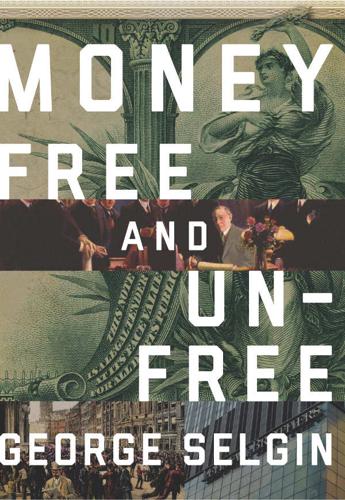
Money Free and Unfree
by
George A. Selgin
Published 14 Jun 2017
Fiscal stabilizers appear, on the other hand, to have played no significant part in the post-1984 decline in output volatility (as well as in both the average rate and the volatility of inflation) known as the “Great Moderation.” Consequently, that episode seems especially likely to reflect a genuine if belated improvement in the conduct of monetary policy. We next turn to research concerning this possibility. THE “GREAT MODERATION” The beginning of PaulVolcker’s second term as Fed chairman coincided with a dramatic decline in the volatility of real output that lasted through the Alan Greenspan era. Annual real GDP growth, for example, was less than half as volatile from 1984 to 2007 as it was from 1959 to 1983.
…
Many, including Alan Blinder (1998), Romer (1999), Thomas Sargent (1999), and Bernanke (2004), have regarded this “Great Moderation” of inflation and real output as evidence of a substantial improvement in the Fed’s conduct of monetary policy—a turn to what Blinder (1998: 49) terms “enlightened discretion.”18 Bernanke (2004), conceding that the high inflation in the 1970s and early 1980s was largely due to excessive monetary expansion aimed at trying to maintain a below-natural rate of unemployment, argues similarly that Fed authorities learned over the course of that episode that they could not exploit a stable Phillips curve; Romer (1999: 43) claims that, after the early 1980s, the Fed “had a steadier hand on the macroeconomic tiller.”19 The “enlightened discretion” view has, however, been challenged by statistical studies pointing to moderating forces other than improved monetary policy. A study by James Stock and Mark Watson (2002: 200; see also 2005) attributes between 75 percent and 90 percent of the Great Moderation in U.S. output volatility to “good luck in the form of smaller economic disturbances” rather than improved monetary policy. Subsequent research has likewise tended to downplay the contribution of improved monetary policy, either by lending support to the “good luck” hypothesis or by attributing the Great Moderation to financial innovations, an enhanced “buffer stock” role for manufacturing inventories, an increase in the importance of the service sector relative to that of manufacturing, a change in the age composition of the U.S. population, and other sorts of structural change.20 As usual, there are exceptions, prominent among which is the study of Jordi Gali and Luca Gambetti (2009), which finds that improved monetary policy, consisting of an increased emphasis on inflation targeting in setting the federal funds target, did play an important part in the Great Moderation.
…
Subsequent research has likewise tended to downplay the contribution of improved monetary policy, either by lending support to the “good luck” hypothesis or by attributing the Great Moderation to financial innovations, an enhanced “buffer stock” role for manufacturing inventories, an increase in the importance of the service sector relative to that of manufacturing, a change in the age composition of the U.S. population, and other sorts of structural change.20 As usual, there are exceptions, prominent among which is the study of Jordi Gali and Luca Gambetti (2009), which finds that improved monetary policy, consisting of an increased emphasis on inflation targeting in setting the federal funds target, did play an important part in the Great Moderation. Most authorities do attribute the substantial decline in both the mean rate of inflation and in inflation volatility since the early 1980s to improved monetary policy. Yet, even here, the contribution of enlightened monetary policy may be less than it appears to be: according to Robert Barro and David Gordon’s (1983) theory of monetary policy in the presence of a time-inconsistent temptation to improve current-period real outcomes using surprise inflation, the higher the natural rate of unemployment, the greater the inflationary bias in the conduct of monetary policy, other things equal.
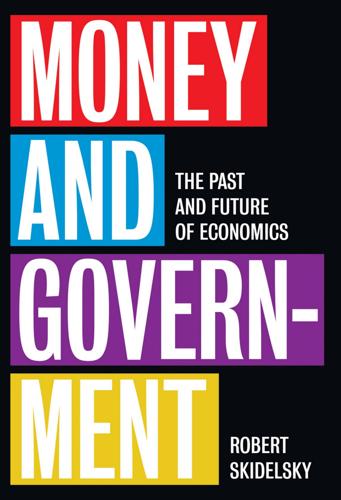
Money and Government: The Past and Future of Economics
by
Robert Skidelsky
Published 13 Nov 2018
Keynesian and neo-classical views of the economy 204 21. The Phillips Curve, 1948–1957 205 22. Expectations-augmented Phillips Curve 207 23. The Sargent-Lucas Phillips Curve 210 xiii F ig u r e s 24. Output growth in the advanced economies during the Great Moderation 215 25. CPI inflation in the advanced economies during the Great Moderation 216 26. Comparing the effects of the 1929 and 2008 crash 218 27. UK tax revenue and spending, 1997–2010 223 28. Government budget deficits, 2001–2015 224 29. Government net debt, 2001–2015 224 30. Estimates of UK cyclically adjusted budget deficit, 2009–2018 229 31.
…
Adjustment of labour supply in response to an external shock 241 35. Post-crash outcomes: UK, USA and Eurozone 242 36. Post-crash outcomes: Germany, Greece and Eurozone 243 37. UK austerity – counterfactual medicine, 2007–2013 244 38. The transmission mechanism of monetary policy 250 39. Output growth and inflation in the advanced economies during the Great Moderation 253 40. Cutting interest rates: central banks’ base rates, 2003–2016 254 41. Liquidity trap 255 42. Four key monetary debates 260 43. Good and bad outcomes of QE 264 44. Growth in UK bank (M4) lending, 2000–2016 266 45. UK exchange rate and current account, and QE, 2006–2016 267 46.
…
Total cross-border capital inflows, 1990–2011 337 66. UK public investment as a share of total investment, 1948–2011 354 67. GDP growth in the OECD, 1986–2016 369 xv This page intentionally left blank Preface We are at a junction where the whole of macroeconomic policy is up for grabs. Everything we thought settled by the Great Moderation of the fifteen pre-recession years, a period of exceptional stability in Western economies, has been thrown into turmoil by the scale of the collapse of 2008–9 and the feebleness of the recovery from it. That poses a mighty challenge for the ruling economic doctrines. Policy will shift, is already changing; textbooks will have to be revised.
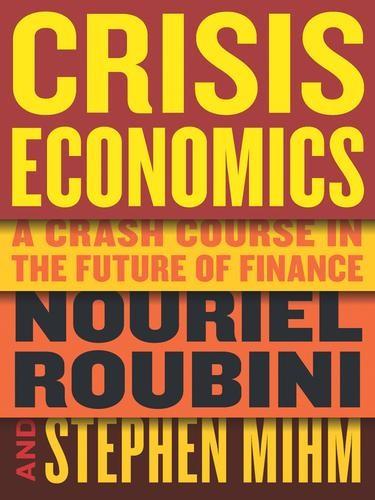
Crisis Economics: A Crash Course in the Future of Finance
by
Nouriel Roubini
and
Stephen Mihm
Published 10 May 2010
Garber, “The Collapse of the Bretton Woods Fixed Exchange Rate System,” ibid., 461-494. 25 Every silver lining: Timothy Curry, “The LDC Debt Crisis,” in FDIC Division of Research and Statistics, History of the Eighties: Lessons for the Future (Washington: FDIC, 1997), 1:191-210. 26 the Great Moderation: James H. Stock and Mark W. Watson, “Has the Business Cycle Changed and Why?” NBER Macroeconomics Annual 2002 17 (2003): 159-218. 26 What accounted for the Great Moderation: The literature on the Great Moderation is extensive. See, for example, Shaghil Ahmed, Andrew Levin, and Beth Anne Wilson, “Recent U.S. Macroeconomic Stability: Good, Policies, Good Practices, or Good Luck?” Review of Economics and Statistics 86 (August 2004): 824-32; James Kahn, Margaret McConnell, and Gabriel Perez-Quiros, “On the Causes of the Increased Stability of the U.S.
…
In the United States, flirtations with disaster and financial crisis, like the stock market crash of 1987, did not metastasize into anything more destructive: the 1987 crash did not cause a recession, and the 1990-91 recession was relatively short and shallow, lasting only eight months. And so the Great Moderation was born: an era of low inflation, high growth, and mild recessions. What accounted for the Great Moderation was anyone’s guess. Some economists argued that the climate of business and financial deregulation and technological innovation had created a more flexible and adaptable economic system, one that could more readily handle the ups and downs of the business cycle.
…
Review of Economics and Statistics 86 (August 2004): 824-32; James Kahn, Margaret McConnell, and Gabriel Perez-Quiros, “On the Causes of the Increased Stability of the U.S. Economy,” Federal Reserve Bank of New York, Economic Policy Review 8 (2002): 183-202; Jordi Gali and Luca Gambetti, “On the Sources of the Great Moderation,” American Economic Journal: Macroeconomics 1 (2009): 26-57. 27 “optimistic for the future”: Ben S. Bernanke, “The Great Moderation,” remarks to the Eastern Economic Association, Washington, D.C., February 20, 2004, online at http://www.federalreserve.gov/boarddocs/speeches/2004/20040220/default.htm. 27 Japan in the 1980s: Paul Krugman, The Return of Depression Economics (New York: W.W.
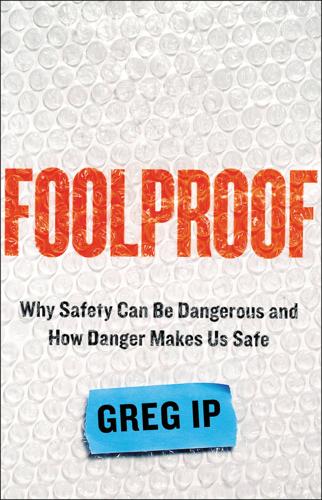
Foolproof: Why Safety Can Be Dangerous and How Danger Makes Us Safe
by
Greg Ip
Published 12 Oct 2015
The twenty-five years before the global financial crisis were unusually peaceful for the economy; recessions were rare and mild, inflation was low and stable, and periodic financial crises, whether the stock market crash of 1987 or the Asian financial crisis of 1997, were contained by the global fire brigades—the Fed, the Treasury, and the International Monetary Fund. Economists called this era the “Great Moderation,” and credited it to changes in how businesses operated—using fewer inventories, for example—and a more disciplined, more nimble Federal Reserve, able to snuff out both inflation and recession. The global economy in 2008 was like a forest that hadn’t burned in decades; it was choking with the fuel of leverage, risk, and complacency.
…
With steady growth and stable inflation, the 1990s became known as the “Goldilocks” economy: not too hot, not too cold. In 2002 economists Mark Watson and James Stock came up with a grander label. They fed a wealth of data into their computer models and identified a remarkable decline in the volatility of growth, inflation, and interest rates since 1984, dubbing this period “the Great Moderation.” Theories abounded as to why the business cycle had been tamed: some said it was good luck, including fewer oil price shocks. Some credited better business practice, including tighter control of inventories. Ben Bernanke, an economist steeped in the theory and history of monetary policy who joined the Fed in 2002, credited one factor above all: the Fed had become far more adept at nipping inflation in the bud.
…
This was more or less what happened in the 1970s and early 1980s. That course of action, Greenspan wryly observed, “can be readily dismissed.” The successful containment of both inflation and banking instability was not enough to bring on a crisis; attitudes about risk had to change. And that they did. By making the economy seem safer, the Great Moderation also changed attitudes about debt. The Great Depression had left a lasting wariness of debt. When, in the postwar period, the newly prosperous middle class bought homes, cars, and appliances and rediscovered installment credit, the rapid growth in consumer debt brought no end of angst. “The bald, unadorned figures of consumer-credit expansion smell of a credit binge,” Fortune magazine warned in 1956, in an article for which Alan Greenspan, then a young consultant, provided the data.

Never Let a Serious Crisis Go to Waste: How Neoliberalism Survived the Financial Meltdown
by
Philip Mirowski
Published 24 Jun 2013
With the shallow hindsight of seven years, these assertions still hold the power to cause the toughest orthodox neoclassicist to cringe with embarrassment: One of the most striking features of the economic landscape over the last twenty years or so has been a substantial decline in macroeconomic volatility . . . Three types of explanations have been suggested . . . structural change, macroeconomic policies, and good luck . . . My view is that improvements in monetary policy, though certainly not the only factor, have probably been an important source of the Great Moderation . . . the policy explanation for the Great Moderation deserves more credit than it has received in the literature.48 His repeated assertion of this thesis in the intervening years went some distance in explaining why Bernanke’s Fed did essentially nothing to curb the worst financial abuses that led up to the crisis of 2007–8; Bernanke had been insisting throughout that the mortgage market was sound, hedge funds were “disciplined,” and the banks solid right up to the onset of the failure of Lehman Brothers.
…
This self-congratulation persisted even though a few inside figures such as the Fed governor Ned Gramlich (who was forced to resign in 2005) and the Atlanta Fed president, Jack Guynn, had been sounding the alarm since 2005. It is difficult to convey in any short space just how much the orthodox economics profession loved this trope of the Great Moderation and its ballyhooed prophet; so much so that it spawned a huge academic literature in its own right. Not only did highly ranked economics journals continue to publish articles discussing the Great Moderation long after the crash rendered the very idea ludicrous, but (having no shame) some tone-deaf economists even argued that the crisis had in no way impugned the existence of a Great Moderation.
…
MacKenzie, An Engine, Not a Camera and “The Credit Crisis as a Problem in the Sociology of Knowledge”; Mehrling, Fischer Black and the Revolutionary Idea of Finance. 45 MacKenzie, An Engine; O’Neill, “Black Scholes and the Normal Distribution”; Sherman, “Revolver.” 46 Bullock, “Friedman Economics”; Khademian, “The Pracademic and the Fed,” p. 142; Bernanke, congressional testimony, 2006. 47 The phrase was actually first coined by the Harvard economists James Stock and Mark Watson in 2002. 48 Bernanke, “The Great Moderation.” 49 Bernanke, congressional testimony, 2007; Leonard, “Alan Greenspan’s Housing Bubble Coffee Break”; Olivier Coibion and Yuri Gorodnichenko, “Did the Great Recession Mean the End of the Great Moderation?” at www.voxeu.org/index.php?q=node/4496. 50 Khademian, “The Pracademic and the Fed”; Lowenstein, “The Villain.” 51 Although one might want to insist upon the doctrinal differences between Randian libertarians and the Chicago School for some conceptual purposes, it is noteworthy that Milton Friedman was a vocal supporter of the Greenspan record in the press (Auerbach, Deception and Abuse at the Fed, p. 246n54). 52 Khademian, “The Pracademic and the Fed,” p. 146. 53 Bullock, “Friedman Economics.” 54 Partnoy, “Sunlight Shows Cracks in Crisis Rescue Story”; Chan and Protess, “Cross Section of Rich Invested with Fed”; Ivry, Keoun, and Kuntz, “Secret Fed Loans Helped Banks Net $13 Billion.” 55 Bernanke has changed his tune a few times over just why the Fed had to let Lehman fail.
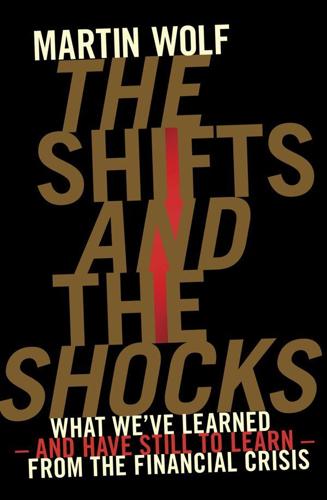
The Shifts and the Shocks: What We've Learned--And Have Still to Learn--From the Financial Crisis
by
Martin Wolf
Published 24 Nov 2015
Gordon Brown, ‘Speech to the Labour Party Conference in Brighton’, 27 September 2004, http://news.bbc.co.uk/1/hi/uk_politics/3694046.stm. 3. Ben Bernanke, ‘The Great Moderation’, 20 February 2004, http://www.federalreserve.gov/boarddocs/speeches/2004/20040220/default.htm. 4. James H. Stock and Mark W. Watson coined the term ‘great moderation’ in ‘Has the Business Cycle Changed and Why?’, in Mark Gertler and Kenneth Rogoff, eds, NBER Macroeconomic Annual 2012, vol. 17 (Cambridge, MA: MIT Press, 2003), http://www.nber.org/chapters/c11075.pdf. 5. Bernanke, ‘The Great Moderation’. 6. Foremost among the economists whose views were widely ignored were the late Hyman Minsky and Charles Kindleberger.
…
It focused particularly on the implications of the linked phenomena of the yawning US current-account deficits, the accumulations of foreign-currency reserves by emerging economies, and the imbalances within the Eurozone.2 That discussion arose naturally from the consideration of finance in my earlier book, Why Globalization Works, published in 2004.3 That book, while arguing strongly in favour of globalization, stressed the heavy costs of financial crises. Nevertheless, I did not expect these trends to end in so enormous a financial crisis, so comprehensive a rescue, or so huge a turmoil within the Eurozone. My failure was not because I was unaware that what economists called the ‘great moderation’ – a period of lower volatility of output in the US, in particular, between the late 1980s and 2007 – had coincided with large and potentially destabilizing rises in asset prices and debt.4 It was rather because I lacked the imagination to anticipate a meltdown of the Western financial system.
…
Introduction: ‘We’re not in Kansas any more’1 No longer the boom-bust economy, Britain has had the lowest interest rates for forty years. And no longer the stop-go economy, Britain is now enjoying the longest period of sustained economic growth for 200 years. Gordon Brown, 2004 2 My view is that improvements in monetary policy, though certainly not the only factor, have probably been an important source of the Great Moderation. In particular, I am not convinced that the decline in macroeconomic volatility of the past two decades was primarily the result of good luck, as some have argued, though I am sure good luck had its part to play as well. Ben Bernanke, Governor of the Federal Reserve Board, 20043 The past is a foreign country.

Rethinking the Economics of Land and Housing
by
Josh Ryan-Collins
,
Toby Lloyd
and
Laurie Macfarlane
Published 28 Feb 2017
The process would then go into reverse, with business investment falling, banks defaulting and unwilling to lend and debt-deflation ensuing. Minsky’s writings were mainly focused on the role of firms and their interaction with the banking system rather than households and mortgage credit. However, his theories were highly applicable to the financial crisis of 2007–8, when a long period of apparent stability (the ‘Great Moderation’) and rising asset prices led to increasingly risky behaviour by households and banks in borrowing and lending against land and housing. Indeed, the crisis was termed a ‘Minsky moment’ because his work seemed to describe so well pre- and post-crisis dynamics (Minsky was largely ignored prior to the crisis).
…
In addition, as noted in section 5.5, mortgage lending and home equity withdrawal can support consumption and demand over long periods. This can help give the appearance that the economy is healthy even as productivity or wages are stagnating. Many advanced economies enjoyed an unprecedented period of steady growth coupled with low inflation from the 1990s and up to the crisis – described as the ‘Great Moderation’ – that may have reassured central banks that policy was working (Bezemer and Grydaki, 2014). Mervyn King described the 1990s as the ‘NICE’ decade – a period of ‘non-inflationary, consistent expansion’ (King, 2003, p. 3). In the 2000s, financial innovations, including RMBS, were seen as spreading risk rather than amplifying it.
…
The evidence suggests that rising land values have been the major contributor to the rise in general economic inequality of recent decades, and the growing wealth gap between those who own landed property and those who must rent it. In the UK, the US and many other advanced economies, economic growth – consumption and investment – appears now to be increasingly dependent on land values, largely embodied in house prices. With hindsight, the ‘Great Moderation’ of the early 1990s up to the mid-2000s, when economies enjoyed low consumer price inflation and steady growth, might be renamed the ‘Great Asset-Price Inflation’. Consumption growth during this period was propped up by mortgage equity withdrawal from rapidly increasing house and land prices, itself driven by a huge expansion in land-related lending by the banking sector.
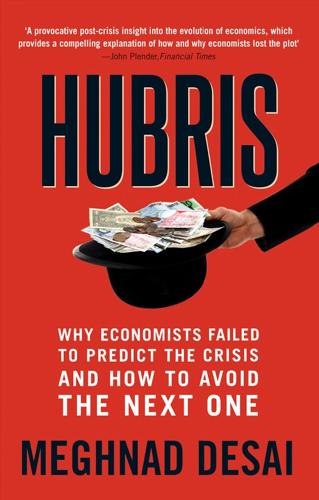
Hubris: Why Economists Failed to Predict the Crisis and How to Avoid the Next One
by
Meghnad Desai
Published 15 Feb 2015
By mid-2007, two events had taken place, in quick succession, which indicated that the global economy was changing direction. The first occurred in the autumn of 2006 when the US housing market bubble burst; this was followed by the collapse on the Shanghai stock market in February 2007. These events were, at the time, viewed as isolated incidents, unconnected to the larger web of the global economy. During the Great Moderation, words like capitalism and business cycles were no longer a part of the vocabulary of modern economics used by self-respecting economics departments. Perhaps because of this, when the crisis finally hit, its severity took some time to register. Just as in World War I, belligerent nations expected the troops to be home within four months, by Christmas, many economists took the view that the crisis was temporary and self-correcting.
…
It is hard to remember now that between 1992 and 2007 the developed and emerging economies enjoyed an unprecedentedly long period of growth with low inflation. These good things were attributed to globalization just as much as it is being blamed for the present slump. This was the period economists call the Great Moderation as quarrels among them about how the economy worked ceased after 30 years of debate (of course, they have resumed now). Mervyn (now Lord) King, the former Governor of the Bank of England, looked forward in 2005 to the years ahead of non-inflationary continuous expansion (NICE). How did that era end so suddenly?
…
The role of the government was to lay down a medium-term policy framework for spending and borrowing so that private agents could make their consumption plans. The task of the monetary authority was to regulate the money supply so that, given aggregate supply, the price level would not show any sustained inflationary tendency. This was the policy package of the Great Moderation. The anti-inflation stance of the Central Bank entailed making it independent of the fiscal authority. Central Bank independence became a mark of the sincerity of a government. Gordon Brown, on taking office as Chancellor in the New Labour government in 1997, immediately gave the Bank of England autonomy in determining interest rates in pursuit of an inflation target.
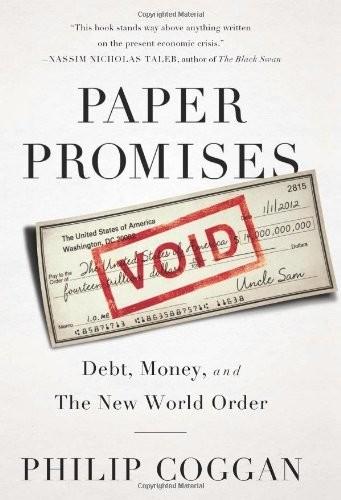
Paper Promises
by
Philip Coggan
Published 1 Dec 2011
The effect was fastest in the 1970s, when US prices more than doubled and in Britain they increased more than threefold. After that, central banks managed to get a handle on inflation. The period after 1982 has been described by economists as the ‘great moderation’ because economic growth was steady and recessions rare while inflation was generally low, except for a brief period at the end of the 1980s. The great moderation was accompanied by an extraordinary boom in asset markets. Share prices had really suffered in the 1970s, under pressure from double digit inflation and falling output; the real value of US share prices fell by 42 per cent between 1972 and 1982, according to Barclays Capital.
…
Even Goldman Sachs abandoned its cherished partnership structure in 1999. The banks could not have done this if the economy had not prospered. In a sense, the ‘great moderation’ of the 1980s and the boom in the financial sector were locked together. Banks make their money in three broad ways: from lending money at a higher rate than they borrow it; by owning assets that rise in price; and through earning fees for giving advice. The great moderation was thus ideal for their purposes. The infrequency of recessions meant that borrowers were both willing to take out more loans and more able to repay their debts.
…
Similarly, each banker sees himself in competition with rivals at other firms. The money is just a way of keeping score; they will always want more than the next guy. That means taking more risks. Their long-term prosperity is assured because they have already cashed in vast numbers of shares in previous years. From time to time during the ‘great moderation’, the risks involved in banking were revealed as banks went bust. The collapses of Johnson Matthey in 1984 and BCCI in 1991 showed that banks could go bust the old-fashioned way: by lending money to people who could not pay it back. The failure of Barings in 1995 was a more modern story, linked to the derivatives market.
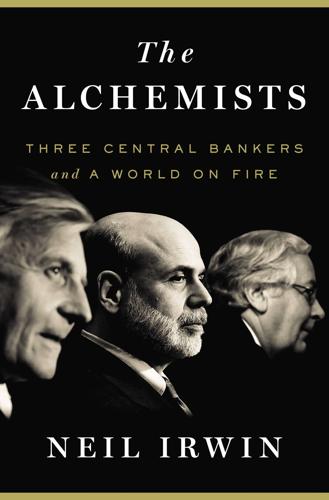
The Alchemists: Three Central Bankers and a World on Fire
by
Neil Irwin
Published 4 Apr 2013
The First Name Club FOUR. Madness, Nightmare, Desperation, Chaos: When Central Banking Goes Wrong, in Two Acts FIVE. The Anguish of Arthur Burns SIX. Spinning the Roulette Wheel in Maastricht SEVEN. Masaru Hayami, Tomato Ketchup, and the Agony of ZIRP EIGHT. The Jackson Hole Consensus and the Great Moderation Part II: PANIC, 2007–2008 NINE. The Committee of Three TEN. Over by Christmas ELEVEN. A Wall of Money Part III: AFTERMATH, 2009–2010 TWELVE. The Battle for the Fed THIRTEEN. The New Greek Odyssey FOURTEEN. The King’s Speech FIFTEEN. The Perilous Maiden Voyage of the QE2 Part IV: THE SECOND WAVE, 2011–2012 SIXTEEN.
…
Volcker’s achievement even made it easier for Alan Greenspan to maintain low and steady inflation; once people trusted that the Fed would do whatever it took to keep prices from spiraling out of control, it often took only a small interest rate move—or even mere words from the chairman—to rein in rising prices. The central bankers, having seen what can happen when they create too little money or too much, had seemed to learn their lessons, and a Goldilocks economy took hold in much of the world, a period of sustained prosperity and low inflation. The Great Inflation had ended, and the Great Moderation had begun. SIX Spinning the Roulette Wheel in Maastricht Behind the thick walls of the Bank of England, the traders were fighting a battle. And they were losing. They were buying pounds, with furious speed and on a vast scale. First £300 million, then another £300 million.
…
“I promise,” he said, “to bring all the interesting ideas I have heard in this conference to the attention of my colleagues in Tokyo. Meanwhile, I must say that one of the most important messages of the conference has been: Do not put yourself into the position of zero rates. I tell you it will be a lot more painful than you can possibly imagine.” EIGHT The Jackson Hole Consensus and the Great Moderation For the world’s central bankers, the gathering at Wyoming’s Jackson Lake Lodge in August 2005 was a moment of triumph. After centuries in which their predecessors had frequently failed to guide the nations of the world through boom and bust, inflation and deflation, they had finally, it seemed, learned all the important lessons of how to manage an economy.
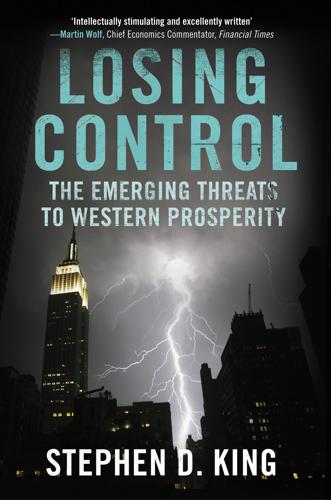
Losing Control: The Emerging Threats to Western Prosperity
by
Stephen D. King
Published 14 Jun 2010
Yet exchange rates, interest rates, commodity prices, manufactured-goods prices and all sorts of other prices are now increasingly under the emerging economies’ spell. For a while, it was possible for central banks to kid themselves that their sovereignty was still intact. From the late 1980s through to the early years of the new millennium, the developed world supposedly benefited from the ‘Great Moderation’, a process whereby inflation and interest rates gradually fell, where business cycles became less volatile and where global economic growth strengthened in relation to the 1970s and early 1980s.9 Yet this moderation was followed by possibly the worst, and certainly the most synchronized, global economic downswing since the 1930s.
…
For central banks, charged with the need to deliver price stability at the national or continental level, this change has created three significant challenges. First, inflationary surprises in either direction may have nothing to do with the amount of money swirling around an economy, or the prevailing interest rate. The Great Moderation, for example, may have been more a result of good luck rather than inspired monetary judgement, reflecting the impact of outsourcing and off-shoring on the prices of manufactured goods. Responding through monetary policy to these kinds of inflationary surprises may, thus, add to economic and financial instability.
…
The gravitational pull being exercised by the emerging markets should change for ever the cosy Western attitudes towards monetary policy. No longer are developed-world central banks in control. The key question for policymakers to ask is this: if price stability is all it’s believed to be, why was its achievement during the Great Moderation followed by one of the biggest economic crises of the past hundred years? The standard response is to argue that price stability is a necessary but not sufficient guarantee of lasting economic success. Pursued too blindly, however, it seems to me that the achievement of price stability has, in fact, become a potential source of economic failure.
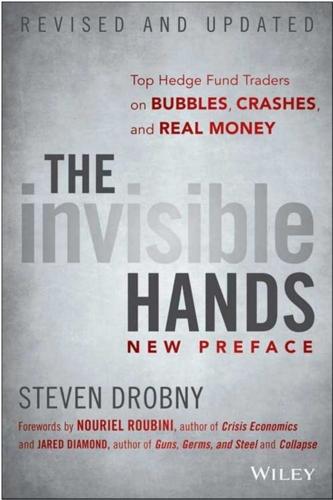
The Invisible Hands: Top Hedge Fund Traders on Bubbles, Crashes, and Real Money
by
Steven Drobny
Published 18 Mar 2010
In actuality, the market environment throughout the 1980s and 1990s rendered these decisions inconsequential as both stocks and bonds benefited greatly from falling inflation and declining interest rates. The environment later became known as the Great Moderation, and was summed up well in a 2004 speech by then-Federal Reserve Governor Ben Bernanke (see box). Bernanke on the Great Moderation The Great Moderation, the substantial decline in macroeconomic volatility over the past twenty years, is a striking economic development. Whether the dominant cause of the Great Moderation is structural change, improved monetary policy, or simply good luck is an important question about which no consensus has yet formed.
…
The largest U.S. pension fund, the California Public Employees’ Retirement System (CalPERS), for example, had a maximum allocation to equities of 25 percent, which was eventually lifted in 1984. Figure 1.3 U.S. Stocks and Bonds, 1970s SOURCE: Bloomberg; U.S. Bureau of Labor Statistics, http://www.bls.gov/CPI/; and Damodaran Online, http://pages.stern.nyu.edu/~adamodar/. The 60-40 Model and the Great Moderation Through the 1980s and 1990s, pensions continued to shift their assets out of bonds and into stocks, ultimately moving toward the now ubiquitous 60-40 policy portfolio (60 percent in stocks and 40 percent in bonds, often domestic only). The 60-40 model which became the standard benchmark by which to judge portfolio performance.
…
Consequently, we do not expect that the same forecasting model will continue to dominate in different historical or future periods, and we try to use the appropriate model for a given paradigm; (2) The choice of sample period used to estimate the forecasting model parameters is important given model instability due to institutional shifts, changes in government policy, large technology or supply shocks, and other factors (i.e., the Great Moderation that began in the mid-1980s and ended recently); and (3) Forecast combinations can sometimes be better than trying to select one “best” model. The point is that we always have an economic prior, even before data enters the equation. As such, using guidance from economic theory for quantitative and qualitative searches, we identify possible trade opportunities that can be researched further.
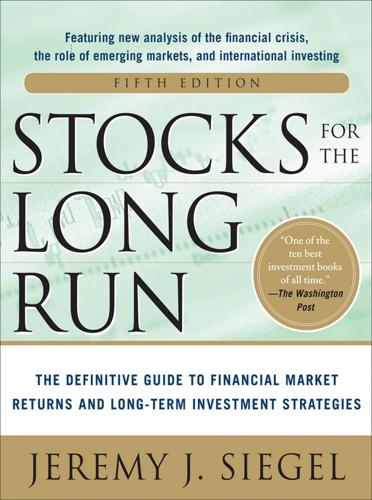
Stocks for the Long Run 5/E: the Definitive Guide to Financial Market Returns & Long-Term Investment Strategies
by
Jeremy Siegel
Published 7 Jan 2014
And the recovery from the “Great Recession,” as the economic downturn became known, was one of the slowest in U.S. history, causing many to question whether the future of the U.S. economy could ever be as bright as it appeared when the Dow Industrials crossed 14,000 in October 2007. THE CAUSE OF THE FINANCIAL CRISIS The Great Moderation The economic backdrop for the financial crisis of 2008 was the “Great Moderation,” the name that economists gave to the remarkably long and stable economic period that preceded the Great Recession. The volatility of key economic variables, such as the quarterly changes in real and nominal GDP, fell by about one-half during the 1983-2005 period compared with the average levels that existed since World War II.5 Although part of this stability was ascribed to the increase in the size of the service sector and advances in inventory control that moderated the “inventory cycle,” many attributed the reduction of economic volatility to the increasing effectiveness of monetary policy, primarily as practiced during the tenure of Alan Greenspan as Fed chairman from 1986 through 2006.
…
CONTENTS Foreword Preface Acknowledgments PART I STOCK RETURNS: PAST, PRESENT, AND FUTURE Chapter 1 The Case for Equity Historical Facts and Media Fiction “Everybody Ought to Be Rich” Asset Returns Since 1802 Historical Perspectives on Stocks as Investments The Influence of Smith’s Work Common Stock Theory of Investment The Market Peak Irving Fisher’s “Permanently High Plateau” A Radical Shift in Sentiment The Postcrash View of Stock Returns The Great Bull Market of 1982-2000 Warnings of Overvaluation The Late Stage of the Great Bull Market, 1997-2000 The Top of the Market The Tech Bubble Bursts Rumblings of the Financial Crisis Beginning of the End for Lehman Brothers Chapter 2 The Great Financial Crisis of 2008 Its Origins, Impact, and Legacy The Week That Rocked World Markets Could the Great Depression Happen Again? The Cause of the Financial Crisis The Great Moderation Subprime Mortgages The Crucial Rating Mistake The Real Estate Bubble Regulatory Failure Overleverage by Financial Institutions in Risky Assets The Role of the Federal Reserve in Mitigating the Crisis The Lender of Last Resort Springs to Action Should Lehman Brothers Have Been Saved?
…
The volatility of key economic variables, such as the quarterly changes in real and nominal GDP, fell by about one-half during the 1983-2005 period compared with the average levels that existed since World War II.5 Although part of this stability was ascribed to the increase in the size of the service sector and advances in inventory control that moderated the “inventory cycle,” many attributed the reduction of economic volatility to the increasing effectiveness of monetary policy, primarily as practiced during the tenure of Alan Greenspan as Fed chairman from 1986 through 2006. As one might expect, risk premiums on many financial instruments declined markedly during the Great Moderation as investors believed that prompt central bank action would counteract any severe shock to the economy. Indeed, the 2001 recession reinforced the market’s opinion that the economy was more stable. That recession was very mild by historical standards despite the popping of the huge tech bubble in 2000 and the consumer retrenchment that followed the 9/11 terrorist attacks.
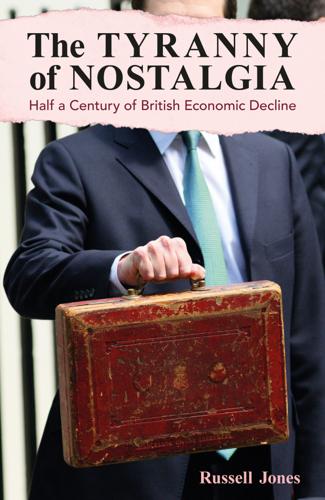
The Tyranny of Nostalgia: Half a Century of British Economic Decline
by
Russell Jones
Published 15 Jan 2023
A Very Social Science Chapter 2. Losing the Plot Chapter 3. The Barber Boom and Bust – and Beyond Chapter 4. Counter-Revolution Chapter 5. Blemished Renaissance Chapter 6. Humiliation Gives Way to the ‘NICE Decade’ Chapter 7. New Labour, New Keynesianism Chapter 8. Blair, Brown and the Great Moderation Chapter 9. The Global Financial Crisis and Great Recession Chapter 10. Poisoned Chalice Chapter 11. Theory and Policy in the Wake of the GFC Chapter 12. Flawed Recovery Chapter 13. The Brexit Referendum and Its Aftermath Chapter 14. Decline and Fall Main Sources and Further Reading Notes Foreword Born in 1967, I am certainly one of Thatcher’s children.
…
Of particular importance here was Gordon Brown’s move to make the Bank of England ‘operationally independent’, hoping to thereby ensure low inflation (which was already low), monetary stability (‘no more boom and bust’) and (again) policymaking credibility. These policy choices happened to coincide with the ‘NICE Decade’/the ‘Great Moderation’. But again, was this luck or skill? After all, lots of other countries with very different growth models, policy mixes and central banks all had a very nice decade too between 1997 and 2007. But in a competitive world, ascribing good outcomes to skill rather than luck is what gets you elected.
…
The second was characterized by a surprising election victory and an ephemeral honeymoon period that bred another bout of excessive optimism. The third yielded a traumatic sterling crisis. And the fourth saw a subsequent period of macro policy reorientation and micro policy consistency, the positive effects of which were reinforced by sympathetic global trends. This was the beginning of what has been termed the ‘Great Moderation’ or the ‘NICE Decade’ (with NICE standing for non-inflationary, consistent expansion).17 In defending his cautious, if not austere, approach as chancellor, Ken Clarke would often recite the mantra that ‘good economics is good politics’. Unfortunately, this was not the case for the Conservatives after 1992.
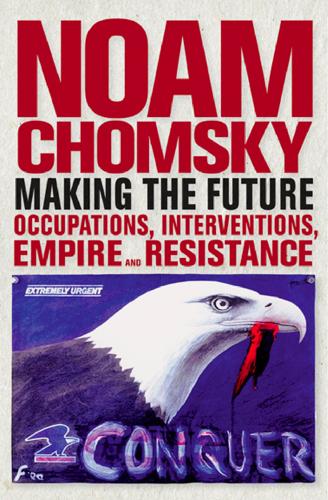
Making the Future: The Unipolar Imperial Moment
by
Noam Chomsky
Published 15 Mar 2010
The crash left the United States with levels of real unemployment comparable to the Great Depression, and in many ways worse, because under the current policies of the masters those jobs are not coming back, as they did through massive government stimulus during World War II and the following decades of the “golden age” of state capitalism. During the Great Moderation, American workers had become accustomed to a precarious existence. The rise of an American precariat was proudly hailed as a primary factor in the Great Moderation that brought slower economic growth, virtual stagnation of real income for the majority of the population, and wealth beyond the dreams of avarice for a tiny sector, mostly the agents of this historical transformation.
…
In 2004, the ILO reported that “economic and social insecurities were multiplying with globalization and the policies associated with it, as the global economic system has become more volatile and workers were increasingly shouldering the burden of risk, for instance, though pension and health care reforms.” This was what economists call the period of the Great Moderation, hailed as “one of the great transformations of modern history,” led by the United States and based on “liberation of markets,” particularly “deregulation of financial markets.” This paean to the American way of free markets was delivered by Wall Street Journal editor Gerard Baker in January 2007, just months before the system crashed—and with it the entire edifice of the economic theology on which it was based—bringing the world economy to near disaster.
…
The high priest of this magnificent economy was Alan Greenspan, described by the business press as “saintly” for his brilliant stewardship. Glorying in his achievements, he testified before Congress that they relied in part on “atypical restraint on compensation increases [which] appears to be mainly the consequence of greater worker insecurity.” The disaster of the Great Moderation was salvaged by heroic government efforts to reward the perpetrators. Neil Barofsky, stepping down on March 30 [2011] as special inspector general of the bailout program, wrote a revelatory New York Times op-ed about how the bailout worked. In theory, the legislative act that authorized the bailout was a bargain: The financial institutions would be saved by the taxpayer, and the victims of their misdeeds would be somewhat compensated by measures to protect home values and preserve homeownership.
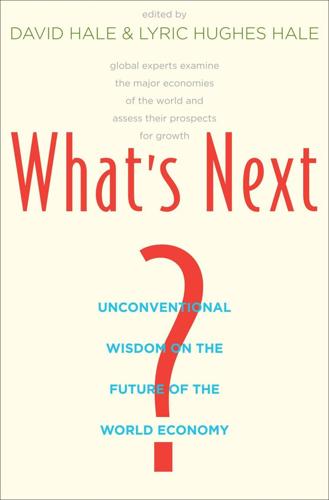
What's Next?: Unconventional Wisdom on the Future of the World Economy
by
David Hale
and
Lyric Hughes Hale
Published 23 May 2011
While the post-2007 crisis has been of appalling severity, banks were subject to more or less the same capital regime in the fifteen years from 1992 to 2007, a period celebrated as the “Great Moderation” because of its benign macro outcomes. (In qualification, a somewhat different set of rules—Basle II—was adopted in 2004, although these rules were not fully and universally implemented before the onset of the crisis in mid-2007.) If the Basle capital regime was to blame for the crisis, why was it not also responsible for the Great Moderation? As macro outcomes were so good for so long, is it really beyond dispute that the capital rules were too lax and needed to be tightened up?
…
Louis-Vincent Gave notes that Asian stock markets are now discounting high growth expectations, and thus are trading at premiums to traditional OECD markets. Gave reviews the four key factors that have driven economic performance in the West over the past decade, and suggests that some of the factors are still driving Asian growth. These factors are the emergence of three billion new producers, creation of a global economy, and the great moderation of steady low-inflation economic growth, and financial innovation. The financial revolution that drove markets in New York and London is still evolving in East Asia. East Asia is also free of two problems that now loom over the old industrial countries—a legacy of private debt that financed asset inflation and large fiscal deficits.
…
The process of globalization transferred many manufacturing industries from the advanced economies to the developing world, vastly increasing the world’s productive capacity. The transfer of industrial activity made the world economy more prosperous and more stable, which brings us to the third megatrend. • The Great Moderation: A period of unprecedented stability in inflation, unemployment, and economic cycles that created twenty years of almost continuous growth throughout the world economy that lasted right up to the recession of 2008–2009. As the world began to recover from the recurrent crises of the 1970s and learned to live with pure fiat money, governments and central banks gained previously unimagined freedom to manage their economies and stabilize both inflation and unemployment.
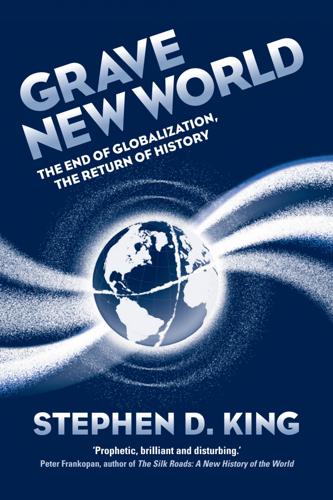
Grave New World: The End of Globalization, the Return of History
by
Stephen D. King
Published 22 May 2017
Over a number of economic cycles, the degree of financial fragility rises to such an extent that monetary easing and lender of last resort facilities eventually begin to lose their potency. A debt-deflation downward spiral threatens to take hold. Falling prices raise the real value of outstanding debts, triggering even more liquidation and, eventually, a total collapse in economic activity. Seen through Minsky’s eyes, the ‘Great Moderation’ was always going to end in tears. Central bank actions designed to limit downswings – or, indeed, to prevent downswings from happening altogether – only served to increase financial fragility and thus the risk of an eventual economic and financial meltdown. The financial system was allowed to expand to a size that ultimately proved to be highly destabilizing.
…
Slower growth, however, meant that tax revenues were a lot lower than expected, leaving budgetary authorities with a whole bunch of new constraints and, in time, awkward political choices. It also meant that income and wealth inequality – previously camouflaged by euphoria associated with the supposed end of boom and bust – became much more relevant politically. THE RETURN OF NATIONAL SELF-INTEREST The ‘Great Moderation’ wasn’t so great after all. Low and stable inflation provided no guarantees of a longer and smoother economic cycle. Indeed, to the extent that low and stable inflation had encouraged excessive risk-taking, economies had become increasingly exposed to financial, rather than price, instability.
…
When faith in financial markets peaked in the years before the financial crisis, both risk and uncertainty were – unhelpfully – assumed to be much the same thing. Financial markets would be able to do a decent job of resolving the ‘riskiness’ of a particular investment, so long as economies on the whole continued to make steady gains, consistent with the idea that the world would travel along the path determined by the ‘Great Moderation’. In the event, however, Western economies in particular were not able to make steady gains. Even before the financial crisis, many of them were expanding at a much slower rate than had been witnessed in earlier decades. The post-crisis world simply made a bad situation even worse. This, in turn, has revealed a fundamental problem regarding international capital markets in a world of uncertainty.

The Age of Stagnation: Why Perpetual Growth Is Unattainable and the Global Economy Is in Peril
by
Satyajit Das
Published 9 Feb 2016
These POWs—physicists on Wall Street, a term coined by Goldman Sachs's Emanuel Derman—helped drive the trading of complex instruments, which were now an established part of the finance economy. These events and their influences were central to the continuation of postwar expansion. The period commencing in the 1990s became known as the Great Moderation, an era of strong economic growth, high production and employment, low inflation, reduced volatility in the business cycle, and self-adulation among politicians, central bankers, and academic economists. UK prime minister Gordon Brown boasted that under New Labour's stewardship the boom–bust cycles of the domestic economy had been banished.
…
UK prime minister Gordon Brown boasted that under New Labour's stewardship the boom–bust cycles of the domestic economy had been banished. University of Chicago's Professor Robert Lucas claimed that macroeconomics had “solved, for all practical purposes” the problem of economic depression.4 US Federal Reserve chairman Ben Bernanke argued that improvements in monetary policy helped create the Great Moderation. In 2007, Bank of England governor Sir Mervyn King concluded that greater economic stability was not solely the result of good fortune. In 1999, the magazine Wired outlined a vision of ultra-prosperity in which average household income in the US would triple to US$150,000 by 2020 and families would be served by their own household chefs.
…
In 1989, Japan, considered an economic poster child, fell into a prolonged recession following the collapse of a credit-fueled real estate and stock boom. Apologists for the new economic model argued that the experience of Japan confirmed the superiority of the more flexible, competitive, and dynamic market models of the US, and others like them, for delivering growth. The Great Moderation was really a Goldilocks economy, reliant on a massive expansion in debt and financial speculation, underwritten by the Greenspan Put. This referred to a practice originated by US Fed chairman Alan Greenspan, and adopted widely, whereby in a financial crisis central banks lowered interest rates sharply and flooded the system with money, to prevent asset prices from falling and to avert potential deterioration in economic activity.
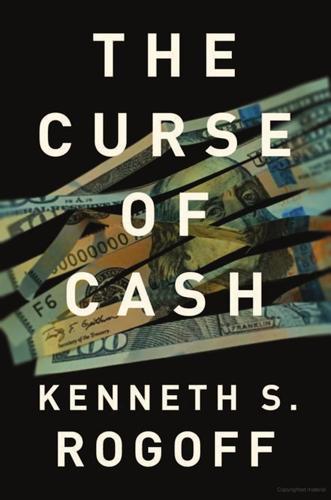
The Curse of Cash
by
Kenneth S Rogoff
Published 29 Aug 2016
Obviously, with the experience of the financial crisis of 2008 behind us, and most major central banks stuck for years at the moral equivalent of the zero bound, these early sanguine estimates have to be reevaluated. The results of early Fed research on the likelihood and severity of zero bound episodes have had to be revised for basically five reasons. First, many of the early models were estimated over the Great Moderation period (from the mid-1980s until the financial crisis started unfolding in 2007), when macroeconomic volatility was very low.18 Second, the equilibrium global short-term real interest rate has dropped dramatically from the 2.0% enshrined in early versions of John Taylor’s famous monetary policy rule to anywhere from –1.0% to +1.0% today.
…
Although missing a lot of important ingredients, they illustrate some of the challenges that arise in much more sophisticated models. We begin with the influential formulation of Stanford professor John Taylor, whose simple “Taylor rule” for setting the policy interest rates worked surprisingly well for describing central bank behavior in many countries during the period of the Great Moderation (from the mid-1980s until the run-up to the 2008 financial crisis). Taylor’s 1993 formulation assumed equal weights on stabilizing inflation and output, with inflation deviations measured around a target level presumed to be 2%, and output deviations measured around potential output (loosely speaking, the rate of output consistent with full employment).4 When Taylor formulated his rule in the early 1990s, it seemed reasonable for him to build his approach on the assumption that a normal Federal Reserve overnight policy interest rate would be 4%.
…
Dale Henderson and Warwick McKibbin (1993) appear to have introduced the same idea as Taylor’s more or less simultaneously. 5. Beyond the choices discussed in the text (inflation index, potential output measure and relative weights on both), there are many other Taylor rule variants, for example, allowing for a more gradual adjustment of policy interest rates to target. In tranquil times, such as during the Great Moderation era of the late 1980s through the mid-2000s, these different variants of the rule give broadly similar messages. But when inflation and/or output go way off target, as especially was the case for output during the financial crisis of 2008, differences that had seemed second-order suddenly become very important, and the exact choice of rule starts to matter a lot more.

MegaThreats: Ten Dangerous Trends That Imperil Our Future, and How to Survive Them
by
Nouriel Roubini
Published 17 Oct 2022
A stream of innovations, globalization, immigration, weak labor and unions, and billions of workers from China, India, and other emerging markets helped improve productivity and kept a lid on prices. This congenial climate earned a label: the Great Moderation. After wrestling stagflation under control in the early 1980s, most experts expected the Great Moderation to last. The Federal Reserve could always turn the money supply spigot on or off to achieve desired results. Lower interest rates and looser credit could spur growth and avoid deflation. Higher interest rates and tighter credit could cool overheating, excessive growth, and rising inflation.
…
“Although the precise features of inflation targeting differed from country to country, the core framework always articulated an inflation goal as a primary objective of monetary policy,” Federal Reserve chairman Jerome Powell said in August 2020 at a policy symposium sponsored by the Federal Reserve Bank of Kansas City.9 But, unlike other central banks, the Fed always kept a dual mandate where, on top of price stability, the pursuit of maximum employment remained part of its mission. Inflation targeting did its job for more than two decades. It ushered in a period of extended economic stability, the Great Moderation, from the mid-1980s to the mid- to late 2000s. Minor recessions and the dot-com bubble of 2000–2001 came and went without lasting disruption. Until the global financial crisis of 2008, one lever governed monetary policy: the rate that banks pay to borrow money through each other and via the Federal Reserve.
…
If inflation were as likely to remain well above the US Federal Reserve’s target rate of 2 percent—even if it falls modestly from its current high levels—long-term bond yields would go much higher, and equity prices could end up in bear country (a fall of 20 percent or more). By June 2022, the tech-heavy Nasdaq was already in bear market territory and S&P 500 close to it. More to the point, if inflation continues to be higher than it was over the past few decades (the “Great Moderation”), a traditional portfolio invested 60 percent in equities and 40 percent in fixed income (a 60/40 split) would induce massive long-term losses.16 The task for investors, then, is twofold: first, to figure out another way to hedge the 40 percent of their portfolio that is in bonds, and second, what to do with risky stocks.
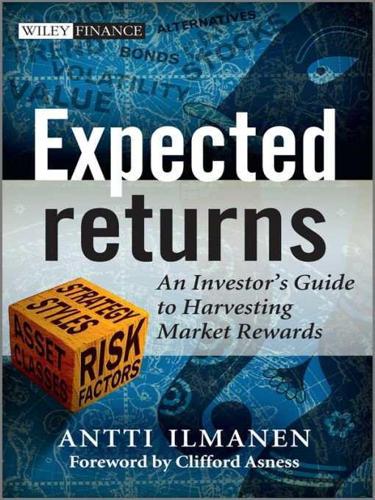
Expected Returns: An Investor's Guide to Harvesting Market Rewards
by
Antti Ilmanen
Published 4 Apr 2011
• The worst times are characterized by both financial and economic turbulence. Table 5.1 lists some periods that, in Justice Stewart’s spirit, were manifestly bad times. One might formalize the definition but there is no (academic or practitioner) consensus on how to do this. All 20th-century recessions could qualify but the period of the Great Moderation was characterized by the absence of severe economic downturns and, instead, an abundance of periodic financial crises. The last two rows highlight episodes where major financial turmoil triggered depression fears—echoes of 1929—but Fed easing and/or bailouts saved the system yet again (and over time gave rise to ever greater risk taking).
…
However, they can resolve the puzzle if they include in their model the “house money effect”—the idea that the degree of loss aversion varies dynamically with prior gains and losses. The model thus implies that investors’ risk attitudes become more conservative in down-markets. The next section shows that estimates of the equity premium have edged lower since the 1990s. During the Great Moderation years, it was popular to argue that lower macro-volatility and investor learning about equities’ long-run return advantage could justify a sustained fall in the required equity premium. Such arguments ring hollow after the 2008 experience. Yet, it remains plausible that the fair premium has declined somewhat due to lower trading costs and better global diversification opportunities. 8.3 HISTORICAL EQUITY PREMIUM Table 8.1 and Figure 8.1 recap the U.S. experience since the 19th century, documenting compound (geometric) nominal and real returns as well as equity premia over cash (mainly one-month Treasury bills) and over bonds (mainly 10-year Treasury bonds).
…
Empirical studies find limited predictability in long-term aggregate dividend rates or earnings growth rates. Unpredictability means that the historical sample average may be the best estimate of future earnings growth. How long a sample? Table 8.4 shows that very long windows point to lower estimates, while the Great Moderation period boosted this number. Here are some other ideas:• Payout rates appear to have some ability to predict future growth, but the empirical relation is surprising to many. On theoretical grounds low dividend payout rates should signal high future growth rates (because companies that have promising internal investment prospects should hoard money, instead of paying it out in dividends), but the empirical experience has been exactly opposite
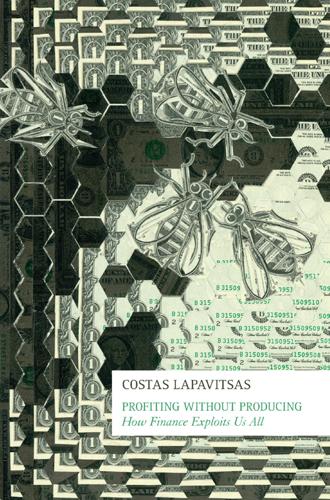
Profiting Without Producing: How Finance Exploits Us All
by
Costas Lapavitsas
Published 14 Aug 2013
Volcker’s determination to defend US financial interests is summed up in Neikirk (1987) but also in Paul Volcker, ‘The Role of Private Capital in the World Economy’, in Private Enterprise and the New Economic Challenge, ed. Stephen Guisinger, Indianapolis: Bobbs-Merrill, 1979; and Paul Volcker and Toyoo Gyohten, Changing Fortunes, New York: Times Books, 1992. 32—For a concise summary of the putative success of policy in the 1990s and 2000s see one of the main exponents of the ‘Great Moderation’: Ben Bernanke, ‘The Great Moderation’, remarks at the meeting of the Eastern Economic Association, Washington, DC, 20 February 2004, at federalreserve.gov. 33 The literature on this topic is extensive. Very selectively, see Finn E. Kydland and Edward C. Prescott, ‘Rules Rather than Discretion: The Inconsistency of Optimal Plans’, Journal of Political Economy 85:3, 1977; Robert Barro and David Gordon, ‘A Positive Theory of Monetary Policy in a Natural-Rate Model’, Journal of Political Economy 91:4, 1983; Barro and Gordon, ‘Rules, Discretion and Reputation in a Model of Monetary Policy’, Journal of Monetary Economics 12:1, 1983; Alberto Alesina and Guido Tabellini, ‘Rules and Discretion with Non-coordinated Monetary Policies’, Economic Enquiry 25:4, 1987; Kenneth Rogoff, ‘The Optimal Degree of Commitment to an Intermediate Monetary Target’, Quarterly Journal of Economics 100:4, 1985; Rogoff, ‘Reputational Constraints on Monetary Policy’, Carnegie-Rochester Conference Series on Public Policy 26, Spring 1987.
…
Trivial as this point might seem in 2013, it was almost impossible to convey it at the time to specialists and students of finance, and even to activists and socialists. Public perceptions were dominated by the so-called expert skills of the financial system in ‘slicing and dicing’ risk, and by the putative wisdom of the ‘Great Moderation’ in inflation policy. Structural crises were a thing of the past, or of the developing world, not of mature countries, where institutions were strong and economists well trained. It seemed that finance had discovered the perpetuum mobile of profit making. By the middle of the first decade of the new century, it was also apparent that the processes under way amounted to more than financial excess.
…
They have jointly dictated the functioning of central banks in developed and developing countries, thus shaping the course of financialization. For a lengthy period in the 1990s and 2000s the inflation performance of developed countries improved significantly. The lowering of inflation was deemed a great success of monetary policy – the ‘Great Moderation’ – and was attributed by mainstream theorists to the new orthodoxy of central bank independence and inflation targeting.32 The crisis of 2007 put an end to this illusion, showing that money and finance continue to have a strongly disruptive role in contemporary capitalism. The theoretical rationale for central bank independence is plain.
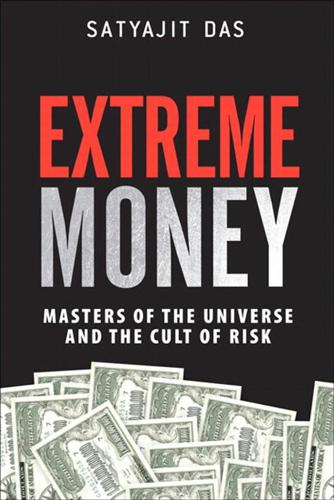
Extreme Money: Masters of the Universe and the Cult of Risk
by
Satyajit Das
Published 14 Oct 2011
But thanks to you, we won’t do it again.”31 The audience sat in the manner of sinners, heads slightly bowed and the eyes moist and a bit glassy, amid the murmurs of “Amen, Brother” and “Praise the Lord.” Unstable Stability? Friedmanites argued that Reagan and Thatcher’s policies reinvigorated the economy, paving the way for the Great Moderation. Coined by Harvard economist James Stock, the term referred to an era of strong economic growth, increased prosperity, and the perceived end to economic cycles and volatility. Prosperity was increasingly based on financial services and the speculation economy. The cycles were still there, papered over by the free money from central banks when necessary.
…
Minsky viewed modern financial markets as “conditionally coherent” and characterized by “periods of tranquility.” Excessive risk taking—driven in part by assumptions about the level of risk, inherent investment biases as asset prices increase, and increased leverage—led to market breakdowns. Minsky’s caution about “balance sheet adventuring” presciently anticipated the crisis that was to bring the Great Moderation to its end in 2007. Ben Bernanke, a follower of Friedman and student of the Great Depression, found himself facing the type of crash that the theory said could not happen again. 8. False Gods, Fake Prophecies Finance is what economists call money; financial economics is the economics of money.
…
Alan Greenspan theorized that “a rising, debt-to-income ratio for households or of total non-financial debt to GDP” did not signify stress but was “a reflection of dispersion of a growing financial imbalance of economic entities that in turn reflects the irreversible up-drift in division of labor and specialization.”4 In 2005, Ben Bernanke, Greenspan’s successor as chairman of the US Federal Reserve, provided an apology for high levels of debt: “Concerns about debt should be allayed by the fact that household assets (particularly housing wealth) have risen even more quickly than household liabilities.”5 In the Great Moderation, debt-driven speculation drove prosperity. For Bernanke, it was not even a debt problem but a savings problem. He blamed the Germans, Japanese and Chinese for saving too much.6 America was being “neighborly,” helping out. After the global crisis, in a case of severe cognitive dissonance, Bernanke continued to blame the foreign savers for the problems.7 In 1933, the economist Irving Fisher identified the danger: “over-investment and over-speculation are often important; but they would have far less serious results were they not conducted with borrowed money.”8 In 2005, William White, chief economist at the Bank of International Settlement, broke ranks by warning that easy money was creating a boom that would end painfully, reflecting “the size of the real imbalances that, preceded it.”
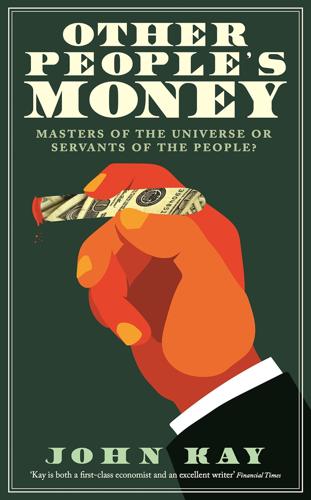
Other People's Money: Masters of the Universe or Servants of the People?
by
John Kay
Published 2 Sep 2015
The Nobel Prize-winning economist Robert Lucas told the annual meeting of the American Economic Association that the ‘central problem of depression prevention has essentially been solved’.24 Another academic economist, Ben Bernanke, who had been appointed to the Board of the Federal Reserve System, popularised the phrase ‘the Great Moderation’25 to describe a supposed new era of economic stability. In retrospect, the critical development during this period was the growth in trade in asset-backed securities, especially mortgage-backed securities, and subsequently collateralised debt obligations, between financial institutions. A false belief in the security provided by such packaging stimulated demand for these assets.
…
The following year, another Federal Reserve Board governor, Ben Bernanke, reiterated Kohn’s claim: ‘Banking organizations of all sizes have made substantial strides over the past two decades in their ability to measure and manage risks.’ Such advances resulted, he said, in ‘greater resilience of the banking system’.5 Bernanke was the Princeton professor and student of the Great Depression who had earlier proclaimed ‘the Great Moderation’. The chairman of the Federal Reserve Bank of New York similarly applauded the work of risk managers when he addressed their annual conference. Timothy Geithner told his audience: Financial institutions are able to measure and manage risk much more effectively. Risks are spread more widely, across a more diverse group of financial intermediaries, within and across countries.
…
The use of leverage can promote efficiency by enabling risk to be held and managed more efficiently. But the use of leverage provides opportunities for tailgaters and gamblers with other people’s money, and creates many opportunities to fall victim to the winner’s curse. And these opportunities were exploited to the full during the ‘Great Moderation’. By the time of the global financial crisis, Deutsche Bank had liabilities more than fifty times its equity capital – and, as I shall describe in Chapter 6, even this calculation underestimates the extent of leverage. What did Bernanke, Greenspan, Geithner and others think was really going on, as risk built up in the banking system?
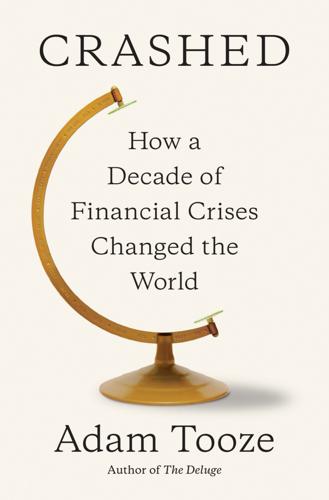
Crashed: How a Decade of Financial Crises Changed the World
by
Adam Tooze
Published 31 Jul 2018
The decades prior to the crisis had been dominated by the idea of a “market revolution” and the rollback of state interventionism.25 Government and regulation continued, of course, but they were delegated to “independent” agencies, emblematically the “independent central banks,” whose job was to ensure discipline, regularity and predictability. Politics and discretionary action were the enemies of good governance. The balance of power was hardwired into the normality of the new regime of deflationary globalization, what Ben Bernanke euphemistically referred to as the “great moderation.”26 The question that hung over the dispensation of “neoliberalism” was whether the same rules applied to everyone or whether the truth was that there were rules for some and discretion for others.27 The events of 2008 massively confirmed the suspicion raised by America’s selective interventions in the emerging market crises of the 1990s and following the dot-com crisis of the early 2000s.
…
It was precisely to tame the forces of indiscipline unleashed by the end of metallic money that the market revolution and the new neoliberal “logic of discipline” were inaugurated.29 By the mid-1980s Fed chair Paul Volcker’s dramatic campaign to raise interest rates had curbed inflation. The only prices going up in the age of the great moderation were those for shares and real estate. When that bubble burst in 2008, when the world faced not inflation but deflation, the key central banks threw off their self-imposed shackles. They would do whatever it took to prevent a collapse of credit. They would do whatever it took to keep the financial system afloat.
…
Given the weight of this hindsight, it is easy to forget how unremarkable his appointment seemed at the time. He was a safe pair of hands, no outsized ego, a reliable middle-of-the-road Republican. In policy terms he was known, above all, for his belief that the best way to perpetuate the era of the great moderation, in which both unemployment and inflation were fluctuating much less than ever before, was a rules-based approach to policy making he described as “constrained discretion.”47 As an economist steeped in the disastrous history of the 1920s and 1930s gold-exchange standard, Bernanke knew all too well the perils of a lopsided fixed exchange rate system.

Financial Market Meltdown: Everything You Need to Know to Understand and Survive the Global Credit Crisis
by
Kevin Mellyn
Published 30 Sep 2009
The depths and duration of the damage inflicted on the global economy may well be 139 140 FINANCIAL MARKET MELTDOWN substantially worse than the results of that earlier event for one simple reason: For over a generation, we have refused to let market busts play themselves out. This has been called the ‘‘Great Moderation.’’ Between 1982, when the ruinous inflation set off by the Great Society and Vietnam War spending of Lyndon Johnson in the late sixties had finally been broken by Paul Volcker’s Federal Reserve, and the credit market crisis of the summer of 2008, the global financial markets went from strength to strength for a quarter century.
…
The Fed even pumped money into the system to prevent the phony crisis of Y2K, the idea that the world’s computers would go wacky when the calendar rolled over into the New Millennium on January 1, 2000. By and large, all these actions were successful. Nobody could really ask if they were proper or necessary because of the record of success. Over time, the Great Moderation began to take the fear out of the equation for financial market players. That left only greed. The Natural History of Financial Folly BANKERS GONE WILD If there is one constant that runs through the work of Walter Bagehot it is that banking is a simple business that needs to follow simple rules.
…
The Natural History of Financial Folly BANKERS GONE WILD If there is one constant that runs through the work of Walter Bagehot it is that banking is a simple business that needs to follow simple rules. Innovation usually amounts to forgetting the rules (or having never learned them) and always ends up in tears. For this reason, he felt that dull, and even stupid men, were far better bankers than people who were clever. The decline of wholesome fear during the Great Moderation was probably not enough to turn credit from the wholesome lifeblood of an economy into a pathogen. A panic within the financial markets as they existed in 1982, if based on overconfidence built up over 25 years, would be pretty nasty. However, over the same period of time, the structure of the financial markets has been transformed beyond recognition.
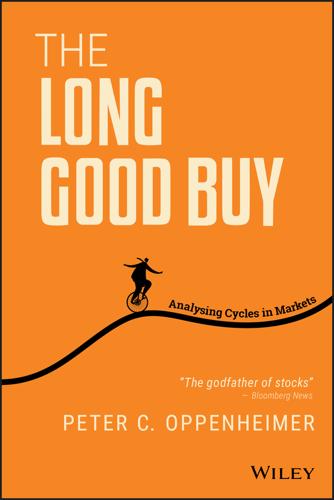
The Long Good Buy: Analysing Cycles in Markets
by
Peter Oppenheimer
Published 3 May 2020
This increase in valuations was marked and prompted by significant shifts downwards in bond yields and central bank interest rates as inflation started to fall. The 1990s. This cycle was very strong. The economic backdrop was one of solid growth but with low inflation and interest rates, frequently described as the ‘Great Moderation’. The combined effect of globalisation, partly in the wake of the collapse of the Soviet Union and the opening up of China, was also crucial. In November 1995, China formally requested to accede to the WTO (although it did not become a full member until 11 December 2001). The move towards independence of central banks was also an important contributing factor to the perceived stability of the economic cycle. 2000–2007.
…
This strong secular bull market was buffeted once again by the 1998 Asia crisis, but a decisive policy response resulted in looser money, which helped to propel the technology bubble of the late 1990s. When this bubble eventually burst, it brought to an end the secular uptrend that had started in 1982. 2009 Onwards: The Start of QE and the ‘Great Moderation’ Chapter 9 examines some of the specific conditions that have followed the financial crisis in more detail, but this bull market has also been particularly strong and long. Having collapsed by 57% from its 2007 peak, the S&P 500 started a powerful recovery that was to result in the longest bull market in history.
…
Falling Volatility of Macro Variables But although long-term growth expectations in the economy have fallen, and revenue growth in the corporate sector has slowed, the volatility of growth has also moderated (exhibit 9.13). Much of this took place with the independence of central banks and the boom in globalisation that followed the collapse of the Soviet Union in the late 1990s. But there has been a renewed fall since the financial crisis. Although the 1990s is often referred to as the period of the ‘Great Moderation’ because of its stable growth and low inflation, it came to an end largely as a result of the technology bubble in equity markets at the end of the century. But, since then, macro volatility has fallen again. Typical drivers of past recessions, such as industrial shocks, oil shocks and inflationary overheating, have become less of a threat since the financial crisis.

Cogs and Monsters: What Economics Is, and What It Should Be
by
Diane Coyle
Published 11 Oct 2021
There was a strong consensus among macroeconomists about how the economy operated and how it should be managed through fiscal and monetary policy, described as the ‘new neoclassical synthesis’. This was believed to have brought about the ‘Great Moderation’, over a decade of low inflation and steady growth. The role of sheer luck in bringing about the Great Moderation was, as it turns out, greatly underestimated. Few macroeconomists were keen to admit that the GFC of 2008 significantly damaged their subject, which is perhaps not surprising. Some, moreover, engaged in confident arguments over fiscal and monetary policy in the media and blogosphere, as if calls in the aftermath of the GFC for economists to show more humility had fallen on deaf ears—it became known as the debate between saltwater (departments like Harvard on the US East Coast) and freshwater (Chicago on Lake Michigan) schools.
…
This was not as bad as it might have been, as economists had learned from the 1930s—and one expert on the Great Depression, Ben Bernanke, was in a key role as chairman of the US Federal Reserve Board. Yet how had this cataclysmic event happened, after a long period some people had taken to calling the Great Moderation, with low inflation and steady growth? Her Majesty the Queen famously asked a group of economists at the London School of Economics why on earth they had not seen it coming. Macroeconomists were widely condemned for not having forecast the crisis, for many of the models used for forecasting at that time ruled out such events.
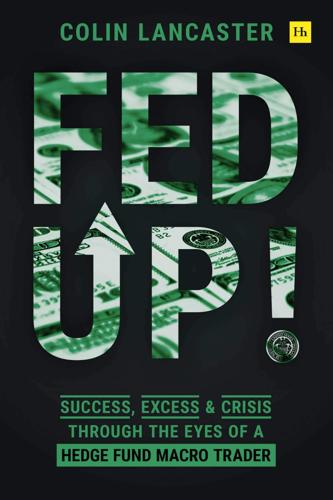
Fed Up!: Success, Excess and Crisis Through the Eyes of a Hedge Fund Macro Trader
by
Colin Lancaster
Published 3 May 2021
And when Lower for Longer didn’t work, he invented the Fed put to give people confidence to buy the dip. “The Fed put was his doing?” Jerry asks. “Yeah, it was when he cut rates in 1987 in the middle of the tightening cycle.” “Ah, got it.” “This was also the start of the greatest bond bull market in history. That period, from the late 1980s onward, has been dubbed the ‘great moderation.’ There were no major recessions and things just chugged along. He was also a bit of a funny guy, not funny in the laugh-out-loud way; funny in the way he communicated. He liked to speak in puzzles, in riddles, like: ‘Taking steps to increase our national savings through fiscal action to lower federal budget deficits would help diminish the risks that a further reduction in the rate of purchase of dollar asset by foreign investors could severely crimp the business investment that is crucial for our long term growth.’
…
He retired in 2006, before it all fell apart. It all went to hell soon after.” “I didn’t realize he got out right before the mess.” “Yeah, he got lucky,” I say. “The guy that stepped into the mess was Ben Bernanke. He was chair of the Fed from 2006 to 2014. They call him Helicopter Ben. He bought into the great moderation propaganda in the mid 2000s. He thought things were different this time, and he made some comments that still haunt him to this day. He said ‘subprime was contained’ back in 2007 before the bubble popped. I bet he wishes that he could take that one back.” “Anyways,” I continue, “he got the job right as the bubble was bursting.
…
He had also done that other research on Japan’s bubble and thought QE was a good idea for the Japanese.” “Interesting,” Jerry says. “Then it was Janet Yellen’s turn. She was chair of the Fed from 2014 to 2018. If you met her, she would remind you of a really smart grandma. She also bought into the great moderation propaganda. She defended QE and kept it on autopilot but always said you couldn’t do it forever. You had to revert back to normal policy. This obviously has never happened. Wealth inequality ramps in this period, but it was hard to get mad at her. She was so even-keeled. You could see the negative trends in the data on wealth inequality, but she said they would get rid of it.”
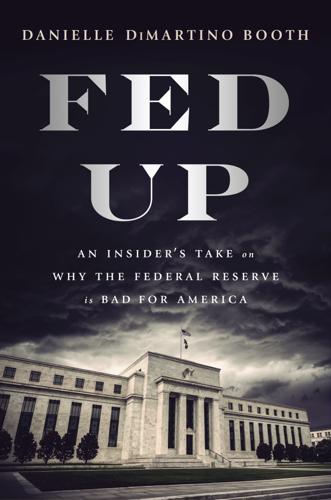
Fed Up: An Insider's Take on Why the Federal Reserve Is Bad for America
by
Danielle Dimartino Booth
Published 14 Feb 2017
How awesome was that, traders must have thought, the ability to position their books to profit before the fact, a license to front-run the Fed! Greenspan’s actions ushered in the period of prosperity later dubbed the Great Moderation, the slaying of capitalism’s volatile business cycle of creation and destruction. Fewer bankruptcies, fewer disruptions in markets, steadier sailing. Though Rosenblum became a passionate defender of the Great Moderation, something continued to vex him. With hindsight, the causes of the 1987 crash became obvious. The Fed’s army of economists had missed them. What would be the next disaster they wouldn’t see coming?
…
He argued in a speech to the same body that the economy works best for most people when government intervention is limited. He posited that there was a “natural rate” of unemployment; going below that point risked spiraling wages and inflation. Friedman’s philosophies profoundly influenced economists like Volcker and Greenspan. The Great Moderation could be seen as validation that Friedman was right. However, stock bubbles and rising inequality suggested all was not well. Akerlof argued that Friedman’s approach was based on false assumptions about human behavior. Friedman’s “misleading” theories had led to “misguided” policies. Akerlof called for a return to “sensible economics.”
…
She mentioned the financial system stresses of LTCM, the Asian crisis, and the stock market crashes of the late 1980s and early 2000s. “With each crisis, policymakers rolled up their sleeves and beat back the systemic threat,” she said. “The levees held. . . . We appeared to have entered a new era of stability. We even gave it a name: the Great Moderation. We were left with the mirage of a system that we thought was invulnerable to shock, a financial Maginot Line that we believed couldn’t be breached. We now know that this sense of invincibility was mere hubris.” Hubris and myopia. Yellen’s admission had been stunning. Would this prompt a harsh look in the mirror, a revisiting of her intellectual orthodoxy?
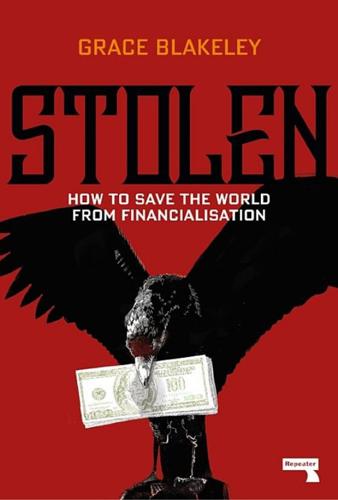
Stolen: How to Save the World From Financialisation
by
Grace Blakeley
Published 9 Sep 2019
By absorbing some of Keynes’ insights on aggregate demand into the classical economic framework, the “neoclassical” economists — as they came to be known — claimed to have built highly accurate macroeconomic models that were able to produce the perfect answer to any policy question. Their success at prediction was, they argued, what underlay the so-called “Great Moderation” that preceded the financial crisis: a period of high growth, low inflation, and relative stability. As it turns out, the Great Moderation was no such thing. As the upswing in asset prices continued, greater amounts of risk built up in the system.3 Part of the reason the financial crisis of 2008 was so big is that the period of exuberance that had preceded it had been so long. According to Hyman Minsky, “stability is destabilising” — long periods of calm in financial markets encourage behaviours that lead to instability.4 Minsky’s work built on Keynes’ theory that investment is driven by human psychology more than by any objective market rationality.
…
Some have argued that this can be attributed to a slowdown in technological change.21 Others point to demographic change — falling birth rates and rising life expectancies associated with rising affluence in the global North have led to a fall in the working age population that is depressing long-term growth rates.22 But all those who support the secular stagnation hypothesis converge on one point: without extraordinary interventions from the state such as quantitative easing, many economies in the global North appear to have ground to a halt. Today’s economists have all converged on one burning question: What is going on? Just like the theory of the great moderation itself, the secular stagnation hypothesis takes for granted many of the assumptions of neoclassical economics. Take the argument about wage stagnation. Neoclassical economists argue that workers are paid a wage equal to their marginal productivity. If a worker is paid a wage less than the value they create for the company that hires them, competition over workers will mean that another company can poach the worker by offering a slightly higher wage, and still make a profit.
…
, British Politics, vol. 7 Chapter Five The Crash 1 This account draws on: Tooze, A. (2018) Crashed: How a Decade of Financial Crises Changed the World, London: Allen Lane; Pym (2014); Fraser, I. (2014) Shredded: Inside RBS, the Bank That Broke Britain, Edinburgh: Birlinn; Sorkin, A.R. (2010) Too Big to Fail: The Inside Story of How Wall Street and Washington Fought to Save the Financial System — and Themselves, London: Penguin; Blinder, A.S. (2013) After the Music Stopped: The Financial Crisis, the Response, and the 2 This account draws on: Palley, T. (2009) “The Limits of Minsky’s Financial Instability Hypothesis as an Explanation of the Crisis”, Macroeconomic Policy Institute Working Paper 11; Foster (2009); Panitch and Gindin (2009); Gowan (2009); Arestis (2011); Crotty (2008); Duménil and Levy (2011); Lysandrou (2011); Stockhammer (2010). 3 Barwell, R. and Burrows, O. (2010), “Growing Fragilities? Balance Sheets in the Great Moderation”, Bank of England Financial Stability Paper 10 4 This account draws on: Minsky (1986); Keynes (1936); Minsky, H. (1993) “The Financial Instability Hypothesis”, in Arestis, P. and Sawyer, M. (eds.) The Elgar Companion to Political Economy, London: Edward Elgar Publishing; Shiller, R. (2000) Irrational Exuberance, USA: Princeton University Press; Wray (2011; 2015); Jayadev, A. (2016) “Minsky’s Many Moments”, Institute for New Economic Thinking, 5 August. https://www.ineteconomics.org/perspectives/blog/minskys-many-moments; Muñoz, J. (2011) “Orthodox versus Heterodox (Minskyan) Perspectives of Financial Crises: Explosion in the 1990s versus Implosion in the 2000s”, Levy Economics Institute Working Paper 695 http://www.levyinstitute.org/pubs/wp_695.pdf; Whalen, C. (2017) “Understanding Financialization: Standing on the Shoulders of Minsky”, Levy Economics Institute Working Paper 892. http://www.levyinstitute.org/pubs/wp_892.pdf; Knight, F. (1921) Risk, Uncertainty and Profit; Fisher, I. (1933) The Debt-Deflation Theory of Great Depressions; Wray, L.R. and Tymoigne, É. (2008) “Macroeconomics Meets Hyman P.

A Little History of Economics
by
Niall Kishtainy
Published 15 Jan 2017
The low inflation of the 1980s and 1990s might have been a bit of luck rather than the result of a clever economic theory that solved the problem of time inconsistency. In the 1970s, economies were hit by shocks which made inflation rise, such as political crises in the Middle East that led to surging oil prices. It’s possible that the economic stability of the 1980s and 1990s was the result of an absence of similar shocks. Moreover, the Great Moderation didn’t last; it ended abruptly in 2008 when the global economy crashed. Economic volatility had returned. CHAPTER 35 Missing Women In the early 1990s, the economist Amartya Sen calculated that 100 million women were missing. Because women live longer than men, there should be more women in the population than men.
…
These events, thousands of miles apart, were connected by a breakdown in the world’s financial system, which after 2007 made the entire global economy tumble over. The collapse was given gloomy-sounding names: the Global Financial Crisis, the Credit Crunch, the Great Recession. Today we’re still recovering and still arguing about how to fix things. The crisis was a complete shock – even to economists. During the 1990s they’d hailed the Great Moderation, an era of steady economic growth with low inflation. Now it looked as if they’d been much too cheerful. Occasionally, though, economists step away from conventional thinking and are ahead of their time. The American Hyman Minsky (1919–96) was one. Although he was no longer alive when the crisis came, he was rediscovered when it hit; many people believed that his ideas explained what happened better than conventional economics could.
…
absolute poverty (i) acid rain (i) adaptive expectations (i) adverse selection (i) advertising (i) agriculture (i), (ii), (iii) aid (i) Akerlof, George (i) alienation (i) Ambrose, St (i) animal spirits (i), (ii), (iii) antitrust policies (i) Apple (i) Aquinas, St Thomas (i), (ii) Aristotle (i) Arrow, Kenneth (i) ascending auction (i) Asian Tigers (i), (ii) Atkinson, Anthony (i), (ii) auction theory (i) auctions (i) Augustine of Hippo, St (i) austerity (i) balance of trade (i) banks and entrepreneurs (i) and interest rates (i) and loans (i) and monopoly capitalism (i), (ii) and speculation (i) see also Britain, Bank of England; central banks; independent central banks; World Bank battle of the methods (i) Becker, Gary (i) behavioural economics (i) benevolent patriarch (i) Beveridge, William (i) big push (i) Black Wednesday (i) bonds (i) bourgeoisie (i), (ii), (iii) brand image (i) Britain Bank of England (i) inflation (i) pegged currency (i) Second World War (i) war with China (i) war with South Africa (i) bubbles (i), (ii) Buchanan, James (i) budget deficit (i) Burke, Edmund (i) capabilities (i) capital (i) and growth (i) Marx on (i) Capital (Marx) (i) Capital in the Twenty-First Century (Piketty) (i) capitalism (i), (ii), (iii) and entrepreneurs (i) and governments (i) and the Great Depression (i) and the Great Recession (i) historical law of (i) Marx on (i) world (i) see also communism Capitalism and Freedom (Friedman) (i) Capitalism, Socialism and Democracy (Schumpeter) (i) capitalists (i), (ii), (iii), (iv) and imperialism (i), (ii), (iii) Marx on (i), (ii), (iii), (iv), (v) carbon tax (i) carbon trading permits (i) Carlyle, Thomas (i), (ii) Castro, Fidel (i), (ii) central banks (i), (ii), (iii), (iv), (v) central planning (i), (ii) chaebols (i) chain of being (i), (ii) Chamberlin, Edward (i) Chaplin, Charlie (i) Chicago Boys (i) Chicago school (i), (ii), (iii), (iv) China, war with Britain (i) Christianity, views on money (i) Churchill, Winston (i) classical dichotomy (i) classical economics (i), (ii), (iii), (iv), (v) coins (i), (ii) Colbert, Jean-Baptiste (i) colonies/colonialism (i), (ii), (iii), (iv) American (i) Ghana (i), (ii) commerce (i), (ii), (iii), (iv) communism (i) and the Soviet Union (i) Communist Manifesto, The (Engels and Marx) (i), (ii) comparative advantage (i), (ii) competition (i), (ii), (iii), (iv) Condorcet, Marquis de (i) Confessions of an Economic Heretic (Hobson) (i) conspicuous consumption (i) constitution (rules) (i) consumers (i), (ii), (iii), (iv) contagion, economic (i) core (i) Corn Laws (i), (ii) Cortés, Hernan (i) cost (i) creative destruction (i) Credit Crunch (i) crime, economic theory of (i) Cuba (i) currency (i), (ii) see also coins currency markets (i), (ii) currency reserves (i) Debreu, Gérard (i) demand law of (i) see also supply and demand demand curve (i) democracy (i), (ii) Democratic Republic of the Congo (i) dependency theory (i) Depression (Great) (i), (ii), (iii), (iv), (v), (vi), (vii) and economic growth (i) and the US central bank (i) descending auction (i) developing/underdeveloped countries (i), (ii) development economics (i) Development of Underdevelopment, The (Frank) (i) diminishing marginal utility (i), (ii) diminishing return to capital (i) discretion (i) discrimination coefficient (i) distribution of income (i), (ii) diversification (i), (ii) dividends (i) division of labour (i) doomsday machines (i) Drake, Sir Francis (i) Drew, Daniel (i) dual economy (i) economic value (i), (ii), (iii), (iv) economics defined (i) normative (i) Economics of Imperfect Competition (Robinson) (i) economies of scale (i) economists (i), (ii), (iii) efficient markets hypothesis (i), (ii), (iii), (iv) efficient/inefficient economic outcome (i) see also pareto efficiency; pareto improvement Elizabeth I (i) Elizabeth II (i) employment, full (i) Engels, Friedrich (i) England’s Treasure by Forraign Trade (Mun) (i) entitlement (i), (ii) entrepreneurs (i), (ii) equilibrium (i), (ii), (iii), (iv), (v) exchange of goods (i), (ii) exchange rates (i) expectations, adaptive/rational (i), (ii), (iii), (iv) exploitation (i), (ii), (iii), (iv), (v) exports (i) and poor countries (i), (ii), (iii) externalities (i), (ii), (iii), (iv) Extraordinary Popular Delusions and the Madness of Crowds (MacKay) (i) failure, market (i), (ii), (iii), (iv) Fama, Eugene (i) famine (i), (ii), (iii), (iv) feminist economics (i) feudalism (i), (ii), (iii), (iv) financial systems (i), (ii) Finer, Herman (i) first price auction (i), (ii) First Welfare Theorem (i), (ii) First World War (i) fiscal policy (i), (ii) floating exchange rate (i) Florence (i) Folbre, Nancy (i) Fourier, Charles (i) framing (i), (ii) France agriculture (i) economic models (i), (ii) revolution (i), (ii), (iii), (iv) and taxation (i) Frank, Andre Gunder (i) free choice (i), (ii) free-market economics (i), (ii), (iii), (iv) free trade (i), (ii), (iii) Friedman, Milton (i), (ii), (iii) full employment (i) game theory (i), (ii), (iii) general equilibrium (i), (ii), (iii), (iv) General Theory of Employment, Interest and Money, The (Keynes) (i) Germany, infant industries (i) Ghana (i), (ii) Gilded Age (i) Global Financial Crisis (i), (ii) global warming (i) Goethe, Johann Wolfgang (i) gold (i), (ii) Golden Age (i) goods and services (i) government, and economies (i), (ii), (iii), (iv), (v), (vi), (vii) Great Moderation (i), (ii) Great Recession (i) Greece (i), (ii), (iii) gross domestic product (i) growth (i) and dependency theory (i) of government (i) and the Great Moderation (i) and Pakistan (i) and population (i) theory (i) Guevara, Ernesto ‘Che’ (i), (ii) guilds (i) Hamilton, Alexander (i) Hansen, Alvin (i) harmony, system of (i) Hayek, Friedrich (i), (ii) hedge funds (i) herds (i) Hicks, John (i) historical law of capitalism (i) HIV/AIDS (i) Hobson, John (i) Homobonus, St (i) human capital (i) human development (i), (ii) Human Development Index (i) imperfect competition (i), (ii) imperialism (i) Imperialism: The Highest Stage of Capitalism (Lenin) (i) imports (i), (ii), (iii) income (i), (ii) and bank loans (i) and capitalism (i) and communism (i) distribution of (i), (ii) and growth (i), (ii) national (i), (ii), (iii), (iv), (v) income per person (i), (ii) independent central banks (i) Industrial Revolution (i), (ii), (iii), (iv), (v) inequality (i), (ii) infant industries (i) inflation (i), (ii), (iii), (iv), (v) information economics (i), (ii), (iii) injection of spending (i) innovations (i), (ii) insurance (i), (ii) interest rates (i) British (i) and monetary policy (i) and recession (i) and usury (i) International Monetary Fund (i) investment (i) and the big push (i) and recession (i), (ii) invisible hand (i), (ii), (iii), (iv), (v) iron law of wages (i) Irrational Exuberance (Shiller) (i) Jefferson, Thomas (i) Jevons, William (i) just price (i) Kahneman, Daniel (i), (ii) Kennedy, John F.
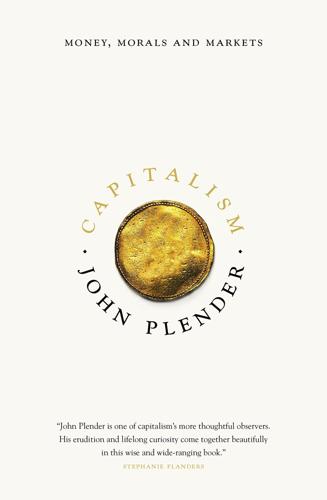
Capitalism: Money, Morals and Markets
by
John Plender
Published 27 Jul 2015
At the Bank of England, Mervyn (now Lord) King was notoriously uninterested in financial stability issues before the crisis. In the period ineptly dubbed ‘the Great Moderation’, central bankers were prone to think that if inflation was kept within target, the financial system would look after itself.44 They also claimed credit for this apparent stability. In 2004, Ben Bernanke, governor of the Fed and later its chairman, said: ‘My view is that improvements in monetary policy, though certainly not the only factor, have probably been an important source of the Great Moderation.’45 This plaudit for central bankers included by implication a pat on the back for Bernanke himself.
…
This side-stepping apologia does not say much for economic theory and there are more salient reasons, which I will come to shortly, that explain why the great majority of mainstream practitioners of economics failed to understand the mechanisms that put the global economy at risk. Such people referred to the period preceding the crisis as ‘the Great Moderation’ because it was marked by prolonged growth and low inflation. At the same time, Lucas has acknowledged that ‘exceptions and anomalies’ to the efficient markets hypothesis have been discovered, ‘but for the purposes of macro-economic analyses and forecasts they are too small to matter’.90 John Kay’s verdict on this is scathing: This is to miss the point: the expert billiard player plays a nearly perfect game, but it is the imperfections of play between experts that determine the result.

No Ordinary Disruption: The Four Global Forces Breaking All the Trends
by
Richard Dobbs
and
James Manyika
Published 12 May 2015
Whatever consumers and governments couldn’t afford to buy with cash, they could pay for with borrowed funds. There were blips and bumps along the road, to be sure, but by and large, the tale of the Great Moderation was one of continuity and persistent trends. That familiar world is no more. The financial crisis of 2008, the deepest economic contraction since the Great Depression, and a host of disruptive technologies, trends, and developments have conspired to ruffle the calm. Many of the long-standing trends that made life so pleasant for investors and managers during the Great Moderation have broken decisively. After nearly three decades of declining interest rates, the cost of capital cannot get cheaper, and it could rise over the next twenty years.
…
This new normal—a world in which China leads the globe in holiday consumption, the United States is the largest oil producer, a mobile messaging app is worth $19 billion, and India is a leader in space exploration—presents difficult, often existential challenges to leaders of companies, organizations, cities, and countries. The formative experiences of many senior leaders came during a period that was uniquely benign and placid for the global economy. With good reason, the twenty-five years leading up to the 2008 financial crisis came to be known, in the words of economists James Stock and Mark Watson, as the “Great Moderation.”7 Interest rates fell, helping to drive up the price of assets, whether stocks, bonds, or houses. Natural resources became ever more abundant and cheaper. Jobs were plentiful, and a seemingly endless supply of trained workers stood ready to fill them. When technology and trade disrupted and upended industries, most of those affected were able to find work in other sectors.
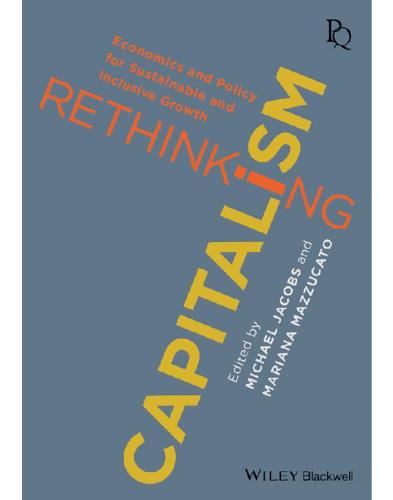
Rethinking Capitalism: Economics and Policy for Sustainable and Inclusive Growth
by
Michael Jacobs
and
Mariana Mazzucato
Published 31 Jul 2016
But if the prospect of long-term growth is to be restored, a much more fundamental recognition of the proper role of fiscal policy in boosting demand will be needed. Conclusion Prior to the financial crisis, policy-makers congratulated themselves for achieving low inflation, improving growth performance and financial stability. In the US, Fed Chairman Ben Bernanke described the apparent decline in macroeconomic volatility as the ‘Great Moderation’. In Bernanke’s view, it was largely due to the introduction of a successful monetary policy framework focused on ensuring price stability.29 In Britain, Chancellor of the Exchequer, and later Prime Minister, Gordon Brown declared that the Labour government (1997–2010) had aimed to avoid returning to the ‘boom and bust’ of previous eras.
…
His confidence stemmed from his early decision to grant operational independence to the Bank of England in the conduct of a monetary policy. In his initial letter to the Bank of England, Brown wrote: ‘price stability is a precondition for high and stable levels of growth and employment, which in turn will create the conditions for price stability on a sustainable basis.’30 But the Great Moderation thesis was blown away by the global financial crisis. And in the past decade the failure of macroeconomic policy based on the orthodox theory of money has been laid bare. Resting on the belief that governments, like households, are financially constrained by their income, policy-makers have forced fiscal austerity onto their already weak economies and instead put their faith in the ability of monetary policy—both conventional and unconventional—to secure sustainable economic growth.
…
De Grauwe, ‘Economic theories that influenced the judges of Karlsruhe’, Vox, 13 March 2014, http://www.voxeu.org/article/economic-flaws-german-court-decision (accessed 19 April 2016). 27 ECB, Asset Purchase Programmes, https://www.ecb.europa.eu/mopo/implement/omt/html/index.en.html (accessed 19 April 2016). 28 D. Papadimitriou and L. Randall Wray, Euroland’s Original Sin, Levy Economics Institute Policy Note 2012/8, 2012. 29 B. S. Bernanke, The Great Moderation, Federal Reserve Board, 2004, http://www.federalreserve.gov/boarddocs/speeches/2004/20040220/ (accessed 19 April 2016). 30 G. Brown, The New Monetary Policy Framework, 1997, http://www.bankofengland.co.uk/monetarypolicy/Documents/pdf/chancellorletter970506.pdf (accessed 19 April 2016). 4.
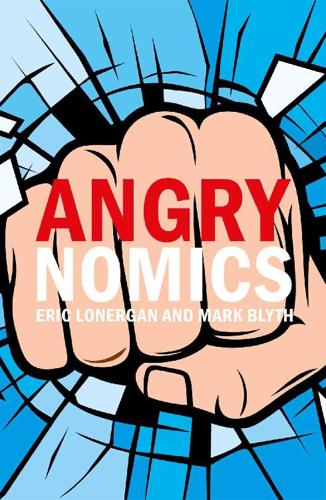
Angrynomics
by
Eric Lonergan
and
Mark Blyth
Published 15 Jun 2020
These voters cared not for economic conflict, but supposedly cared for post-materialist values and good governance, which parties duly agreed to supply. The big policy stuff was best left to experts in international organizations and independent central banks. Politicians supplied less policy and yet pretended to represent everyone’s interests while doing so.4 This was the world of the 1990s and 2000s, wonderfully described as “the Great Moderation” in 2004 by then Federal Reserve Chair Ben Bernanke, whereby the elimination of politics at the hands of technocrats had delivered prosperity for all.5 There were, as we know now, rather large flaws with this view of the world. Chief among them was that material concerns never went away. Parties simply stopped admitting that they existed.
…
, Deutsche Welle, 15 July 2019; https://www.dw.com/en/will-brexit-pollsters-again-help-hedge-funds-make-millions/a-49518827. 4.Jonathan Hopkin & Mark Blyth, “The global economics of European populism: growth regimes and party system change in Europe”, Government and Opposition 54:2 (2019), 193–225. 5.Ben Bernanke, “The Great Moderation”, remarks at the Eastern Economic Association meeting, 20 February 2004: https://www.federalreserve.gov/boarddocs/speeches/2004/20040220/. 6.See Mary O’Hara, “A journey to the sharp end of cuts in the UK”, Austerity Bites; http://www.austeritybitesuk.com. 7.One recent and very large consequence was the way different age cohorts voted in the 2019 UK election; see: https://twitter.com/MkBlyth/status/1207430591622209537. 8.On the costs of the Brexit distraction see https://twitter.com/MkBlyth/status/1208317852018601984. 9.See, for example, “Anger motivates people to vote”, Institute for Social Research, University of Michigan; https://isr.umich.edu/news-events/insights-newsletter/article/anger-motivates-people-to-vote-u-m-study-shows/. 10.See Eric Lawrence, John Sides & Henry Farrell, “Self-segregation or deliberation?
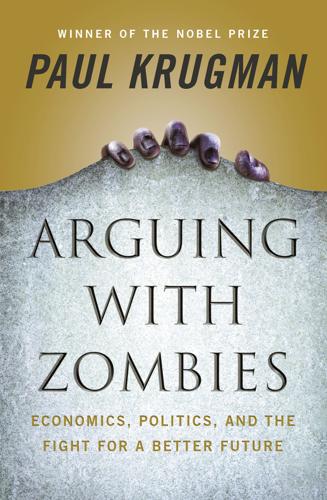
Arguing With Zombies: Economics, Politics, and the Fight for a Better Future
by
Paul Krugman
Published 28 Jan 2020
And in the real world, economists believed they had things under control: the “central problem of depression-prevention has been solved,” declared Robert Lucas of the University of Chicago in his 2003 presidential address to the American Economic Association. In 2004, Ben Bernanke, a former Princeton professor who is now the chairman of the Federal Reserve Board, celebrated the Great Moderation in economic performance over the previous two decades, which he attributed in part to improved economic policymaking. Last year, everything came apart. Few economists saw our current crisis coming, but this predictive failure was the least of the field’s problems. More important was the profession’s blindness to the very possibility of catastrophic failures in a market economy.
…
So what guidance does modern economics have to offer in our current predicament? And should we trust it? VI. THE STIMULUS SQUABBLE Between 1985 and 2007 a false peace settled over the field of macroeconomics. There hadn’t been any real convergence of views between the saltwater and freshwater factions. But these were the years of the Great Moderation—an extended period during which inflation was subdued and recessions were relatively mild. Saltwater economists believed that the Federal Reserve had everything under control. Freshwater economists didn’t think the Fed’s actions were actually beneficial, but they were willing to let matters lie.
…
When monetarism failed—fighting words, but you know, it really did—it was replaced by the cult of the independent central bank. Put a bunch of bankerly men in charge of the monetary base, insulate them from political pressure, and let them deal with the business cycle; meanwhile, everything else can be conducted on free-market principles. And this worked for a while—roughly speaking from 1985 to 2007, the era of the Great Moderation. It worked in part because the political insulation of central banks also gave them more than a bit of intellectual insulation, too. If we’re living in a Dark Age of macroeconomics, central banks have been its monasteries, hoarding and studying the ancient texts lost to the rest of the world.
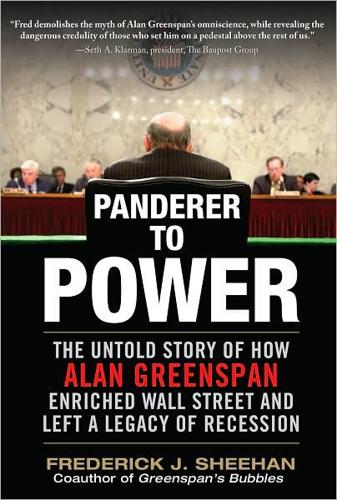
Panderer to Power
by
Frederick Sheehan
Published 21 Oct 2009
He is still a gung-ho apostle of renewing economic growth through consumer borrowing and spending. 10 Richebächer Letter, March 2006, p. 10. 11 Ben S. Bernanke, “Global Savings Glut and the U.S. Current Account Deficit,” Homer Jones Lecture, St. Louis, Missouri, April 14, 2005. Before his chairmanship, he gave a speech entitled “The Great Moderation.” In that 2004 address, Bernanke offered interpretations of the “remarkable decline in the variability of both output and inflation” over the past two decades. He permitted the possibility that structural changes to the economy and luck may have played their role, but left no doubt that “improved performance of macroeconomic policies, particularly monetary policy” should receive the Nobel Prize.12 [Bernanke’s italics].
…
In 2008, researchers at the International Monetary Fund (IMF) identified 124 international banking crises since 1970. Four were in the 1970s, 39 were in the 1980s, 74 were in the 1990s, and 7 were after the millennium.13 The current worldwide banking crisis is not included. It would be premature to quantify it. The Great Moderation was, in fact, the Great Distortion. The Peak We now know that the housing bubble peaked sometime in 2005 or early 2006. Ben S. Bernanke was sworn in as Federal Reserve chairman on February 1, 2006. The brightest guys in the room thought that the excesses were about to collapse. Sam Zell, owner of Equity Office Properties, offered his opinion: “The enormous monetization of hard assets has created a massive amount of liquidity.… Together with [the rising demand for income in the developed world], these factors … are reducing the relative expectations on equity.”14 Another who saw the sun setting was Stephen Schwartzman, head of Blackstone Group, perhaps the premier buyout firm over the past two decades.
…
.… Together with [the rising demand for income in the developed world], these factors … are reducing the relative expectations on equity.”14 Another who saw the sun setting was Stephen Schwartzman, head of Blackstone Group, perhaps the premier buyout firm over the past two decades. He told an audience: “We have low [interest] rates, tons of money in both the private equity and debt markets.… But when it ends, it always ends badly. One of those signs is when the dummies can get money and that’s where we are now.”15 12 Ben Bernanke, “The Great Moderation,” speech at the meetings of the Eastern Economic Association, Washington, D.C., February 20, 2004. 13Luc Laeven and Fabian Valencia, “Systemic Banking Crises: A New Database,” IMF, October 2008, p. 56. 14From Sam Zell’s 2005 electronic Christmas card, “The Theory of Relativity,” www. yieldsz.com; quoted in Ted Pincus, “Zell Remains Relaxed about Economy as Others Fret,” Chicago Sun-Times, September 12, 2006.
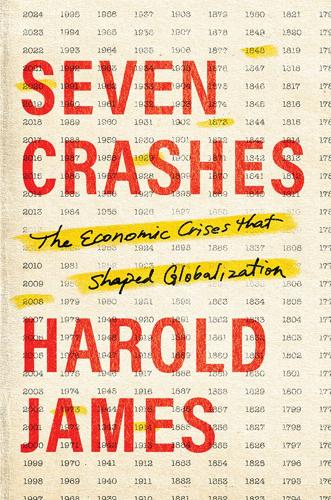
Seven Crashes: The Economic Crises That Shaped Globalization
by
Harold James
Published 15 Jan 2023
Right, so the banks started filling these bonds with riskier and riskier mortgages, that way they can keep that profit machine churning, right? By the way, these risky mortgages are called subprime, so whenever you hear subprime, think shit.” But the policy consensus believed that there was no need for central banks to act against bubbles until the moment when they saw a generalized inflation risk. In what was called the Great Moderation, it appeared that inflation, and price disturbances, had been eliminated. Central bankers used a new acronym, NICE, to describe their world as Non-Inflationary Continuing Expansion. Millennial globalization involved a number of related phenomena: most important, an expansion of production in new manufacturing centers.
…
Bernanke thought of the objections, that “announcing a target that they are not sure they know how to achieve will endanger the Bank’s credibility; and they have expressed skepticism that simple announcements can have any effects on expectations.”103 In this context, Bernanke invoked a famous (he called it “hoary”) thought experiment of Milton Friedman’s, the “helicopter drop” of newly printed money. “I think most economists would agree that a large enough helicopter drop must raise the price level.”104 This approach meant that asset price concerns were relegated to a less important place in monetary policy-making. Bernanke in this regard was a central maker of the consensus of the Great Moderation period: that it was hard to identify bubbles as they were forming, because the price rises might reflect “real” considerations, and that they could simply be dealt with after a bubble burst (when it would be possible to know that it had been a bubble).105 This was often described as “cleaning” after the event rather than “leaning” against the wind of the bubbles.
…
Bernanke could draw on a rich literature, to which he had contributed an important paper, on how in the interwar years abandoning the gold standard freed monetary policy and thus laid a path to recovery.109 He also thought about nonstandard open-market operations, which might contain some fiscal component. The analytical barrier between monetary and fiscal policy actions, which had been an essential element in the Great Moderation thinking that emerged from the 1970s debates, would thus become partly blurred. Central banks would be moving into a territory long thought to belong to finance ministries. “By a fiscal component I mean some implicit subsidy, such as would arise if the BOJ purchased nonperforming bank loans at face value, for example (this is of course equivalent to a fiscal bailout of the banks, financed by the central bank).
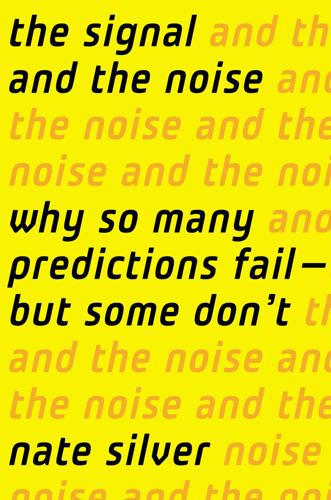
The Signal and the Noise: Why So Many Predictions Fail-But Some Don't
by
Nate Silver
Published 31 Aug 2012
Part of the reason may have been that the Fed was looking at data from the Great Moderation years to set their expectations for the accuracy of their forecasts. In particular, they relied heavily upon a paper that looked at how economic forecasts had performed from 1986 through 2006.45 The problem with looking at only these years is that they contained very little economic volatility: just two relatively mild recessions in 1990–1991 and in 2001. “By gauging current uncertainty with data from the mid-1980s on,” the authors warned, “we are implicitly assuming that the calm conditions since the Great Moderation will persist into the future.”
…
But the rate was more than twice that—36 percent—from 1900 through 1945.42 Although most economists believe that some progress has been made in stabilizing the business cycle, we may have been lucky to avoid more problems. This particularly holds in the period between 1983 and 2006—a subset of the Long Boom that is sometimes called the Great Moderation—when the economy was in recession just 3 percent of the time. But much of the growth was fueled by large increases in government and consumer debt, as well as by various asset-price bubbles. Advanced economies have no divine right to grow at Great Moderation rates: Japan’s, which grew at 5 percent annually during the 1980s, has grown by barely one percent per year since then.43 This may be one reason why forecasters and policy makers were taken so much by surprise by the depth of the 2007 recession.
…
Advanced economies have no divine right to grow at Great Moderation rates: Japan’s, which grew at 5 percent annually during the 1980s, has grown by barely one percent per year since then.43 This may be one reason why forecasters and policy makers were taken so much by surprise by the depth of the 2007 recession. Not only were they failing to account for events like the Great Depression*—they were sometimes calibrating their forecasts according to the Great Moderation years, which were an outlier, historically speaking. Don’t Throw Out Data The Federal Open Market Committee, which is charged with setting interest rates, is required by law to release macroeconomic forecasts to Congress at least twice per year. The Fed was in some ways ahead of the curve by late 2007: their forecasts of GDP growth were slightly more bearish than those issued by private-sector forecasters, prompting them to lower interest rates four times toward the end of the year.

The Cost of Inequality: Why Economic Equality Is Essential for Recovery
by
Stewart Lansley
Published 19 Jan 2012
By this he did not mean that the economic cycle had disappeared, or the economy would not suffer occasional setbacks, just that the days of severe recession were over and that economic fine-tuning was of no value. A year later, in February 2004, Ben Bernanke, a former Princeton Professor and soon to be appointed Chairman of the Federal Reserve, gave a speech called ‘The Great Moderation’, that made a similar point. Bernanke claimed that because of the apparent decline in the variability of both output and inflation from the mid-1980s, modern macroeconomics had largely solved the problem of the business cycle. According to these accounts, from two of the leading economic theorists in the US, the disaster of 2008-2009 should not have happened.
…
‘Banks devised a host of new tricks for offering investors better returns’, according to the Financial Times’s Gillian Tett, and a leading expert on derivatives, ‘which invariably revolved around creating products that employed more leverage, as well as more complexity and risk.’383 For a while, the derivatives market was highly lucrative for the investment banks issuing them and the institutions buying them. In the heady days of the ‘great moderation’, when economies and markets were booming, derivatives provided apparently easy money for bankers, financiers and wealthy investors. The products were marketed by banks to clients as a way of boosting their wealth. Again, incentives were being distorted by the prospect of enrichment. The whole business became deliberately clouded in complexity and opacity, eluding even those charged with controlling the process.

The Great Demographic Reversal: Ageing Societies, Waning Inequality, and an Inflation Revival
by
Charles Goodhart
and
Manoj Pradhan
Published 8 Aug 2020
For this bleak outlook, they largely blame globalisation and competition from abroad, including the offshoring of manufacturing production, competition from immigrants taking up unskilled jobs in their own countries, and the failure of the elite to respond to their concerns. The result has been a rise in political populism and a crisis of economic liberalism. There was no political backlash before the GFC in 2008 because rising inequality within countries was offset by the general economic well-being of these years, often described as the ‘Great Moderation’. Indeed, in many ways, these were the best 15(plus) years for general economic success in the history of the world. Growth was steady, unemployment was low, inflation was stable and more people taken out of poverty than in any prior equivalent period. As Mervyn King stated (2003), these were the NICE years (Non-Inflationary with Continuous Expansion).
…
In order to identify the Phillips curve in such conditions of simultaneity, one would need to be able to assess and quantify occasions of supply shocks and/or monetary policy errors.5 That is not easy. What we do know, however, is that supply shocks were far more prevalent between 1970 and 1990, e.g. oil shocks in 1973/1974, 1979, 1986 and commodity price shocks and monetary policy errors more obvious, than in the subsequent years, especially during the Great Moderation, 1992–2005, when everything macroeconomic seemed to remain stable. Thus the fact that the slope of the calculated relationship between unemployment (or the output gap) and wage (price) inflation appeared to become more horizontal in these later decades may be just an artefact of better monetary policies and fewer supply shocks, rather than representing any change to the underlying structural relationship.
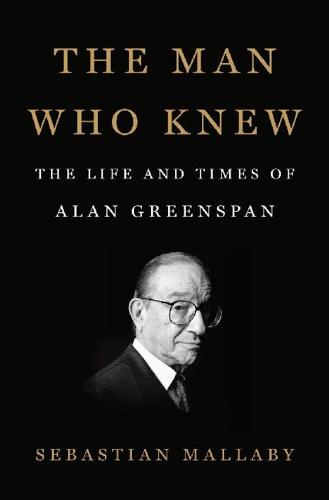
The Man Who Knew: The Life and Times of Alan Greenspan
by
Sebastian Mallaby
Published 10 Oct 2016
The fact that he nonetheless allowed bubbles to inflate on his watch demands an explanation that goes deeper than his purported ignorance. Greenspan’s attack on the 1920s Fed involved one further argument. The Fed’s mistake in the 1920s was not merely to rationalize the stock market bubble by embracing the talk of a new era of stability, akin to the “Great Moderation” that economists unwisely celebrated in the 1990s and 2000s. Rather, the Fed’s key error was to underestimate its own contribution to the stock bubble. The rise in the market had set off a rise in investment and consumer spending, which in turn had boosted profits and stoked animal spirits, triggering a further rise in the stock market.
…
Taking these two episodes together, the United States had been in recession for just 7 percent of Greenspan’s tenure, whereas Burns had presided over a recession for 26 percent of his time, and Volcker had done so for 23 percent. Greenspan’s record on price stability had been better still. Since the soft landing in the spring of 1994, core inflation had never risen above 2.3 percent; it had been lower and less volatile than at any time since the 1960s. Economists had dubbed this miracle the Great Moderation. A few journalists and dissidents might fret about forward guidance and bubbles. But when it came to the central bank’s main mission of stabilizing growth and inflation, Milton Friedman’s verdict was correct. Greenspan had “set the standard.” On Friday, August 26, the monetary priesthood gathered expectantly in the Jackson Lake Lodge, with its picture windows looking out over the mountains.
…
Finally, thanks to my family: Felix, Maya, Milo, and Molly; and my beloved wife, Zanny. They are not everything, as my former colleague David Maraniss once wrote in his acknowledgments; they are the only thing. Appendix ____________ THE GREENSPAN EFFECT INFLATION TAMED Visit bit.ly/2dmoIuE for a larger version of this graph. THE GREAT MODERATION Visit bit.ly/2d0GcwV for a larger version of this graph. LEVERAGING AMERICA Visit bit.ly/2d0GBje for a larger version of this graph. THE SHADOW Visit bit.ly/2dtXxtU for a larger version of this graph. Notes INTRODUCTION 1. The following dialogue is reconstructed from contemporaneous notes taken by Martin Anderson, a White House adviser.

Model Thinker: What You Need to Know to Make Data Work for You
by
Scott E. Page
Published 27 Nov 2018
If a longer-tailed distribution of firm sizes produces greater variation in production levels, then it will also correlate with greater aggregate volatility. An examination of volatility patterns in the United States shows that volatility rose in the 1970s and 1980s and then fell for the next two decades in what some call the Great Moderation.18 Beginning around 2000, volatility again increased. It is possible to explain these volatility patterns by changes in the distribution of firm sizes.19 As the distribution of firm sizes becomes longer- (shorter-)tailed, the largest firms have a disproportionally larger (smaller) effect on volatility.
…
In 2016, an increase or decrease in Walmart’s revenue would contribute twice as much to aggregate volatility. No one refutes the logic of this argument. The relevant question becomes whether a calibrated model produces effects with magnitudes that correspond to actual volatility levels. The calibrated fit proves quite close. Firm size distributions correlate nicely with the historical evidence of the Great Moderation. That correlation does not prove that it is changes in firm size distribution (instead of effective government management of the economy or better inventory control) that caused the moderation, but it does prevent us from rejecting the model.20 The evidence also provides reason to keep this model in our quiver when we evaluate fluctuations in the future.
…
giant component, 127 Gilded Age, 104 Gittins index, 322 gliders, 177 global peak, 330 Good to Great: Why Some Companies Make the Leap and Others Don’t (Collins), 162 Google, 4, 32, 195, 196, 295 gradient heuristic, 330 Granovetter’s model, 213–220 granularity, model, 222–223 granularity question, 33–35 graphs, spaghetti, 42 the Great Moderation, 78 Grim Trigger, 256–258, 262 Grossman and Stiglitz paradox, 160 group selection, 265–267 cooperation and, 266 growth. See specific models growth rates, 278–279, 279 (fig.) Guzzler Game, 310–311 habituation, 307 Haidt, Jonathan, 47 Haldane, J. B. S., 8 half or triple plus one rule (HOTPO), 188 half-life model, 97 defining, 98 Hamilton, Alexander, 195 Harry Potter series, 69 Havel, Václav, 232 Hawking, Stephen, 178 Hawthorne, Nathaniel, 259 hedonic attributes, 227 model, 241 hedonic competition model, 236–240 alternatives in, 237 defining, 237 individual preferences in, 237 payoffs in, 237 valence attributes in, 237 weights in, 237 Heraclitus, 163 herd immunity, 139 heroin addiction, 342 heterogenous thresholds, relocations and, 218 (fig.)

The End of Accounting and the Path Forward for Investors and Managers (Wiley Finance)
by
Feng Gu
Published 26 Jun 2016
Commenting on the October 2014 market volatility (the S&P 500 decreased 6 percent in mid-October 2014, yet ended the month in record high), an opinion piece in the Wall Street Journal reminded readers: . . . the volatility in the macro (real) economy is very low. . . . [L]ooking back over the entire business cycle, the volatility of GDP growth during the past four years is comparable to the previous two business-cycle expansions. . . . To describe similar phenomena in the 1990s, about a decade ago economists coined the term the Great Moderation—and its back in use today.8 Thus, we experience a great moderation rather than rising turbulence. The volatility of the overall economy is, of course, a major determinant of business enterprises’ volatility. Economic lurches between boom and bust affect consumers’ demand, resource prices, and ultimately companies’ operations.
…
Jason Cummins, “Wall Street Volatility Doesn’t Shake Main Street,” The Wall Street Journal (December 1, 2014). 9. References for the research mentioned in this paragraph: Olivier Blanchard and Jon Simon, “The Long and Large Decline in U.S. Output Volatility,” Brookings Papers on Economic Activity, No. 1, Brookings Institution. Jason Furman, 2014, Whatever happened to the Great Moderation? Remarks at the 23rd annual Hyman P. Minsky Conference, April 10, 2001. 10. Specifically, for each company and year (say 1995), we measure volatility by the standard deviation of its sales-to-total-assets ratio (to account for the different sizes of companies) over the previous five years (1991−1995, in our example).
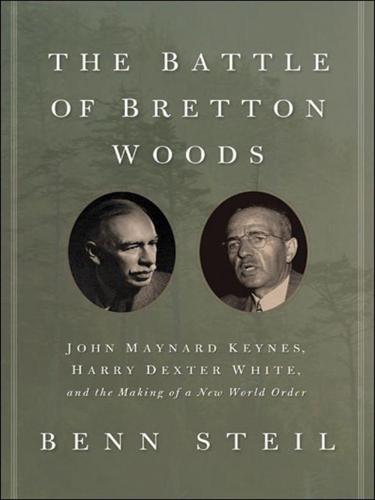
The Battle of Bretton Woods: John Maynard Keynes, Harry Dexter White, and the Making of a New World Order
by
Benn Steil
Published 14 May 2013
Inflation fell rapidly, down to an annualized 3.2 percent in 1983, a rate around which it began to stabilize, while economic growth resumed and jobs returned. Ultimate vindication would appear to have come in the form of the subsequent near-quarter-century stretch of relatively stable growth, underpinned by the Fed’s mastery of consumer price inflation, mainly under the tutelage of Alan Greenspan. A new age, dubbed “the Great Moderation,” was declared by Green-span’s successor, Ben Bernanke, and others.31 Harry White, it seemed, was wrong about gold; it was indeed, by all appearances, the barbarous relic that Keynes had tried to excise from man’s monetary consciousness. Over the course of the 1990s, the world’s central banks sold off large stocks of the relic, helping to drive its price down to $290 an ounce at the end of the millennium.
…
Switzerland, Japan, Brazil, and others intervened in the foreign exchange markets to counter what they saw as unacceptable upward pressure on their currencies. Though Mantega’s observation may have been hyperbolic, its widespread repetition reflected a palpable growing sense in the markets that dangers lay in the passing of the Great Moderation. Though the benign scenario of a gentle transition from a dollar-dominated world to one in which other developed and emerging market currencies play a much larger international role is plausible, precedent is lacking. When the dollar, pound, franc, and mark each played a reserve role in the early twentieth century, they were each surrogates for gold.
…
“Anglo-American Financial Relations during and since the War.” Four lectures delivered at the London School of Economics. In the possession of Peter Bareau. Bentley, Elizabeth. 1951 [1988]. Out of Bondage: The Story of Elizabeth Bentley. New York: Ballantine. Bernanke, Ben S. Feb. 20, 2004. “The Great Moderation.” Remarks by Governor Ben S. Bernanke at the meetings of the Easter Economic Association, Washington, D.C. Biographical Directory of the United States Congress. “Wolcott, Jesse Paine (1893–1969).” Available at http://bioguide.congress.gov/scripts/biodisplay.pl?index=W000668. Black, Conrad. 2003.

Zero-Sum Future: American Power in an Age of Anxiety
by
Gideon Rachman
Published 1 Feb 2011
In Mexico, the North American free-trade agreement was negotiated in 1993 by Carlos Salinas, a president with a doctorate in economics from Harvard. The self-confidence of economics as a profession was also rising. In 2004, Ben Bernanke, who was to succeed Greenspan as chairman of the Fed in 2006, gave a speech on a phenomenon he called “the Great Moderation.” He drew attention to the “substantial decline in macroeconomic volatility” over the past twenty years, or, in noneconomist-speak, the emergence of a long, economic boom whose peaks and troughs were much less pronounced than those experienced in more turbulent economic times. Bernanke considered three possible explanations for this happy outcome: luck, structural factors, and better economic policy.
…
Quoted in “India’s booming economy,” Economist, March 2, 2006, 66. 23. Vince Cable, The Storm: The World Economic Crisis and What It Means (London: Atlantic Books, 2009), 90. 24. Derek Chollet and James Goldgeier, America Between the Wars: From 11/9 to 9/11 (New York: PublicAffairs, 2008), 289. 25. Ben Bernanke, “The Great Moderation,” remarks at the meeting of the Eastern Economic Association, Washington, D.C., February 20, 2004. The speech is available from www.federalreserve.gov/boarddocs/speeches/2004. 26. It would be nice to claim a direct correlation between my joining the paper and its subsequent phenomenal success.
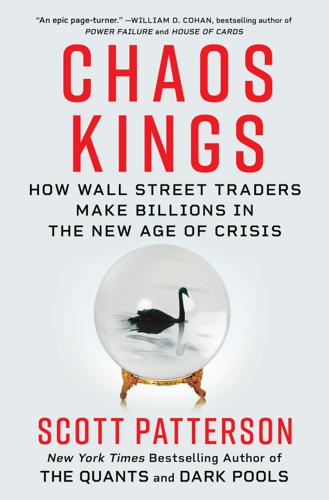
Chaos Kings: How Wall Street Traders Make Billions in the New Age of Crisis
by
Scott Patterson
Published 5 Jun 2023
Since Ben Bernanke was the new Fed chairman, it was now known as the “Bernanke Put.” The sentiment among pension funds and on the Street was: Who needs Universa when I’ve got the awesome power of the Federal Reserve at my back? Another roadblock was the prevailing belief on Wall Street that the market and the economy were in a long run of low volatility. Dubbed the Great Moderation after a 2004 speech given by Ben Bernanke in Washington, D.C., the theory gave investors hope that big crashes and recessions were a thing of the past. Some called it the Goldilocks economy—not too hot, not too cold. One explanation for the shift could be random good luck, Bernanke said in his speech.
…
One explanation for the shift could be random good luck, Bernanke said in his speech. Not likely, he pronounced. Instead, it was central bankers (such as himself) who’d helped provide the calm waters that were lifting all boats. “My view is that improvements in monetary policy, though certainly not the only factor, have probably been an important source of the Great Moderation,” Bernanke proclaimed. “If the economy is in the midst of a long-term shift into not-too-hot-or-cold moderation,” investors said, “why should I give money to a firm that lives and dies by crashes?” Spitznagel was also bedeviled by rumors about Empirica. If the strategy was so good, why shut it down?
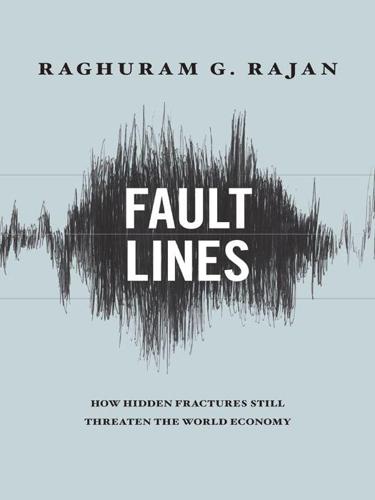
Fault Lines: How Hidden Fractures Still Threaten the World Economy
by
Raghuram Rajan
Published 24 May 2010
CHAPTER FIVE From Bubble to Bubble NO CENTRAL BANKER HAS HAD to adapt his views more under the public eye than Ben Bernanke, the chairman of the Federal Reserve Board. In February 2004, in a speech to the Eastern Economic Association, Bernanke, then a governor of the Federal Reserve Board, spoke of the “Great Moderation,” the observation that the fluctuations of output and inflation in industrial countries had come down steadily since the mid-1980s. Because the Holy Grail of economic management is strong, steady growth, without booms, busts, or high inflation, this trend suggested that something was working.
…
The representative-agent models were easy to work with and did offer useful predictions about policy, but they took for granted the plumbing underlying the industrial economy—the financial claims, the transactions, the incentive structures, the firms, the banks, the markets, the regulations, and so on. So long as these mechanisms worked well, the models were a useful simplification. And during much of the “Great Moderation” that Bernanke referred to, the plumbing worked well and served as a good basis for abstract reasoning. But as soon as the plumbing broke down, the models were an oversimplification. Indeed, the models themselves may have hastened the plumbing’s breakdown: with the Fed focused on what interest rates would do to output rather than to financial risk taking (few models had a financial sector embedded in them, let alone banks), financial risk taking went unchecked.
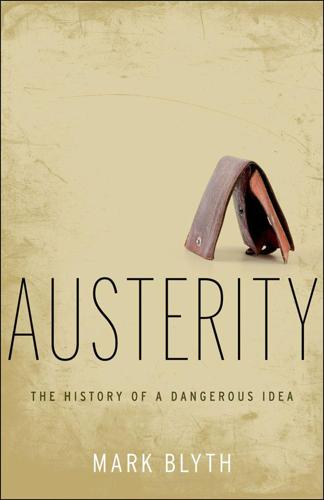
Austerity: The History of a Dangerous Idea
by
Mark Blyth
Published 24 Apr 2013
The “don’t bail them out” message taps into a strong current of populist American opinion.51 Meanwhile, the “don’t intervene/let it run its course” message found strong support in the right wing of the Republican Party and among elements of the financial community that were not too big to fail, particularly hedge funds.52 Why, then, apart from few key high-profile figures such as Glenn Beck, Peter Schiff, Ron Paul, and (the younger) Alan Greenspan, is it difficult to find mainstream economists, even in America, who publicly accept the Austrian theory of the business cycle? To see why, we need to look at the assets and liabilities side of the Austrian explanatory balance sheet. On the asset (theory) side, we find the action of central banks in producing asset bubbles with prolonged policies of too-cheap money and the epistemic hubris of managing the Great Moderation blowing up in the faces of the same central bankers who declared that they had tamed the cycle, which is not an unreasonable description of the 2000s. The broad sweep of an asset bubble’s inflation and deflation is well described by the basic Austrian model. The notion that debt is not simply redistributionary (my income is your debt) because leverage matters and that the payoff to debt financing is asymmetric, especially on the downside, is also a telling and important contribution.
…
Robinson, “Second Crisis,” 2. 42. Remember, in the Keynesian world, the point of spending money to stimulate the economy is not that money is causal per se. Rather, the point is to raise prices sufficiently to alter the expectations of investors, which in turn impacts employment and consumption. 43. Ben Bernanke, “The Great Moderation,” remarks at the meetings of the Eastern Economic Association, Washington DC, February 20, 2004. http://www.federalreserve.gov/boarddocs/speeches/2004/20040220/default.htm. 44. The rate of interest on the loan is less than the rate of return on the asset given rising prices, but the more interest rates play catch up, the more the returns are squeezed. 45.

A Pelican Introduction Economics: A User's Guide
by
Ha-Joon Chang
Published 26 May 2014
Even many leading advocates of globalization – like the Financial Times columnist Martin Wolf and the free-trade economist Jagdish Bhagwati – started questioning the wisdom of allowing free international capital flows. All was not well with the new global economy. The false dawn: from the dot.com boom to the Great Moderation When these crises were brought under control, talk of global financial reform receded. In the US, a major push in the other direction came in the form of the 1999 repeal of the iconic New Deal legislation, the 1933 Glass-Steagall Act, which structurally separated commercial banking from investment banking.
…
Growth was robust, if not exactly spectacular. Asset prices (prices of real estate, company shares and so on) seemed to be going up forever. Inflation remained low. Economists – including Ben Bernanke, the chairman of the Federal Reserve Board between February 2006 and January 2014 – talked of the ‘Great Moderation’, in which the science of economics had finally conquered boom and bust (or the economy going up and down by large margins). Alan Greenspan, the chairman of the Federal Reserve Board between August 1987 and January 2006, was revered as the ‘Maestro’ (as immortalized in the title of his biography by Bob Woodward of Watergate fame) who had a near-alchemical skill in managing a permanent economic boom without stoking inflation or courting financial trouble.

EuroTragedy: A Drama in Nine Acts
by
Ashoka Mody
Published 7 May 2018
The eurozone’s increasing vulnerabilities lay hidden under a less well-understood combination of convergence of interest rates, an overgrown banking system, and declining productivity growth. As the good times continued, policymakers and investors on both sides of the Atlantic concluded that they could ignore the financial risks. In 2004, concern about “irrational exuberance” peaked, and the “great moderation” narrative gained strength (figure 4.2). The “great moderation” narrative relied on studies which showed that, in the previous two decades, most advanced economies had experienced infrequent and shallow recessions.9 The inference that an increasing number of observers drew was that this benign economic state would continue.
…
“Great moderation” overcomes “irrational exuberance.” (Indices of usage of phrases “great moderation” and “irrational exuberance” in books digitized by Google) Source: Google Books Ngram Viewer. concentrated in a few hidden pockets and that over time, financial markets would better serve the common good. As if to validate the great moderation narrative, during the course of 2004, the global “fear” index—the VIX, a measure of future volatility of the US stock market—fell steadily toward 15, well below its historical average of 20. Crucial to the benign “great moderation” view was the growing presence of “independent” central banks.
…
“Election Pledge Sees Finland Take Tough Line on Euro Crisis.” Financial Times, July 13. Strupczewski, Jan. 2008. “ECB Makes Record Rate Cut.” Reuters News, December 4. Sturdee, Simon. 2010. “German MPs Debate Unpopular Greek Aid,” Agence France-Presse, May 7. Summers, Peter. 2005. “What Caused the Great Moderation? Some Cross- Country Evidence.” Federal Reserve Bank of Kansas City Economic Review Third Quarter: 5–32. Sunday Business Post. 2009. “Our Banks Keep Going Back for More,” December 6. Sunday Business Post. 2015. “Greek Crisis: The Battle of the Bailout Boys,” June 28. Sunstein, Cass, and Reid Hastie. 2017.
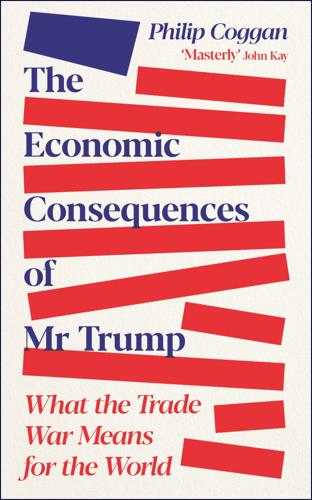
The Economic Consequences of Mr Trump: What the Trade War Means for the World
by
Philip Coggan
Published 1 Jul 2025
In the meantime, China’s trade boomed and the country leapt from being the fourth-largest manufacturer in the world in 2000 to being top of the league in 2023, with a market share double the size of the US’s.7 This coincided with a loss of US manufacturing jobs in the early 2000s and explains much of the resentment towards China among the US public, and in Mr Trump’s circle. The second development that undermined support for globalisation was the financial crisis of 2007–9. The financial sector was liberalised in the 1980s and 1990s, during a period dubbed the ‘great moderation’ when inflation was low and recessions were rare. Throughout these years, interest rates fell and share prices boomed making many financiers rich. Since they were wealthy, it was common to assume that financiers were smart (rather than lucky). Few politicians wanted to interfere with this boom, not least because bankers and fund managers in the US made hefty campaign contributions.
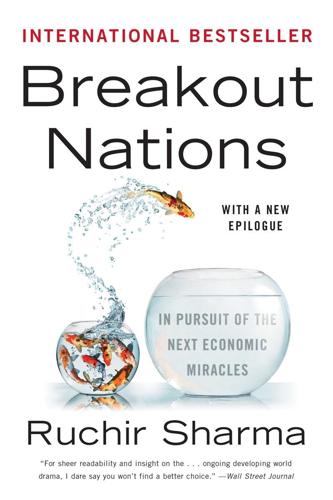
Breakout Nations: In Pursuit of the Next Economic Miracles
by
Ruchir Sharma
Published 8 Apr 2012
The data for the rest of the world are sketchier but similar. Since the early 1980s in the developing nations, the economic cycle of recovery and recession has typically run for around eight years, double the historical average of four years. In the United States the flattening of the business cycle came to be known as “the Great Moderation,” and at its peak, debate raged about whether this comfortable new environment was here to stay. The agony of 2008 ended that wishful discussion. Before the crisis, recessions had moderated in depth and length, due in large part to the almost limitless ability of the United States to fund growth by borrowing, mainly from the rest of the world.
…
It is also why emerging markets, too, can expect a shift to more frequent downturns. If the historical record cited above is any guide, the expansion phases are likely to shorten by a half or more to around three years across the global economy. The Upside of Hard Landings Volatility may be scary, but it is not necessarily bad for long-term growth. The Great Moderation of recent decades did nothing to increase the long-term growth rate of the United States, nor did the sharp booms and busts of the late nineteenth century do anything to slow the overall explosion of U.S. economic growth. What we have often seen is that nations with the wherewithal to pay for a soft landing out of recession frequently end up sinking in this expensive pillow.
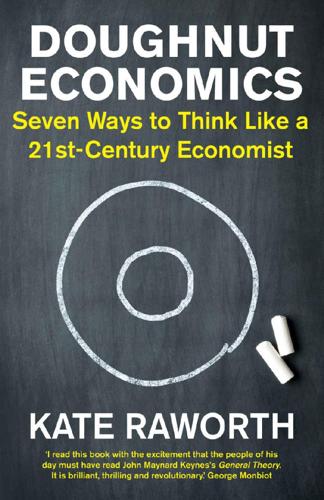
Doughnut Economics: Seven Ways to Think Like a 21st-Century Economist
by
Kate Raworth
Published 22 Mar 2017
Good luck.’25 Thanks to the dominance of equilibrium thinking, most economic policymakers eschewed the idea that instability could arise from the dynamics at play within the economy itself. In the decade running up to the crash, and oblivious to the build-up of systemic risk, the UK’s chancellor, Gordon Brown, hailed the end of boom and bust,26 while Ben Bernanke, Governor of the Federal Reserve Board welcomed what he called ‘the Great Moderation’.27 After 2008, when the boom went very bust, many started to search for insights in the long-ignored work of the economist Hyman Minsky, especially his 1975 financial-instability hypothesis, which put dynamic analysis at the heart of macroeconomics. Minsky had realised that – counter-intuitive though it sounds – when it comes to finance, stability breeds instability.
…
Holodny, E. (2016) ‘Isaac Newton was a genius but even he lost millions in the stock market’, 20 January 2016, Businessinsider.com, available at http://uk.businessinsider.com/isaac-newton-lost-a-fortune-on-englands-hottest-stock-2016-1?r=US&IR=T 25. Keen, S. Rethinking Economics Kingston 2014, 19 November 2014. https://www.youtube.com/watch?v=dR_75cdCujI 26. Brown, G. (1999), Speech to the Labour Party Conference, 27 September 1999. http://news.bbc.co.uk/1/hi/uk_politics/458871.stm 27. Bernanke, B. (2004) ‘The Great Moderation’. Remarks at the meeting of the Eastern Economic Association, Washington, DC, 20 February 2004. http://www.federalreserve.gov/boarddocs/speeches/2004/20040220/ 28. Minsky, H. (1977) ‘The Financial Instability Hypothesis: an interpretation of Keynes and an alternative to Standard Theory’, Challenge, March–April 1977, pp. 20–27. 29.
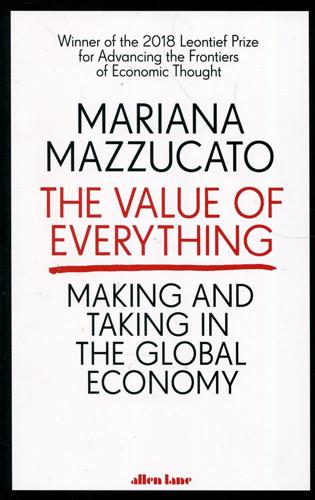
Value of Everything: An Antidote to Chaos The
by
Mariana Mazzucato
Published 25 Apr 2018
After the 2008 financial crash - triggered in part by debt securitizations rendered worthless by default on the underlying mortgages - attention turned to securitizing other forms of obligation, among them ‘personal contract plans’ and other car loans, student loans and residential rents. Political leaders and financial experts praised financial markets for helping goods and services markets to work more efficiently and grease the wheels of capitalism. In his ‘The Great Moderation' speech in 2004, Ben Bernanke, who later became the Chairman of the US Federal Reserve, said: ‘The increased depth and sophistication of financial markets, deregulation in many industries, the shift away from manufacturing toward services, and increased openness to trade and international capital flows are other examples of structural changes that may have increased macroeconomic flexibility and stability.'35 Spectacular growth in the volume of derivatives - which can be traded even if the underlying assets were never delivered or deliverable - was viewed as helping to reduce systemic risks and ‘get prices right'.
…
BEA, Measuring the Economy: A Primer on GDP and the National Income and Product Accounts (Washington, DC: Bureau of Economic Analysis, US Department of Commerce, 2014): http://www.bea.gov/national/pdf/nipa_primer.pdf Beesley, A. and Barker, A., ‘Apple tax deal: How it worked and what the EU ruling means', Financial Times, 30 August 2016: https://www.ft.com/content/cc58c190-6ec3-11e6-a0c9-1365ce54b926 Bentham, J., A Fragment on Government (London: 1776). Bergh, A. and Henrekson, M., ‘Government size and growth: A survey and interpretation of the evidence', Journal of Economic Surveys, 25(5) (2011), pp. 872-97: http://doi.Org/10.1111/j.1467-6419.2011.00697.x Bernanke, B. S., ‘The Great Moderation', remarks at the meetings of the Eastern Economic Association, Washington, DC, 20 February 2004. Bessen, J. and Meurer, M. J., The Patent Litigation Explosion, 45 Loy. U. Chi. L. J. 401 (2013): http://lawecommons.luc.edu/luclj/vol45/iss2/5 Bessen, J. and Meurer, M. J., ‘The direct costs from NPE disputes', Cornell Law Review, 99(2) (2015).
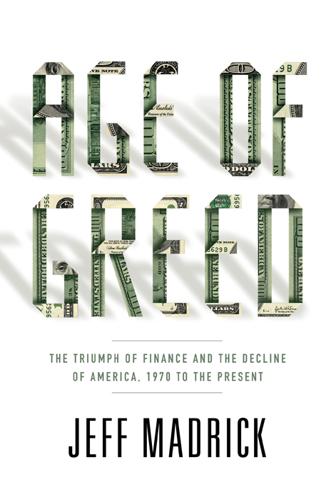
Age of Greed: The Triumph of Finance and the Decline of America, 1970 to the Present
by
Jeff Madrick
Published 11 Jun 2012
Still, even Democrats adopted Friedman’s natural unemployment rate hypothesis. Friedman turned the attention of the nation’s policymakers to keeping inflation low and it became an unchallenged priority for them. Many economists hailed the resulting low inflation that began in the 1990s as the beginning of a new stable age of ideal growth—which became known as the Great Moderation. Much the opposite is more likely. The anti-inflationary policies were adhered to too firmly, and contributed significantly to slower rates of growth, higher levels of unemployment, the disappointing growth rate of productivity until the late 1990s, and stagnating wages. Extreme speculative excesses arose in other areas while Friedman’s anti-inflation heirs were in charge—in high-technology stocks in the late 1990s and mortgage finance in the 2000s, to take but the starkest examples.
…
Economists at the International Monetary Fund, for example, suggested the annual target for inflation could be raised from 2 percent to 4 percent. “Nobody knows the cost of inflation between 2 and 4 percent,” wrote the IMF chief economist and former MIT professor Olivier Blanchard, who once fully expressed his faith in the benefits of the Great Moderation. “So I think people could get used to 4 percent and the distortions would be small.” In 1980, the Friedmans published a simple version of Capitalism and Freedom called Free to Choose, which was the basis of a public television series. By then he was internationally known and respected and his criticism of government was carried across the world.
…
Blinder, Economic Policy and the Great Stagflation (New York: Academic Press, 1979), p. 103. 59 THERE HAS BEEN SO MUCH CORROBORATING RESEARCH: Alan S. Blinder and Jeremy B. Rudd, “The Supply Shock Explanation of the Great Stagflation Revisited,” Center for Economic Studies Working Paper, No. 176, Princeton, November 2008, p. 49. 60 MANY ECONOMISTS HAILED: Ben S. Bernanke, “The Great Moderation,” Speech, February 2004, http://www.bis.org/review/r040301f.pdf. 61 THERE HAD BEEN DISSENTERS: George A. Akerlof, William T. Dickens, and George L. Perry, “Near-Rational Wage and Price Setting and the Optimal Rates of Inflation and Unemployment,” Brookings Papers on Economic Activity, Economic Studies Program, The Brookings Institution, vol. 31 (2000–2001), pp. 1–60. 62 “NOBODY KNOWS THE COST”: On Blanchard’s inflation targeting, see Chris Giles, “IMF Experts Spell Out Policy Flaws,” Financial Times, February 12, 2010, p. 3; Akerlof, Dickens, and Perry, “Near-Rational Wage and Price Setting and the Optimal Rates of Inflation and Unemployment,” p. 1. 63 RATHER, HIS SOCIAL POLICY WAS DRIVEN: Friedman, Capitalism and Freedom, p. 169. 64 “THE GREAT ADVANCES OF CIVILIZATION”: Ibid., p. 5. 65 “THE GREAT ACHIEVEMENT OF CAPITALISM”: Ibid., p. 169. 66 “I HAVE ALWAYS BEEN IMPRESSED”: Friedman and Friedman, Two Lucky People, pp. 217–18.

Democracy and Prosperity: Reinventing Capitalism Through a Turbulent Century
by
Torben Iversen
and
David Soskice
Published 5 Feb 2019
The center and left both benefited from redistribution, and there is a strong relationship between PR and center-left governments (Iversen and Soskice 2006). But redistribution only occurred up to the point where it did not seriously undermine investment incentives or jeopardize middle-class interests. The great moderating force in the Fordist system was the interconnectedness of interests, which was rooted in the ubiquity of cospecific assets. That made it hard for any group to move forward without moving others along too, not unlike chain gangs. As we have seen in the previous chapter, one institutional expression of this interconnectedness is the delegation of regulatory policies to legislative committees with proportional party representation and close ties to the bureaucracy where the main interest organizations are routinely consulted.
…
In the system of inflation targeting, independent central banks were given responsibility for macroeconomic management and used interest rates to return deviations of inflation and unemployment to their target or equilibrium values. They did so in the common New Keynesian macroeconomic framework that we discussed above. Many policy-oriented macroeconomists agreed with Ben Bernanke’s assessment that this system was responsible for the Great Moderation in inflation and unemployment since the early 1990s. In addition, that inflation targeting should be carried out without international coordination was not disputed. Indeed, inflation targeting within the New Keynesian framework and without international coordination is still generally accepted.
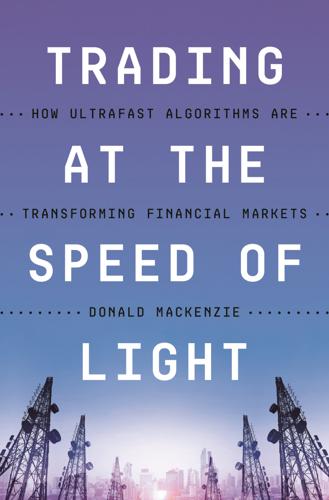
Trading at the Speed of Light: How Ultrafast Algorithms Are Transforming Financial Markets
by
Donald MacKenzie
Published 24 May 2021
On July 2, 2007, the banking giant Citigroup announced it was paying $680 million to buy ATD, not as an HFT firm but as a wholesaler. ATD’s “wholesale market-making arm … is what Citi acquired,” says BD. The date of the purchase is significant. Banks such as Citigroup had become hubristic during the years of what some commentators had started to call “the great moderation” (Bernanke 2004), and that seemingly benign period was soon to end in the most dramatic fashion imaginable. In the weeks after Citigroup paid that huge sum to buy ATD, it started to become clear that the banking system, Citigroup included, was in deep difficulty. The stricken bank did not make a success of its expensive purchase.
…
Benos, Evangelos, and Satchit Sagade. 2016. “Price Discovery and the Cross-Section of High-Frequency Trading.” Journal of Financial Markets 30: 44–77. Berkowitz, Stephen A., Dennis E. Logue, and Eugene A. Noser. 1988. “The Total Cost of Transactions on the NYSE.” Journal of Finance 43/1: 97–112. Bernanke, Ben S. 2004. “The Great Moderation.” Available at https://www.federalreserve.gov/boarddocs/speeches/2004/20040220/, accessed January 9, 2020. Beunza, Daniel. 2019. Taking the Floor: Models, Morals, and Management in a Wall Street Trading Room. Princeton, NJ: Princeton University Press. Beunza, Daniel, and Raghu Garud. 2007.

The Age of Cryptocurrency: How Bitcoin and Digital Money Are Challenging the Global Economic Order
by
Paul Vigna
and
Michael J. Casey
Published 27 Jan 2015
Memories of that period, where inflation drastically eroded the value of the dollars in people’s pockets and then forced them into a painful economic contraction, are still so strong among a certain generation that they feed the appeal of scarce, independent “currencies” such as gold and, as we shall see, bitcoin. After Volcker’s tough love, things improved enormously, at least for a time. A period known as the Great Moderation set in for industrialized countries, with low, predictable inflation and steady growth marred only by the occasional, short-lived recession. Europe embarked on a truly bold new experiment to create a currency union, one that for the first ten years of its existence seemed to be a rip-roaring success, as the euro miraculously conveyed Germany’s sound credit rating to once backwater countries such as Ireland and Spain, which enjoyed a tremendous influx of capital and an unprecedented housing boom.
…
As if learning from the Renaissance merchant bankers, Wall Street had again found an effective way to take sovereign money and multiply it many times over through a form of private money built on debt. But it was happening in an area that was far more thinly regulated than the traditional banking system. When it finally dawned on people how important this shadow system was, it was too late. With the collapse of Lehman Brothers, this fragile edifice came tumbling down. The Great Moderation had carried a curse. Not only did it foster a false sense of security, but also it caused us to forget our responsibilities as a society to use our political process to change unwelcome economic circumstances. Everyone from voters to Wall Street traders to congressmen to the president wanted to believe the financial system could be left in the hands of the Fed.

How Markets Fail: The Logic of Economic Calamities
by
John Cassidy
Published 10 Nov 2009
A month later, Ben Bernanke, who was then a Fed governor, gave Greenspan and himself another pat on the back, arguing that “improvements in monetary policy” had been an important source of the extended period of relative economic calm dating back to the 1980s, which economists referred to as the Great Moderation. Bernanke said he was “optimistic for the future” because policymakers were unlikely to forget the lessons they had learned. In reality, the Fed, by keeping interest rates artificially low, was in the process of substituting one bubble for another. John B. Taylor, a well-known Stanford economist, has put forward a simple equation that shows what interest rate the Fed should set depending on the level of inflation and unemployment.
…
Credit Rating Agencies Paid by issuers. Generous fees. Most subprime securities rated “AAA” or “AA.” Hedge Funds/Sovereign Wealth Funds/Mutual Funds Ultralow interest rates. Investment-grade ratings for subprime securities. Search for “yield.” Heavy demand for subprime securities. Regulators/Policymakers “The Great Moderation.” Low inflation. Illusion of harmony/Illusion of stability. Disaster myopia. Interest rates too low. Deregulation pressed too far. What the table doesn’t show is how the various incentive problems aggravated and reinforced one another. At any one point in time, incentives can get distorted in a particular market.
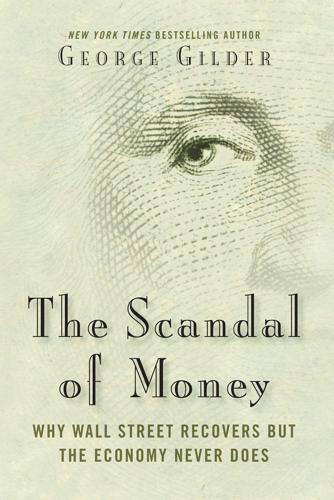
The Scandal of Money
by
George Gilder
Published 23 Feb 2016
Spearheading the Wall Street expansion and the jobs boom were thousands of initial public offerings, from Apple and Genentech to Netscape and Qualcomm, the most lucrative coming from a carnival of invention in Silicon Valley.3 American creativity ramified through a globalizing world economy, with the number of poor people living at the subsistence level of less than a dollar a day, adjusted for inflation, dropping by 20 percent. Markets battened on two billion new entrants into the middle classes from China and other emerging nations. All seemed to be well with the monetary regime, dubbed the “great moderation” by Alan Greenspan, the guru of growth. But beneath a placid surface, the worldwide monetary system was breaking down. Toward the end of the millennium, the world plunged into an Asian monetary debacle, the dot-com crash, the telecom debauch, and the Russian ruble meltdown. A thousand telecom companies went bankrupt.
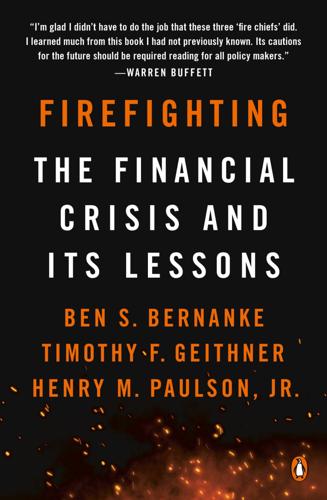
Firefighting
by
Ben S. Bernanke
,
Timothy F. Geithner
and
Henry M. Paulson, Jr.
Published 16 Apr 2019
ANTECEDENTS A “quiet period” of relatively low bank losses had extended for nearly 70 years and created a false sense of strength. Two-year historical loan-loss rates for commercial banks Sources: Federal Deposit Insurance Corp.; Federal Reserve Board; International Monetary Fund ANTECEDENTS The “Great Moderation”—two decades of more stable economic outcomes with shorter, shallower recessions and lower inflation—had added to complacency. Quarterly real GDP growth, percent change from preceding period Source: Bureau of Economic Analysis via Federal Reserve Economic Data (FRED) ANTECEDENTS Long-term interest rates had been falling for decades, reflecting decreasing inflation, an aging workforce, and a rise in global savings.

More: The 10,000-Year Rise of the World Economy
by
Philip Coggan
Published 6 Feb 2020
Central banks hired vast hordes of economists, sought out new data, interviewed businesses and consumers for evidence of their outlook, and published detailed forecasts for growth, unemployment and inflation. For a long while, this approach seemed to work perfectly. The 1990s and early 2000s were dubbed the era of the “great moderation”, with inflation low and the economy stable. Alan Greenspan, Mr Volcker’s successor, was dubbed the “maestro”, and, rather than being bullied by presidents, Greenspan’s approbation was sought by them for their policies. In Europe, the biggest development was the creation of the European Central Bank (ECB) in 1998, which was formed to take charge of the new single currency, the euro.
…
Without them, we cannot hope to improve our standard of living or tackle global issues such as climate change. Indeed, technological change may be needed to pull the developed world economies out of the doldrums in which they became marooned in 2007. — 18 — THE CRISIS AND AFTER: 2007 TO TODAY Economists called the period from 1982 to 2007 “the great moderation”, a long era of steady growth and low inflation. Gordon Brown, Britain’s longest-serving finance minister, talked of “no more boom and bust”. But the boom came to an end, in spectacular fashion, with the financial crisis of 2007 and its aftermath. The depth of the crisis was worse than anything seen since the 1930s.
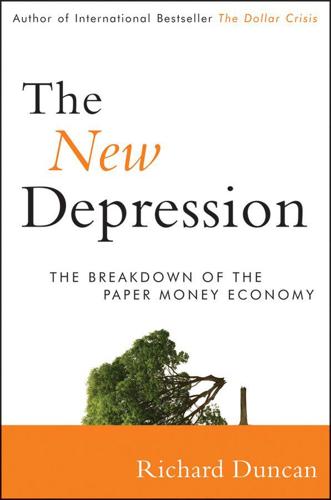
The New Depression: The Breakdown of the Paper Money Economy
by
Richard Duncan
Published 2 Apr 2012
Rising debt drove the U.S. economy and created employment by pushing up asset prices, but consumer price inflation remained low as an increasing share of the goods sold in the country was made with $5 per day labor. The U.S. trade deficit reached 6 percent of GDP in 2006. The Fed likes to take credit for the “Great Moderation” in inflation during recent decades. But monetary policy had very little to do with it. The disinflation was the result of a collapse in the marginal cost of labor. Thus, it was an unprecedented combination of events—fiat money, technological advances in transportation and communications, large global trade imbalances, and cross-border capital flows—that permitted the truly extraordinary expansion of credit that has occurred in the Unites States since the early 1980s.
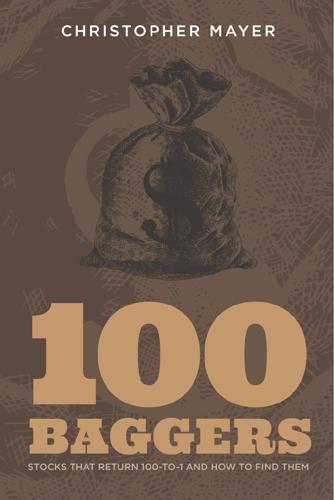
100 Baggers: Stocks That Return 100-To-1 and How to Find Them
by
Christopher W Mayer
Published 21 May 2018
Here I borrow from another favorite sage, that corncob-pipe-smoking disheveled man of letters Paul Goodman. “I can’t think abstractly,” he wrote. “I start from concrete experience.” He cracked that because he stuck so close to concrete experience, he “cannot really write fiction.” People take easily, though, to big ideas: The new economy. Peak oil. The Chinese century. The Great Moderation. All of these things are just abstract ideas. They are predictions about how the world might look. But they are far from concrete experience—and hence likely to lead you astray. And each of the abstractions I mentioned has led investors astray. “Investment,” author John Train once wrote, “is the craft of the specific.”

Who Is Government?: The Untold Story of Public Service
by
Michael Lewis
Published 18 Mar 2025
If it’s true that “the Great Inflation was the defining macroeconomic event of the second half of the twentieth century,” as the Federal Reserve argues, then it’s also true that this entire episode has been largely forgotten. Many younger than 50 spent much of their adulthood living through the “Great Moderation,” as it was hubristically dubbed. Boom-and-bust was a thing of the past, and inflation just wasn’t something anyone had to think about. That has changed dramatically since 2020. To take just three examples: From November 2021 to November 2022, butter prices went up 41.4 percent, fuel oil by 65.7 percent and school lunches by 254 percent.
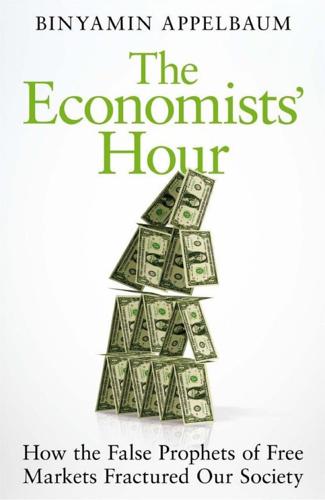
The Economists' Hour: How the False Prophets of Free Markets Fractured Our Society
by
Binyamin Appelbaum
Published 4 Sep 2019
In the United States in 2007, the top 10 percent of households owned 71.6 percent of the nation’s wealth.117 By punishing workers and rewarding lenders, monetary policy was contributing to the rise of economic inequality. There was another problem, too: low inflation had not delivered economic stability. The Great Moderation was about to give way to the Great Recession. As the economy tipped over the edge of the waterfall, some Fed officials still kept their eyes on prices. “Containing inflation is the purpose of the ship I crew for,” Richard Fisher, the president of the Federal Reserve Bank of Dallas, declared in March 2008, three months after the start of the recession in the United States.
…
Robert Lucas Jr., “The Industrial Revolution: Past and Future,” in 2003 Annual Report (Minneapolis: Federal Reserve Bank of Minneapolis, 2004); available at minneapolisfed.org/publications/the-region/the-industrial-revolution-past-and-future. 116. The unemployment rate does not include people who are not actively seeking work. In 1979, at the height of stagflation, roughly 3.5 million American men in their prime working years, ages 25 to 54, were on the sidelines. By 2007, in the midst of the Great Moderation, roughly 8.5 million prime-age American men were on the sidelines. In percentage terms, the Bureau of Labor Statistics says the rate of non-employment among men ages 25 to 54 rose from 8.9 percent in January 1979 to 14 percent in January 2008. Until roughly the turn of the century, this trend was offset by increased female workforce participation.
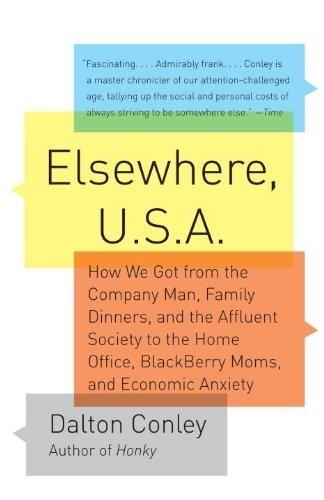
Elsewhere, U.S.A: How We Got From the Company Man, Family Dinners, and the Affluent Society to the Home Office, BlackBerry Moms,and Economic Anxiety
by
Dalton Conley
Published 27 Dec 2008
Even the highly publicized layoffs of white-collar employees are a media myth: economists Steven Allen, Robert Clark, and Sylvester Schieber find that average job “tenure and the percentage of employees with 10 or more years of service have actually increased” in large firms, the type that are often spotlighted in news reports.6 In fact, when we look at the economy as a whole, we find that volatility has greatly decreased over the last twenty-five years. Recessions are shallower and recoveries are smoother. Unemployment and interest rates don’t vary as sharply. (Remember 17 percent interest rates on thirty-year mortgages in 1981?) Economists call this “the great moderation” and argue over what has caused it.2† Here’s one of the places where it is important to distinguish between earnings, on the one hand, and income, on the other. Research by none other than the Congressional Budget Office has demonstrated that among those employed, earnings volatility has been flat since at least 1981 (as far back as they were able to look).

More Money Than God: Hedge Funds and the Making of a New Elite
by
Sebastian Mallaby
Published 9 Jun 2010
The more markets could be rendered efficient, the more capital would flow to its most productive uses. The less prices got out of line, the less risk there would presumably be of financial bubbles—and so of sharp, destabilizing corrections. By flattening out the kinks in market behavior, hedge funds were contributing to what economists called the “Great Moderation.” But hedge funds also raised an unsettling question. If markets were prone to wild bubbles and crashes, might not the wildest players render the turbulence still crazier? In 1994, the Federal Reserve announced a tiny one-quarter-of-a-percentage-point rise in short-term interest rates, and the bond market went into a mad spin; leveraged hedge funds had been wrong-footed by the move, and they began dumping positions furiously.
…
Hedge funds were reliant upon the patience of their investors, who could yank their money out on short notice. But patience ended abruptly when markets went into a tailspin. Investors demanded their capital back, and some funds withheld it by imposing “gates.” Surely now it was obvious that the risks posed by hedge funds outweighed the benefits? Far from bringing about the Great Moderation, they had helped to trigger the Great Cataclysm. This conclusion, though tempting, is almost certainly mistaken. The cataclysm has indeed shown that the financial system is broken, but it has not actually shown that hedge funds are the problem. It has demonstrated, to begin with, that central banks may have to steer economies in a new way: Rather than targeting consumer-price inflation and turning a blind eye to asset-price inflation, they must try to let the air out of bubbles—a lesson first suggested, incidentally, by the hedge-fund blowup of 1994.

Adaptive Markets: Financial Evolution at the Speed of Thought
by
Andrew W. Lo
Published 3 Apr 2017
Even if all stakeholders in the economy are behaving entirely ethically and responsibly, the combined effect of these three economic trends—which we call the “refinancing ratchet effect”—paves the way for a systemwide shock. Why did the crisis generate such a large shock to the American financial system? From the Adaptive Markets perspective, an immediate explanation is that our financial institutions adapted to the Great Moderation, the extended period of decreased economic volatility starting in the mid-1980s, and ending with the financial crisis of 2008 (not to be confused with the Great Modulation described in the last chapter).37 Investors, legislators, managers, and regulators adapted to less volatile times and neglected the earlier financial adaptations that allowed us to thrive in more volatile times.
…
This term also refers to both economic and regulatory reforms that were put in place in the wake of the Great Depression to modulate financial activity, including much of the U.S. code that now governs the entire financial system: the Glass-Steagall Act of 1932, the Banking Act of 1933, the Securities Act of 1933, the Securities Exchange Act of 1934, the Investment Company Act of 1940, and the Investment Advisers Act of 1940. The Great Modulation should not be confused with the “Great Moderation,” a term coined by Stock and Watson (2002) that refers to the 1987–2007 period of lower volatility in the U.S. business cycle. The two concepts are clearly related. 4. Specifically, it is a graph of 1,250-day geometrically compounded annualized returns for the CRSP value-weighted return index. 5.
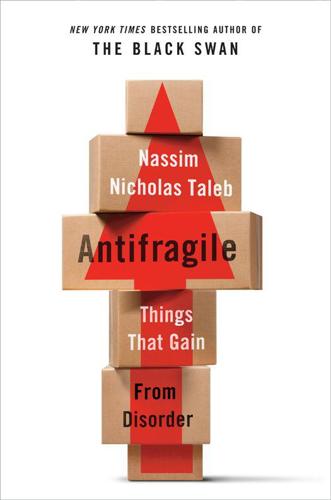
Antifragile: Things That Gain From Disorder
by
Nassim Nicholas Taleb
Published 27 Nov 2012
As we will see, Ben Bernanke was similarly fooled with his Great Moderation, a turkey problem; one can be confused by the properties of any process with compressed volatility from the top. Some people, like Steven Pinker, misread the nature of the statistical process and hold such a thesis, similar to the “great moderation” in finance. CHAPTER 6 Tell Them I Love (Some) Randomness Maxwell in Extremistan—Complicated mechanisms to feed a donkey—Virgil said to do it, and do it now The point of the previous chapter was that the risk properties of the first brother (the fragile bank employee) are vastly different from those of the second one (the comparatively antifragile artisan taxi driver).
…
Great Moderation: A turkey problem. Before the turmoil that started in 2008, a gentleman called Benjamin Bernanke, then a Princeton professor, later to be chairman of the Federal Reserve Bank of the United States and the most powerful person in the world of economics and finance, dubbed the period we witnessed the “great moderation”—putting me in a very difficult position to argue for increase of fragility. This is like pronouncing that someone who has just spent a decade in a sterilized room is in “great health”—when he is the most vulnerable. Note that the turkey problem is an evolution of Russell’s chicken (The Black Swan).

Stress Test: Reflections on Financial Crises
by
Timothy F. Geithner
Published 11 May 2014
The fundamental causes of this crisis were familiar and straightforward. It began with a mania—the widespread belief that devastating financial crises were a thing of the past, that future recessions would be mild, that gravity-defying home prices would never crash to earth. This was the optimism of the Great Moderation, the delusion of indefinite stability. This mania of overconfidence fueled an explosion of credit in the economy and leverage in the financial system. And much of that leverage was financed by uninsured short-term liabilities that could run at any time. This combination of a long rise in borrowing fueled by leverage in runnable form is the foundation of all financial crises, and it would have been dangerous in any financial system.
…
There’s no way to be sure exactly when a bubble will pop, no certain way to prevent a mania from becoming a panic. Manias are inherently unpredictable, and regulators are not immune to them. Long periods of success in avoiding financial collapses can actually increase vulnerability to catastrophe, because stability can breed instability. At the New York Fed, I got to see how much power the belief in the “Great Moderation” had over smart people, and to witness its expression in the credit boom. Even though we leaned against the prevailing winds, warning about the growth of leverage and the risks of the shadow banking system, taking some useful steps to encourage stress-testing and limit the danger of derivatives, we were not forceful or creative enough, and we didn’t have the tools necessary to avert disaster.

The Price of Time: The Real Story of Interest
by
Edward Chancellor
Published 15 Aug 2022
Over the following five years, the Fed’s key policy rate remained well below the country’s rate of economic growth. The era of easy money had well and truly begun. At the same time, inflation remained under control. Across the developed world, central bankers were meeting their inflation targets. Economists referred to the low inflation and mild downturns of the early 2000s as the ‘Great Moderation’, a benign state of affairs that they ascribed to improvements in monetary policymaking. Central bankers found it hard to disagree. In the United Kingdom, the Bank of England coined an acronym, NICE (non-inflationary consistent expansion), to describe these splendid circumstances.23 The British Chancellor of the Exchequer, Gordon Brown, hailed an end to boom and bust.
…
Scott, 203 Florence, 21–3 ‘Fordism’, 89 Fordyce, Alexander, 63 foreign exchanges, xxv; currencies pegged to the dollar, 251, 252, 253; dollar as global reserve currency, xxiii, 118, 239, 251–2, 253, 261, 262–3, 267; French currency during Mississippi bubble, 56–7; growth of reserves, 252, 253, 254–5, 256; international bills of exchange, 24; Louvre Accord (1987), 105–6; printing of money to acquire reserves, 137, 252; Shanghai Accord (2016), 241, 241*; undervalued Chinese yuan, 267–8, 270, 271 Forest Service, US, 154–5 France: 1848 Revolution, xix; allocation of capital in Bretton Woods era, 291; French Louisiana, 50, 52; Law and depreciated government debt, 48, 50, 51–2, 59, 65, 69; Law and paper money, xxii, 47, 52, 55–8; Law as Finance Minister, 46, 57; Law establishes General Bank (1716), 49–50; Law’s Mississippi Company, 46, 50–61, 65, 68, 172–3, 178, 202–3, 273, 286, 298, 308; Les Trente Glorieuses, 302; and long-term bonds, 225; Palais Mazarin, Paris, 54, 54*; rentier term, 7; Revolutionary/Napoleonic Wars, 41–2, 69–70; Royal Bank, 50, 52, 53, 57, 58; war with England (1690s), 38 Francis, Pope, 201, 213 Franklin, Benjamin, Advice to a Young Tradesman (1748), xviii, 22, 28, 190 fraud, 64, 80, 149 free market economics, 95–6, 295–6 Freud, Lucien, 208 Frick, Henry, 157–8 Fridson, Martin, 146 Friedman, Milton, 98, 99, 101, 131 Fugger, Jakob, 202 Fullarton, John, 67–8, 71, 75 Gage, Lyman, 83, 311 Galai, Dan, 228–9 Galbraith, John Kenneth, 287 Galiani, Ferdinando, 218–19, 220, 221, 222, 233 GameStop (retailer), 307 Garber, Peter, 60 Gehringer, Agnieszka, 134–5 Geithner, Tim, 76 General Electric, 156, 157, 159, 170–71 General Motors, 90, 166–7 General Strike (UK, 1926), 86 Genoa, 22, 23, 35, 47–8, 49 George, Henry, 243, 246, 260* Gergy, Jacques Vincent, Count of, 60 Germany, 7, 159, 225, 291, 299; economy in 1920s, 82, 91, 92, 93; and Eurozone crisis, 144–5; negative interest rates in, 192–3, 245; Wirtschaftswunder, 302 Gesell, Silvio, 242–3, 246, 294 ‘gig economy’, 149 Gladstone, William, 40, 72, 76* Glahn, Richard von, 265* Glass–Steagall Act, 232 Global Asset Management, 228, 228* globalization: feedback loop with interest rates, 260–61, 311; first wave of (from 1860s), 260, 311; global aspect of inflation, 122; and great bubbles of history, 263; political backlash against in West, 261; recent phase (from 1980), 260–61, 311 Goetzmann, William, 8†, 14, 60, 247 Gold Exchange Standard, 11, 85, 85*, 86, 87, 90*, 261 Gold Standard, 43, 82, 84–5, 85*, 86, 98, 99, 133, 251 Goldman Sachs, 175, 255, 258 Goodhart, Charles, 105, 121, 127, 246 Gopinath, Gita, 144 Gordon, Robert, 128 Goschen, George, 77, 78–9 Goschen conversion (1888), 65*, 79 Graham, Benjamin, 90–91 Grant, Albert, 73 Grant, James, 82, 118, 141, 148, 191, 194, 230–31, 297; on Fed’s dual mandate, 155; on negative-yielding bonds, 226; on radical monetary gimmicks, 242; on regulation, 232; The Forgotten Depression, 100 Grantham, Jeremy, 183 Great Depression, 98–101, 98*, 105, 108, 125–6, 129, 142–3, 299 see also Wall Street Crash (October 1929) Great Fire of London (1666), 33 the ‘Great Moderation’, 112 Great Recession, 146, 152–3, 181–2, 206–17, 221–4; and secular stagnation argument, 124–5, 126–8, 131; slow recovery in developed world, 124–5, 126–9, 131–2, 150–53, 298–9, 304; and support for democracy, 299 see also financial crisis (2008) Greece, 144–5, 147, 148*, 253, 262, 293; ancient/classical, 6, 9, 10–11, 11*, 13, 13, 17–18, 18†, 20, 200, 200*, 219 Green, Sir Philip, 197 Greensill, Lex, 228* Greenspan, Alan, 110, 132, 226; Fed’s focus on near-term inflation, 110–14; interest rates under, 110–15, 117, 134–5, 134*, 162, 186, 190–91, 204, 226–7, 238, 252–3, 267 Gresham’s Law, 145–6, 224 Griffin, Ken, 209 Gross, Bill, 217, 221, 235, 236, 246 Grotius, Hugo, 40 Guinness (Irish brewer), 79 Gundlach, Jeffrey, 246 Gupta, Sanjeev, 228* H2O (investment company), 228 Hadley, Arthur, 140, 157 Haldane, Andrew, 168, 232, 233, 311 Hamilton, Earl J., 48, 58, 58* Hammurabi’s Code, 9 Hanauer, Nick, 217 Hankey, Thomson, Principles of Banking, 75–6 Hansen, Alvin, 124–5, 126, 127, 128, 129 Harding, William, 84 Harman, Jeremiah, 66 Harriman, Edward H., 157, 158 Hartnett, Michael, 200 Hawtrey, Ralph, 87 Hayek, Friedrich: and concept of time, 32, 95; critique of monetary policy in 1920s, 92, 96, 96*, 101, 105, 108, 114, 133; and deflation/inflation, 100, 101, 105, 113, 133–4, 302; and inequality, 296, 299; interpretation of 1929 Crash, 101, 105; on money, 294, 295, 297*, 312; and ‘natural rate’ of interest, 32, 96, 96*, 133, 269; rejects price stabilization policy, 92, 96, 96*, 108, 133; view of intellectuals, 297, 302–3; view of interest, 297–8, 301; The Denationalisation of Money (1990), 297*; Monetary Theory and the Trade Cycle (1929), 96; ‘The Pretence of Knowledge’ (Nobel prize lecture), 302–3; The Road to Serfdom (1944), 295–6, 298, 302 Haywood, Tim, 228* Hazlitt, Henry, Economics in One Lesson (1946), xx hedge funds, 166, 169–70, 183, 207, 209, 229, 304 Heinz, H.

Slouching Towards Utopia: An Economic History of the Twentieth Century
by
J. Bradford Delong
Published 6 Apr 2020
The heart of the innovation economy, microprocessor designer and manufacturer Intel, was still ticktocking, with the microprocessors at the heart of the information sector doubling in speed and computational power every three years, and with the information-technology sector taking full advantage of that. Measured economy-wide productivity growth over the preceding decade was close to its golden-age post–World War II pace.1 Inflation high enough and recessions deep enough to be major disturbances had last been seen twenty-five years before: this was the “Great Moderation” of the business cycle.2 Plus the neoliberal turn appeared to have delivered benefits in the global south: its growth had been the fastest ever. Yes, there had been a generation of rapidly growing income and wealth inequality. But voters did not seem to care much. Tax cuts, the lion’s share of which went to the rich, were enacted more often than reversed.
…
The high income and wealth inequality of the Second Gilded Age could be sold as a feature rather than a bug for those who wished to buy it. The information-technology revolution—and a visible future biotechnology revolution—could be sold as a permanent return to the golden-age growth pace. The Great Moderation of the business cycle—low inflation without periodic shocks of high unemployment—looked to prove the excellence and competence of neoliberal technocrats. And voters were, if not happy, unwilling to provide majorities for politicians with positions far to the left or far to the right of the neoliberal center.
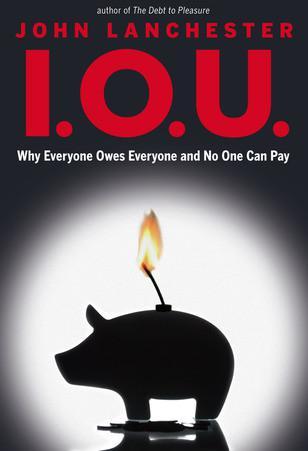
I.O.U.: Why Everyone Owes Everyone and No One Can Pay
by
John Lanchester
Published 14 Dec 2009
Alan Greenspan, the head honcho of U.S. monetary policy during the Clinton years, had presided over a period of economic growth during which the U.S. economy seemed to have achieved a highly desirable “Goldilocks point” of being neither too hot nor too cold, so that it kept growing without causing inflation. (Economists sometimes call this period of regular, noninflationary, non-boom-and-bust growth “the Great Moderation.” The term was coined by Greenspan’s successor, Ben Bernanke.) When the dot-com crash came, the fear was that the stock market bust would spread into the rest of the economy and bring it grinding to a halt; so Greenspan responded by cutting interest rates. Non-American readers may wonder what this has to do with them.

The Only Game in Town: Central Banks, Instability, and Avoiding the Next Collapse
by
Mohamed A. El-Erian
Published 26 Jan 2016
As such, even sensible market price corrections were artificially curtailed by the demonstrable notion that, supported by central banks, investors should always buy the dip. And in doing so, they were handsomely rewarded. Repeated and therefore reliable (at least in the eyes of most investors) central bank activism rekindled two of the most powerful terms in the markets’ lexicon: “goldilocks” and the “great moderation.” Their reappearance was fueled by a long period of rock-bottom interest rates—so much so that the highly respected Fed vice chair Stanley Fischer remarked in December 2014 at The Wall Street Journal’s CEO Council, “We have almost got used to thinking that zero is the natural place for the interest rate.

Unhappy Union: How the Euro Crisis - and Europe - Can Be Fixed
by
John Peet
,
Anton La Guardia
and
The Economist
Published 15 Feb 2014
Yet there was a widespread belief, echoed on occasion by the Commission and the ECB, that, in a single-currency zone with an integrated financial market, current-account imbalances did not matter any more than they did within federal countries like the United States. In the early 2000s, years that became known as the “great moderation”, when money was cheap, euro-zone countries were able to build up large external imbalances (15% of GDP in Greece). Had they still had national currencies, this would surely have provoked a response from markets. Instead, everybody benefited from low interest rates. Thus was born the great paradox of economic and monetary union.
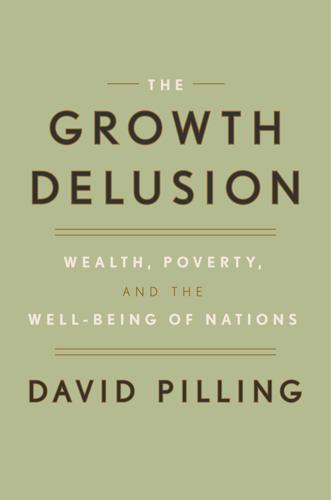
The Growth Delusion: Wealth, Poverty, and the Well-Being of Nations
by
David Pilling
Published 30 Jan 2018
In fact, our standard measures had told us little about how growth was being created: that it was built on a foundation of exploding household debt and ever cleverer (for which read “ever more stupid”) financial engineering by bonus-crazed bankers. Advanced economies had supposedly reached a new nirvana known as the Great Moderation, in which booms and busts had been consigned to history by clever technocrats and in which the market, if left to its own devices, always reverted to a happy state of equilibrium. Economic growth told us little about rising inequality nor about huge global imbalances. The US was running huge trade deficits financed by Middle Eastern oil exporters and China, both of which were busy recycling their trade surpluses into US Treasury bonds.
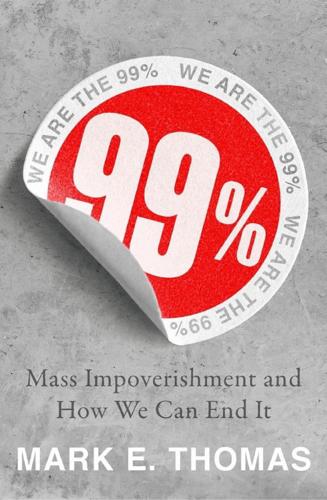
99%: Mass Impoverishment and How We Can End It
by
Mark Thomas
Published 7 Aug 2019
That premise always worked and I was shocked into disbelief that what unfolded was a complete breakdown of that premise.11 In the UK, Hector Sants – who became Chief Executive of the then UK regulator the Financial Services Authority (FSA) in July 2007 – commented: The prevailing climate at the time and indeed right up till the crisis commenced was that the market does know best… The FSA didn’t really look forward and didn’t make judgments… if there’s a risk of your business model running into difficulty we won’t come and say to you ‘you shouldn’t be doing that’. The FSA was not a forward-looking organization in respect of business model risk.12 Politicians and economists generally believed that the growth in the economy was sustainable – many talked about the Great Moderation or the NICE decade.13 Gordon Brown, then the Chancellor of the Exchequer in the UK, explained how the Labour Party had put an end to economic instability: Now, the essential first stage of our journey since 1997 has been to end damaging economic instability – to tackle the Tory boom and bust which served the interests of a privileged few but left millions insecure and worse off.14 During the early stages of the Global Financial Crisis, there was a strong tendency to view what was later described as ‘the largest financial crisis of its type in human history’15 as merely a little local difficulty which would soon be resolved.

Escape From Model Land: How Mathematical Models Can Lead Us Astray and What We Can Do About It
by
Erica Thompson
Published 6 Dec 2022
That is the context in which Andy Haldane, former chief economist of the Bank of England, called the institution’s failure to predict the 2008 global financial crisis a ‘Michael Fish moment’. During a visit to the London School of Economics in late 2008, Queen Elizabeth asked, ‘Why did nobody see it coming?’ With hindsight, there are plenty of answers for Her Majesty. Many people were lulled into a sense of security by the ‘Great Moderation’, a long period of relatively stable growth and rapid recovery from short-term downturns. Those who did see something coming, like Cassandra were not believed. Even if they had been, the likelihood is that the solutions required would have been systemic and long-term rather than immediate heroic action, which in such conditions may prompt the crisis rather than avert it.
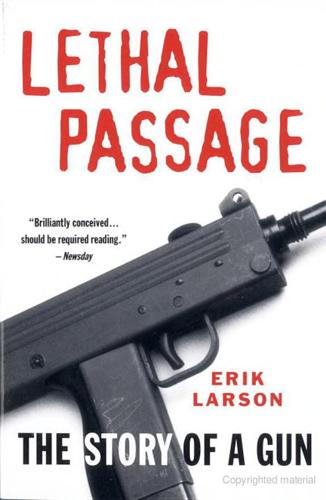
Lethal Passage
by
Erik Larson
Published 27 Jul 2011
Yet by tracing the migration of guns, one comes readily and vividly to understand where the nation’s current patchwork of gun controls have gone astray, and how easily they could be fixed to the increased satisfaction of gun owners and gun opponents alike. I chose a single gun, used in a single homicide—not even a terribly lurid homicide—primarily as a means of cutting through the rhetoric of extremists on both sides of the gun debate. Guns are a subject that too often divides America into warring camps, even though the beliefs of the great, moderate mass of Americans, whom we too readily classify in combat taxonomy as pro-gun and antigun, gun nut and gun hater, simply aren’t that deeply opposed. Somewhere along the line, extremists on both sides succeeded in shaping the debate so that no one has a choice but to leap into a trench and start firing away with whatever ammunition has been piled near at hand, be it distorted statistics or empty slogans.
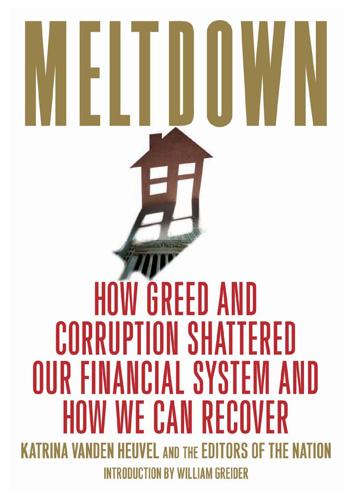
Meltdown: How Greed and Corruption Shattered Our Financial System and How We Can Recover
by
Katrina Vanden Heuvel
and
William Greider
Published 9 Jan 2009
The strategy produced very low price inflation, as close to zero as possible, which boosted prices for financial assets, stocks and bonds but also pumped up the financial bubble even further. Soaring stocks encouraged “New Economy” fantasies that the good times would last forever. His fans call Greenspan’s era “the great moderation” because there were fewer and shorter recessions, but that leaves out the deeper-running consequences of his reign. In reality the Fed was acting as a principal source of the growing inequalities in American society. Greenspan’s ultimate dilemma—his essential governing failure—was that he didn’t know how to handle “success.”

The Complacent Class: The Self-Defeating Quest for the American Dream
by
Tyler Cowen
Published 27 Feb 2017
More and more hints are coming that perhaps cyclical theories, with nasty kicks on and after their turning points, are the ones that apply. The return of the cyclical perspective is perhaps clearest in macroeconomics. Throughout most of the 1990s and considerably beyond, until about 2008, most economists believed in something called “the Great Moderation.” It was believed that the business cycle was, if not quite dead, defanged, due to better monetary policy and financial regulation. It was believed that the advanced economies could enjoy both growth and a kind of stability more or less forever, at least if our central banks would follow some textbook-level advice.
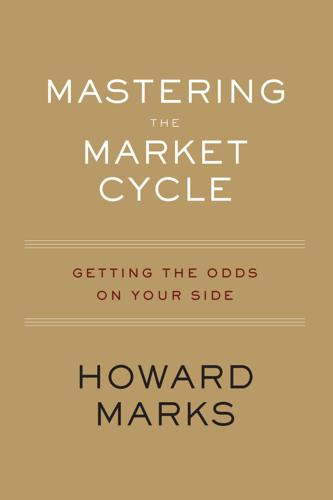
Mastering the Market Cycle: Getting the Odds on Your Side
by
Howard Marks
Published 30 Sep 2018
There was growing confidence that derivatives and other financial innovations designed to hedge and distribute risk—along with better monetary policy to respond to downturns and better technology to smooth out inventory cycles—had made devastating crises a thing of the past. The fact that this purportedly permanent prosperity was given a name like “the Great Moderation” suggests it had entered the popular consciousness. And thus it met my requirement for the riskiest possible environment: one in which there’s widespread belief that there’s no risk. On page 120, I described the media accounts to that effect that enumerated the forces that had caused risk’s elimination: Fed omniscience, unremitting demand for securities from cash-flow-rich nations, and the latest inventions from Wall Street.

The Post-American World: Release 2.0
by
Fareed Zakaria
Published 1 Jan 2008
They assumed that the growth of complex financial products (remember the infamy of credit-default swaps, which brought down AIG?) actually reduced risk by spreading it around. They believed that levels of debt that were once considered dangerous were now manageable, given what they assumed were permanently changed conditions owing to the Great Moderation. As a result, investors piled into what would normally be considered dangerous investments, all for the promise of relatively little reward. Credit spreads—the difference in yield between a U.S. treasury bond, considered the world’s safest investment, and the bonds of companies with limited track records—hit historic lows.

Lying for Money: How Fraud Makes the World Go Round
by
Daniel Davies
Published 14 Jul 2018
The Savings and Loan scandals The Savings and Loan (S&L) crisis of the 1980s set the tone for many of the financial scandals to come. It was the first really major banking crisis of the post-Bretton Woods era and marked the transition from the inflationary 1970s to the hard-money era in the USA and into the Great Moderation. It also gave the first foreshadowings of the fact that financial deregulation tends to lead to crises; the interaction between the economic conditions of the time and the two major deregulation bills was particularly destructive. And related to this, the S&L crisis happened at the start of the Reagan era, as the power of government was being rolled back and that of corporations was waxing fat, leading to a sea change in the nature of the relationship between powerful bankers and the officials meant to supervise them.
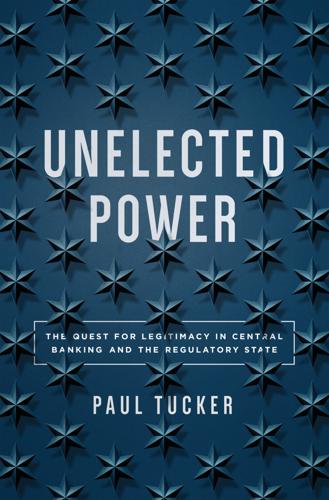
Unelected Power: The Quest for Legitimacy in Central Banking and the Regulatory State
by
Paul Tucker
Published 21 Apr 2018
They did not regain preeminence until the 1990s, when the International Monetary Fund and World Bank began prescribing independent central banks and the framework for price stability known as inflation targeting to the emerging-market economies rising around the world. But, as though revisiting their past, the Great Moderation they presided over turned nasty, twisting itself into the Great Financial Crisis and years—not yet behind us—of below-par growth. From Impotence to the Only Game in Town For the central bankers themselves, however, history has not repeated itself. Indeed, the contrast with the aftermath of the banking crisis, monetary disorder, and economic slump of the 1920s and 1930s could hardly be greater.
…
Highlighting not only the virtues of price stability but also (vigorously asserting an older mind-set) the vital role of central banks in overseeing the stability of the banking system, Volcker presciently posed the big issue in his title: “The Triumph of Central Banking?” with an emphatic question mark.15 Was no one listening? WHAT AN UNHAPPY STORY! No sooner had the leading central bankers alerted the world to the wonders of the Great Moderation in the early 2000s than the international economic and monetary system fell apart in the Great Financial Crisis. Monetary regimes, apparently so carefully designed, were found wanting. And having become, by doctrine, inclination, and expertise, overly detached from the system’s stability, there was nothing short of a reawakening among central banks to the significance of most monetary liabilities being issued by private businesses (banks).
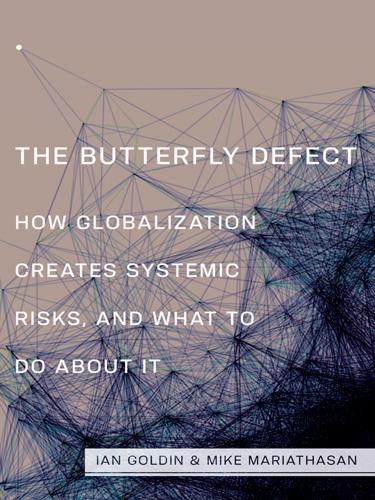
The Butterfly Defect: How Globalization Creates Systemic Risks, and What to Do About It
by
Ian Goldin
and
Mike Mariathasan
Published 15 Mar 2014
This led to a commitment to light-touch regulation and the use of overly expansionary monetary policy.37 Policy makers were taken by arguments that the future of their financial capitals and a significant share of their tax revenues required a reduction in regulatory burdens and red tape.38 They argued that regulation would constrain the innovation needed to support further economic growth and stability.39 Above all, politicians and regulators drew comfort from the economists’ consensus of “the Great Moderation,” which argued that the U.S. economy had exhibited low volatility since the 1990s and that there were no hidden risks building in the system as a result of their actions.40 The implications of national deregulation and an integrated market led to a global financial network that Andrew Haldane from the Bank of England has described as a “monoculture.”41 In the United Kingdom, the financial and insurance sector grew 108 percent between 2000 and 2011, vastly outpacing all other sectors.42 By 2011 financial and insurance services contributed over £125 billion annually to the U.K. economy and were responsible for 9.4 percent of total value added.43 As securitization of subprime mortgages increased, the government became increasingly beholden to what was becoming a homogeneous source of employment and tax revenue.

Fool's Gold: How the Bold Dream of a Small Tribe at J.P. Morgan Was Corrupted by Wall Street Greed and Unleashed a Catastrophe
by
Gillian Tett
Published 11 May 2009
Most policy makers and bankers had never seen such eerily calm markets in their careers, and they were uncertain and divided about what—if anything—they should do. At one end of the intellectual spectrum stood senior American officials, who mostly assumed that the pattern was benign. In January 2006, Ben Bernanke, an esteemed academic economist, took over at the Fed from Greenspan. Earlier in the decade, Bernanke had coined the phrase “the Great Moderation” to describe the new twenty-first-century atmosphere of calm. Both he and Greenspan seemed to think that this “moderation” had arisen because central bankers had successfully crushed inflation and because there was a savings surplus in Asia. Essentially, the argument was that Asian countries were using their foreign exchange reserves to buy US Treasuries and keep rates low.

The City
by
Tony Norfield
If the goods are supplied cheaply, that is judged to be what they are worth, and the huge profit margins made on the sale of these goods to final consumers are then supposedly due to ‘value added’ in the US after they are unloaded at the port.35 The domestic profits of US companies (such as Wal-Mart and Apple) appear to come from their domestic operations, but in reality part will depend upon these products of foreign, super-exploited labour. This would help explain the paradox that while US domestic corporate profits might look high, domestic US investment remains weak. Fans of the imperial system applauded this development – labelled the ‘Great Moderation’ in the US – where a lower cost of living for most US workers coincided with cheap inputs for business, resulting in reasonably steady growth and lower inflation. They did not look into the stratification of global production between rich and poor countries on which the development was based.
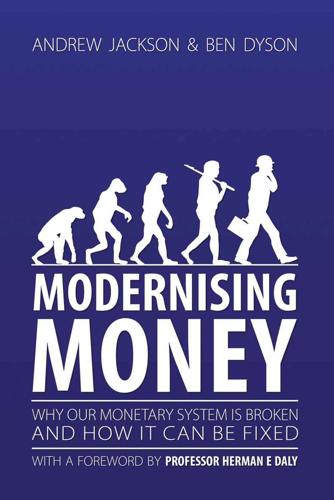
Modernising Money: Why Our Monetary System Is Broken and How It Can Be Fixed
by
Andrew Jackson (economist)
and
Ben Dyson (economist)
Published 15 Nov 2012
Arestis, P., & Sawyer, M. (2003). Can Monetary Policy Affect the Real Economy. The Levy Institute Public Policy Brief, 71. Baffes, J., & Haniotis, T. (2010). Placing the 2006/08 Commodity Price Boom into Perspective. The World Bank Development Prospects Group. Baker, G. (2007, January). Welcome to ‘The Great Moderation’. The Times. Retrieved from: http://www.timesonline.co.uk/tol/comment/columnists/article1294376.ece on 27.7.2011. Bank of England. (1999). The Transmission Mechanism of Monetary Policy. Bank of England. Bank of England. (2009). Payment Systems Oversight Report 2008. Bank of England. Bank of England. (2012).

The Bond King: How One Man Made a Market, Built an Empire, and Lost It All
by
Mary Childs
Published 15 Mar 2022
Rose lurched forward in his creepy-grandfather tilt, wanting to know how, how had Pimco seen the housing crisis coming? Simple, El-Erian said. Stocks and bonds had been living in different worlds: In “2005, 2006, into 2007, the bond market, for example, was telling you, ‘There’s a major dislocation coming, be careful.’ The equity market was telling you, ‘It’s Goldilocks; everything’s perfect; the great moderation, nothing to worry about.’ “We figured out the market is trying to tell us that there’s a major fundamental transformation going on, and the system is not ready for it.” Now, he told Rose, the unthinkable had become thinkable. The following week, McCulley appeared on CNBC with Alan Greenspan, the former chair of the Federal Reserve, who was now consulting for Pimco.
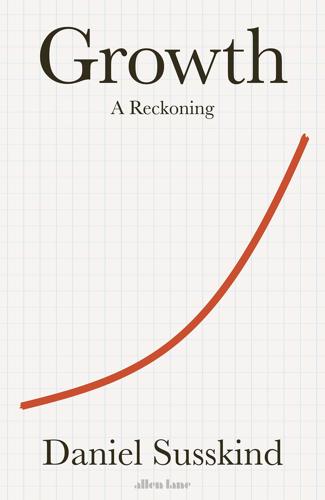
Growth: A Reckoning
by
Daniel Susskind
Published 16 Apr 2024
The Present Urgency It is hard to think of a time when the pursuit of ‘more growth’ has seemed more vital. As the twentieth century came to an end, leaders were confident that they knew what they were doing, that steadily increasing prosperity was a sensible and achievable shared goal. In the United States, economists spoke of the ‘great moderation’; in the United Kingdom, politicians celebrated the ‘end of boom and bust’. The idea that sustained growth could be achieved through modest interventions was taken for granted. And our apparent success created the impression that an expanding economy was the norm, with any slowdown to be regarded as an unfortunate but temporary exception.
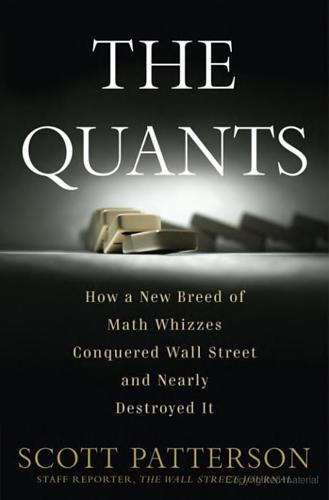
The Quants
by
Scott Patterson
Published 2 Feb 2010
Economists were full of talk of a Goldilocks economy—not too hot, not too cold—in which steady growth would continue as far as the eye could see. A brilliant Princeton economist, Ben Bernanke, had just taken over the helm of the Federal Reserve from Alan Greenspan. In February 2004, Bernanke had given a speech in Washington, D.C., that captured the buoyant mood of the times. Called “The Great Moderation,” the speech told of a bold new economic era in which volatility—the jarring jolts and spasms that wreaked havoc on people’s lives and their pocketbooks—was permanently eradicated. One of the primary forces behind this economic Shangri-la, he said, was an “increased depth and sophistication of financial markets.”

The Blockchain Alternative: Rethinking Macroeconomic Policy and Economic Theory
by
Kariappa Bheemaiah
Published 26 Feb 2017
Whether we use Traditional structural models, Rational expectations structural models, Equilibrium business-cycle models, or Vector Auto Regression (VAR) models (See Notes ‘Types of Macroeconomic Models’), the base parameters on which these models are build are assumptions, estimations and equilibrium. Secondly there is not real inclusion of the financial market. The family of DSGE macroeconomic models, which we have rapidly covered, emerged as a synthesis between the Chicago school of thought and the new Keynesian approach over the period of the Great Moderation (1983‐2008). This was a period during which the relative stability of the economy allowed for policy approaches that could only rely in the use of monetary policy (i.e.: the rate of interest). This was because the Chicago led thought considered that all that was needed to face business cycles and/or recessive trends was an active monetary policy.

Prosperity Without Growth: Foundations for the Economy of Tomorrow
by
Tim Jackson
Published 8 Dec 2016
‘The four horsemen of automaticity: awareness, intention, efficiency, and control in social cognition’. In R. Wyer and T. Skrull (eds), Handbook of Social Cognition, 2nd edition, vol. 1, Basic Processes. Hillsdale, NJ: Lawrence Erlbaum, pp. 1–40. Barwell, Richard and Oliver Burrows 2011. Growing Fragilities – Balance Sheets in the Great Moderation. London: Bank of England. Baudrillard, Jean 1970. The Consumer Society – Myths and Structures, reprinted 1998. London: Sage Publications. Bauman, Zygmunt 2007. Consuming Life. Cambridge: Polity Press. Bauman, Zygmunt 1998. Work, Consumerism and the New Poor. Buckingham: Open University Press.
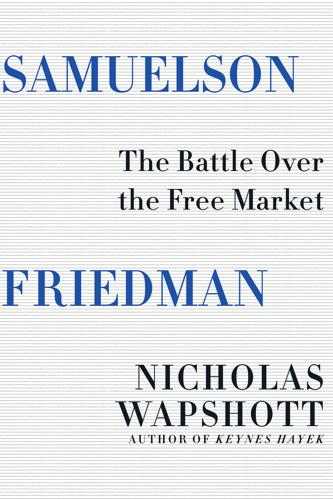
Samuelson Friedman: The Battle Over the Free Market
by
Nicholas Wapshott
Published 2 Aug 2021
And if in 2008 a second Great Depression had been narrowly avoided by a return to Keynes-like policies, the financial freeze served to upset the cozy assumption held by Bernanke and others that the bad old days of bank runs and serial bankruptcies had been replaced by the sunlit certainty of the Great Moderation. The events of 2008 undermined the logic of the rational-expectations school who argued that those who operate the markets know enough to avoid catastrophe. Why had there been no “rational expectation” of a financial freeze? Instead, America was to endure a painful, decade-long haul out of the ditch.
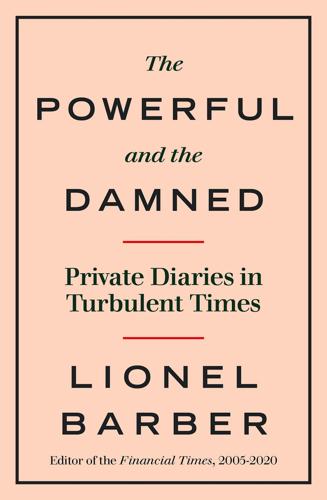
The Powerful and the Damned: Private Diaries in Turbulent Times
by
Lionel Barber
Published 5 Nov 2020
King also prides himself on his elegant prose, often using sporting metaphors which deflect attention from his status as an unabashed intellectual, a brilliant, if occasionally prickly economist who has taught at Harvard, MIT and the London School of Economics. Lunch soon turns into a tutorial on our extraordinary financial times. For most of his lifetime, King says, the most important challenge facing central bankers and policy-makers was the scourge of inflation. More recently, the world has experienced the ‘Great Moderation’. China and India have massively increased the supply of labour available to industry around the world. Labour-intensive goods have become more abundant and also cheaper. ‘China has exported deflation to the rest of the world.’ This is a new paradigm of sorts. Inflation appears to have been tamed.
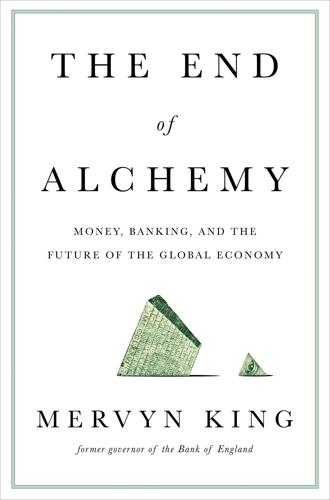
The End of Alchemy: Money, Banking and the Future of the Global Economy
by
Mervyn King
Published 3 Mar 2016
At their outset the ill-fated nature of the three experiments was not yet visible. On the contrary, during the 1990s the elimination of high and variable inflation, which had undermined market economies in the 1970s, led to a welcome period of macroeconomic stability. The Great Stability, or the Great Moderation as it was dubbed in the United States, was seen – as in many ways it was – as a success for monetary policy. But it was unsustainable. Policy-makers were conscious of problems inherent in the first two experiments, but seemed powerless to do anything about them. At international gatherings, such as those of the IMF, policy-makers would wring their hands about the ‘global imbalances’ but no one country had any incentive to do anything about it.
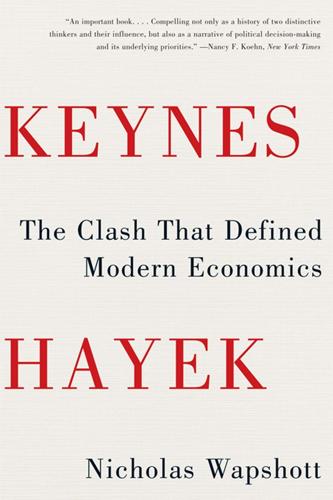
Keynes Hayek: The Clash That Defined Modern Economics
by
Nicholas Wapshott
Published 10 Oct 2011
In a ninetieth birthday tribute to Friedman, Ben Bernanke,15 the Federal Reserve chairman at the time, offered a belated apology for the Fed’s shortcomings in the 1920s. “Regarding the Great Depression,” he declared, “you’re right. We did it. We’re very sorry. But, thanks to you, we won’t do it again.”16 The individual who bound together the whole of this period, dubbed the “Great Moderation,” and who came to personify the bipartisan approach of a largely Friedmanite monetary policy within a generally managed economy, was Alan Greenspan. His stewardship of the Federal Reserve from 1987 to 2006 was hailed as masterly. If he made false steps, they did not become apparent until long after he had departed.

Stocks for the Long Run, 4th Edition: The Definitive Guide to Financial Market Returns & Long Term Investment Strategies
by
Jeremy J. Siegel
Published 18 Dec 2007
The last economic expansion in the United States lasted a record 10 years from March 1991 to March 2001. Economic expansions in Europe have lasted even longer: the last recession in the United Kingdom ended in 1995 and much of the Eurozone has been recession free for more than a decade. Economists call this trend toward greater macroeconomic stability “The Great Moderation.”18 The moderation has been attributed to better monetary policy; a larger service sector, which is inherently more stable than the goods sectors; and better inventory and production control, enabled in part by the information revolution. Whatever the reasons, greater macroeconomic stability should lead to greater stability of earnings and a lower equity premium.

How I Became a Quant: Insights From 25 of Wall Street's Elite
by
Richard R. Lindsey
and
Barry Schachter
Published 30 Jun 2007
I respected their views, since they seemed to be more conversant with American popular culture than me. How Not to Get a PhD, Continued After harvesting a degree from Munich University, the time came to return to the States and see if I could earn a living. Although it had nothing to do with my personal choices, The Great Moderation had begun, and the prospects for finding work were far better than during the leaden 1970s. Back in New York, my first job was as an economist at the Federal Reserve Bank of New York, in a department quaintly named the Industrial Economies Division, in contrast to the Developing Economies Division.

People, Power, and Profits: Progressive Capitalism for an Age of Discontent
by
Joseph E. Stiglitz
Published 22 Apr 2019
Indeed, even as the economy was failing to deliver prosperity for large parts of the population, the champions of a new era of financialization, globalization, and technological advances were bragging about the “new economy” that was destined to bring ever-greater prosperity, by which they seemed to mean simply a higher level of GDP. Some of our economic leaders—including successive heads of the Federal Reserve—bragged about the “great moderation,” how we had finally tamed the business cycle, the fluctuations in output and employment that had marked capitalism from the start.1 The financial crisis of 2008 showed that our seeming prosperity had been built on a house of cards, or more precisely, a mountain of debt. As new data came in giving a deeper picture of the economy, it became increasingly clear that there were long-standing and deep-seated problems.

The Billionaire Raj: A Journey Through India's New Gilded Age
by
James Crabtree
Published 2 Jul 2018
A clear-out began of companies cosseted under the old regime, via deregulation, foreign investment and heightened competition. In sector after sector, from airlines and banks to steel and telecoms, the ranks of India’s tycoons began to swell. Yet this growth was also intimately bound up in a larger global story. The early 2000s were the heyday of the “great moderation,” a moment when world interest rates stayed low and industrialized nations grew handsomely. China entered the World Trade Organization in 2001, kicking off one of the most remarkable expansions of any country in history. Booming Chinese exports, along with the demand for commodities they fueled, boosted other developing economies, including India’s.

Limitless: The Federal Reserve Takes on a New Age of Crisis
by
Jeanna Smialek
Published 27 Feb 2023
Frank Annunzio, an Illinois Democrat, once told the Fed chair that he “would make a very excellent prisoner of war” because he “wouldn’t tell the enemy a thing.”[28] Both popular opinion and the economic consensus shifted dramatically in Volcker’s favor in the years and decades following his reign, as inflation moderated, growth stabilized, and the damage his decisions had inflicted on lives and livelihoods faded. He put the economy through a painful period that, many researchers now believe, laid the groundwork for decades of healthy growth. During the late 1980s and 1990s, an era often called the Great Moderation, unemployment trended steadily lower, productivity took off, and the debate over whether the Fed was setting its priorities incorrectly largely disappeared. Slower inflation was seen as a victory by economists and politicians alike. Volcker went from contemporary villain to historical hero.
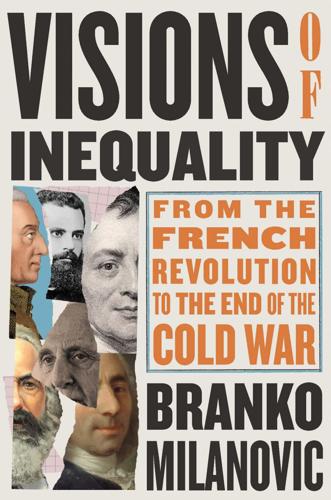
Visions of Inequality: From the French Revolution to the End of the Cold War
by
Branko Milanovic
Published 9 Oct 2023
Epilogue: The New Beginning Inequality studies exploded in the first decades of the twenty-first century, and there were several objective, or external, reasons for this. The straitjacket of classlessness and “rational agents” imposed by Cold War economics was broken. Research was becoming freer just as income inequality, which had been rising for thirty years, was becoming more obvious. The world was leaving an era when rich Wall Street bankers celebrated the “Great Moderator” Alan Greenspan—who served nearly a decade as Fed Chair (1987–1996) through three administrations, Reagan, Bush Senior, and Clinton—even to the extent of spending thousands of dollars for portraits of him to adorn their Martha’s Vineyard and Cape Cod homes. 1 But at the same time, the US middle class was struggling and the minimum wage had fallen lower (on a price-adjusted basis) than its level in 1968.

Investing Amid Low Expected Returns: Making the Most When Markets Offer the Least
by
Antti Ilmanen
Published 24 Feb 2022
Thus, fast-growing centuries occurred amidst much lower real yields (and as one reconciling feature, more abundant capital).5 Figure 2.4 also shows that after centuries of little net inflation, the 20th century brought with it more persistent price rises, first near the two world wars. Later the Great Inflation in the 1970s was a scary early experience of the fiat money world, albeit mainly caused by spiking oil prices. The Great Moderation era since 1982 was characterized by lower macroeconomic volatility, disinflation, and global convergence toward 2% inflation. Inflation expectations also became less sensitive to labor market conditions and short-term inflation. It remains debated how much these benign developments reflected greater central bank independence and credibility (gravitational pull to their targets) versus mere luck.6 The Global Financial Crisis triggered widespread inflation concerns, given all the stimulus, yet the 2010s turned out to be a very disinflationary decade.

Inflated: How Money and Debt Built the American Dream
by
R. Christopher Whalen
Published 7 Dec 2010
So the coming financial instability and economic crises, with the twin risks of deflation followed by inflation will be driven not only by the unwillingness to rein in—via proper regulation and supervision—a financial system run amok. They will also be driven by the deeper economic and social forces that have led to income and wealth inequality and a massive rise in private and public debts given the stresses of rising inequality and globalization of trade and finance. So we can unfortunately say goodbye to the Great Moderation and hello to the era of financial instability/crises and economic insecurity. Chris provides us with a fascinating and deep financial history and road map of how we have gone through repeated cycles of great moderations followed by asset and credit bubbles leading to financial crises driven by excessive debt and leverage in the private sector (households, banks, corporate firms) leading to excessive public sector debt accumulation—via socialization of private losses—that leads to twin risks of outright default (usually by U.S. states) or use of the inflation tax through monetization of fiscal deficits (at the federal level).

Civilization: The West and the Rest
by
Niall Ferguson
Published 28 Feb 2011
Nemesis came first in the backstreets of Sadr City and the fields of Helmand, which exposed not only the limits of American military might but also, more importantly, the naivety of neo-conservative visions of a democratic wave in the Greater Middle East. It struck a second time with the escalation of the subprime mortgage crisis of 2007 into the credit crunch of 2008 and finally the ‘great recession’ of 2009. After the bankruptcy of Lehman Brothers, the sham verities of the ‘Washington Consensus’ and the ‘Great Moderation’ – the central bankers’ equivalent of the ‘End of History’ – were consigned to oblivion. A second Great Depression for a time seemed terrifyingly possible. What had gone wrong? In a series of articles and lectures beginning in mid-2006 and culminating in the publication of The Ascent of Money in November 2008 – when the financial crisis was at its worst – I argued that all the major components of the international financial system had been disastrously weakened by excessive short-term indebtedness on the balance sheets of banks, grossly mispriced and literally overrated mortgage-backed securities and other structured financial products, excessively lax monetary policy on the part of the Federal Reserve, a politically engineered housing bubble and, finally, the unrestrained selling of bogus insurance policies (known as derivatives), offering fake protection against unknowable uncertainties, as opposed to quantifiable risks.
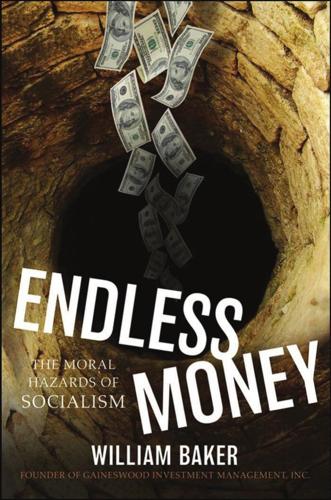
Endless Money: The Moral Hazards of Socialism
by
William Baker
and
Addison Wiggin
Published 2 Nov 2009
But if leverage remains high, almost certainly a series of crises such as was the case in Rome might ultimately bring the pendulum back toward gold. Chapter 19 America Invicta ederal Reserve officials refer to the period of economic recovery that followed the collapse of the Internet bubble as “The Great Moderation,” because inflation, interest rates, and the volatility of financial markets were low. The credit meltdown was unexpected, and it has spawned conflicting prognostications ranging from deflation to hyperinflation. Unprecedented fiscal and monetary policy stimulation has been undertaken, but the possibility of hindering growth through higher taxation looms.

Capitalism in America: A History
by
Adrian Wooldridge
and
Alan Greenspan
Published 15 Oct 2018
The 1987 crash, when the Dow fell 22.6 percent in a single day, and the 1998 crash, when the Dow fell 11.5 percent over three days when Russia defaulted on its foreign debts, had left no long-standing impact on GDP. Taken together, these experiences led many sophisticated investors to believe that future contractions would prove no worse than a typical postwar recession. An additional reason was that the “great moderation,” which began in the 1980s, encouraged complacency about leverage. As late as April 2007, the IMF noted that “global economic risks [have] declined since . . . September 2006. . . . The overall U.S. economy is holding up well . . . [and] the signs elsewhere are very encouraging.” The banking regulations adopted internationally under the Basel Accords did induce a modest increase in capital requirements leading up to the crisis.

Termites of the State: Why Complexity Leads to Inequality
by
Vito Tanzi
Published 28 Dec 2017
Termites in Stabilization Role 243 The campaign some decades ago to make central banks politically independent had been based on the belief that the goals of central banks were the aforementioned ones. In the 1990s and in the first few years of the new millennium some economists concluded that central banks had in fact become so efficient and wise, and monetary policy so powerful, that they had been responsible for the “great moderation,” a relatively long period of economic expansion without major fluctuations or inflation that had lasted until the middle of the first decade of the new century. Some economists had gone so far as to believe that major fluctuations had become phenomena of the past. The policies pursued by the central banks had been assumed to have played a major role in the steady economic expansion of that period.

The Making of Global Capitalism
by
Leo Panitch
and
Sam Gindin
Published 8 Oct 2012
After the brief recession of the early 1990s, this led to an economic expansion of unprecedented length, during which unemployment dropped to almost 4 percent, its lowest in thirty years. By the beginning of the new millennium, mainstream economists had begun to refer to the whole period after the mid 1980s as the “Great Moderation,” while pundits in the New York Times asked “what word but ‘empire’ describes the awesome thing that America is becoming?”95 But if the angst-ridden 1980s thesis of “American decline” by then looked quite overblown, it was equally misleading to describe the subsequent period in the self-satisfied terms of economic stability.
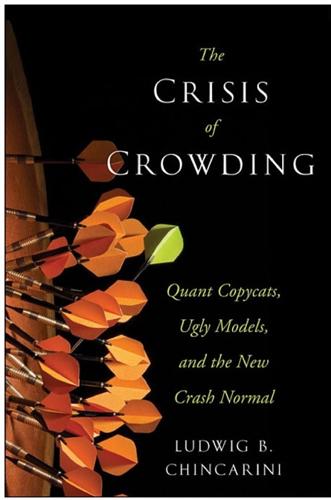
The Crisis of Crowding: Quant Copycats, Ugly Models, and the New Crash Normal
by
Ludwig B. Chincarini
Published 29 Jul 2012
There was very high inflation early on in the 1980s until Volker and Reagan attacked it full on and brought it down from double-digit levels to low single-digit levels. From 1990 to 2008, inflation remained quite low. One of the reasons that inflation remained so low is that the Federal Reserve specifically focused on a low target inflation rate. Some people have called this period the great moderation, which refers to the stable inflation, stable economy that has been experienced since the mid-1980s, prior to the financial crisis. Then came the financial crisis. Since the financial crisis began annual inflation has been relatively low at 1.97%. This average contains a period of deflation.